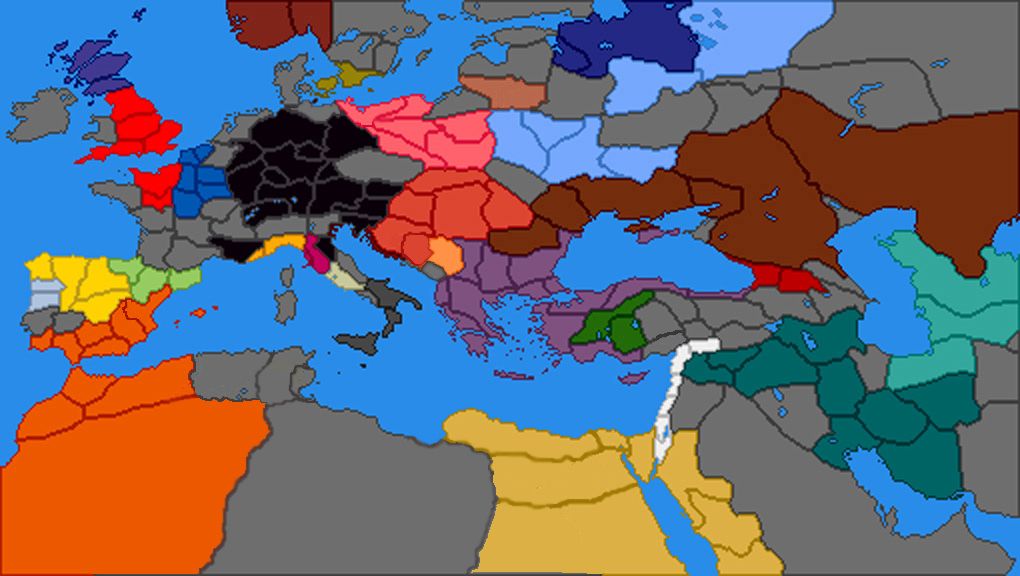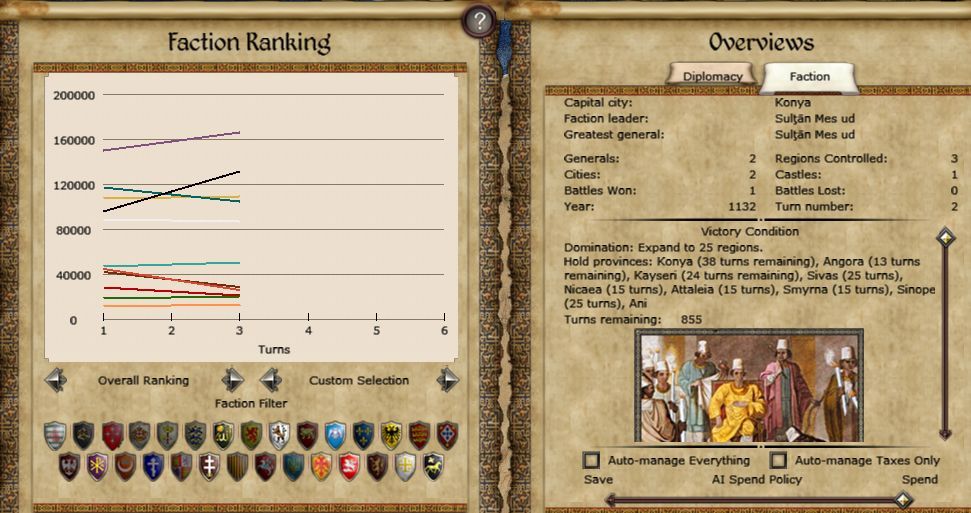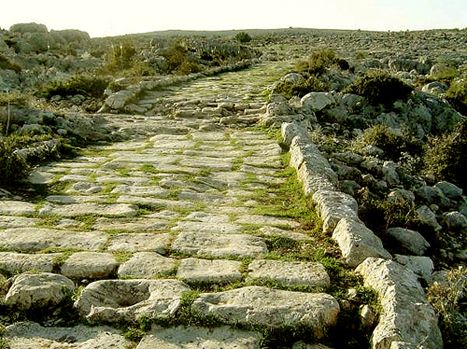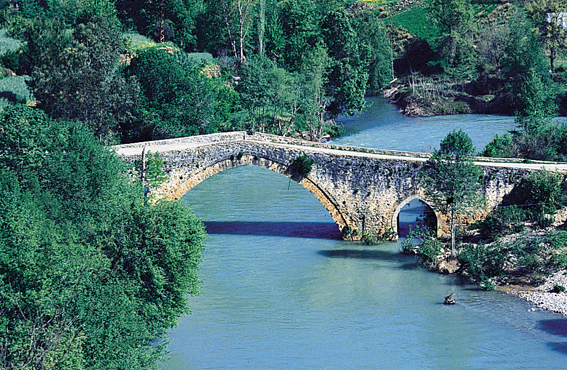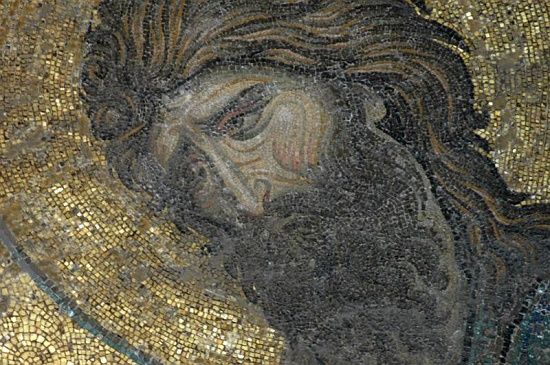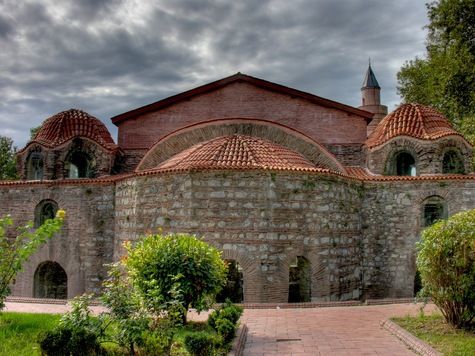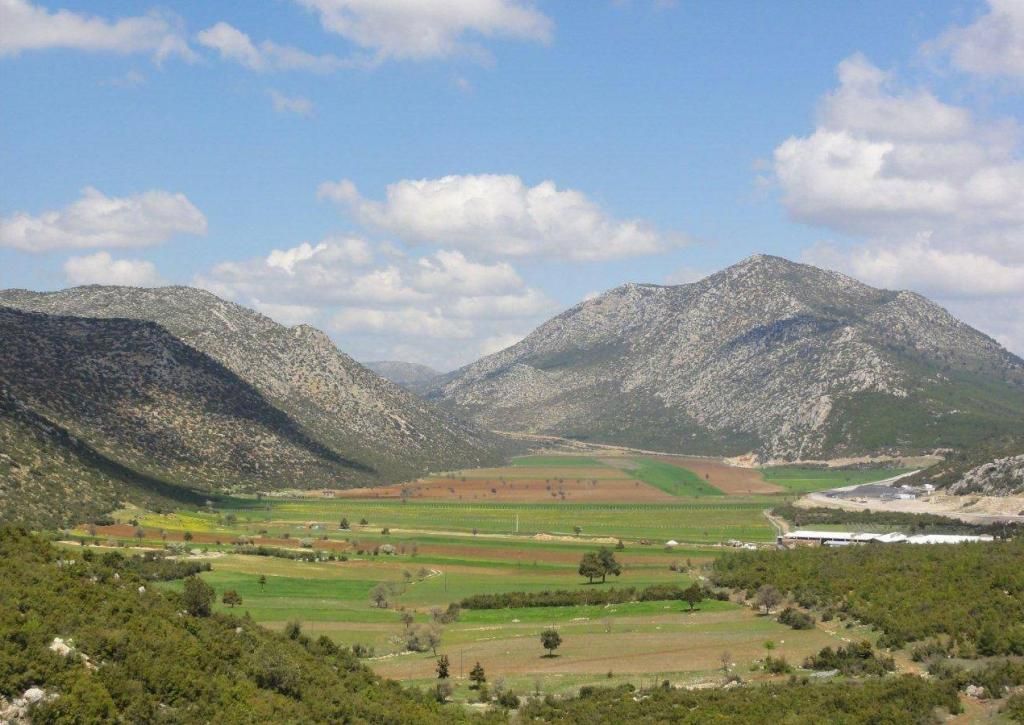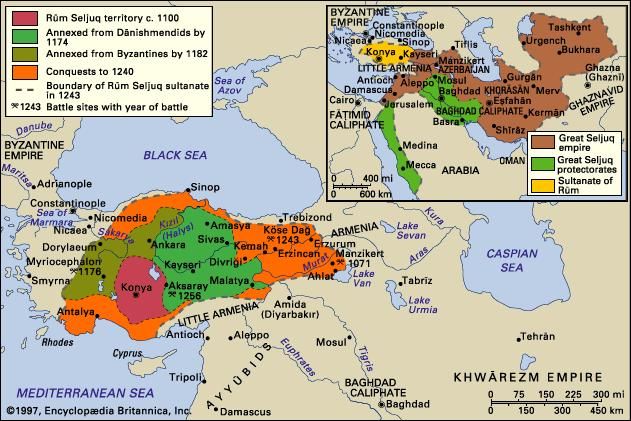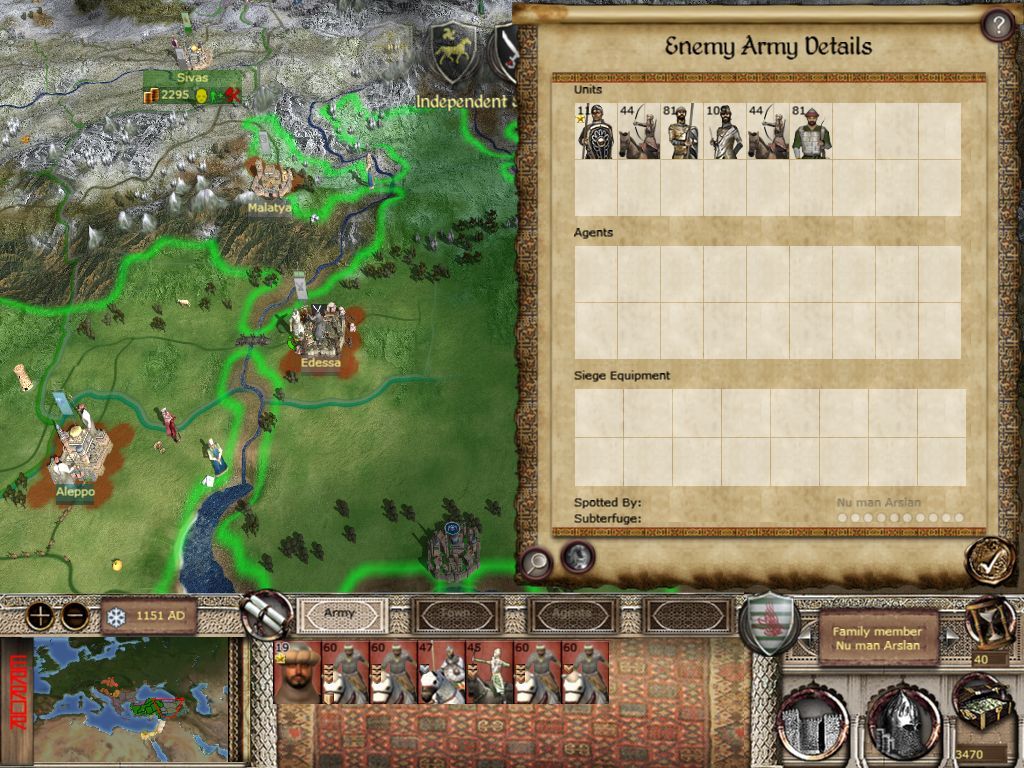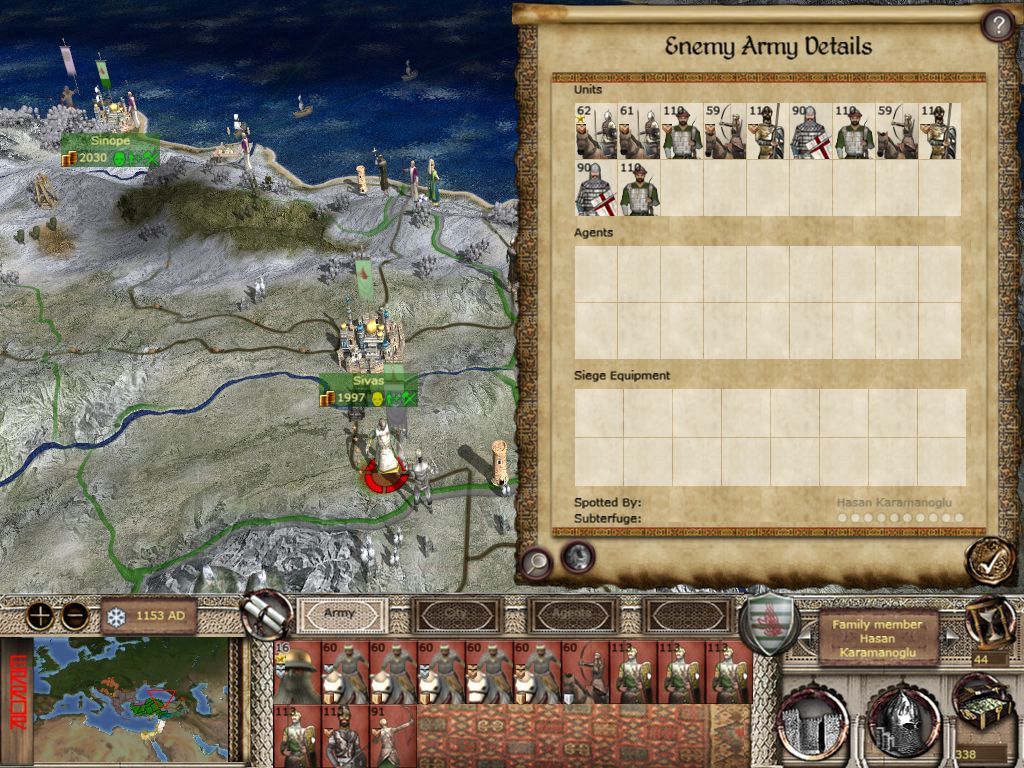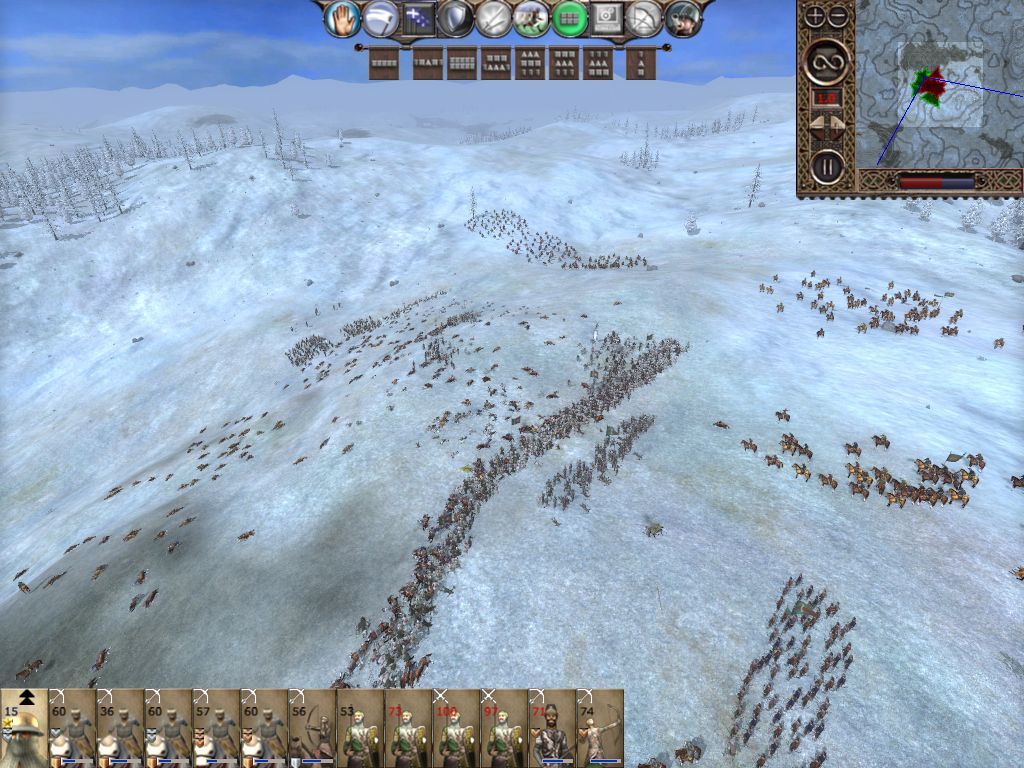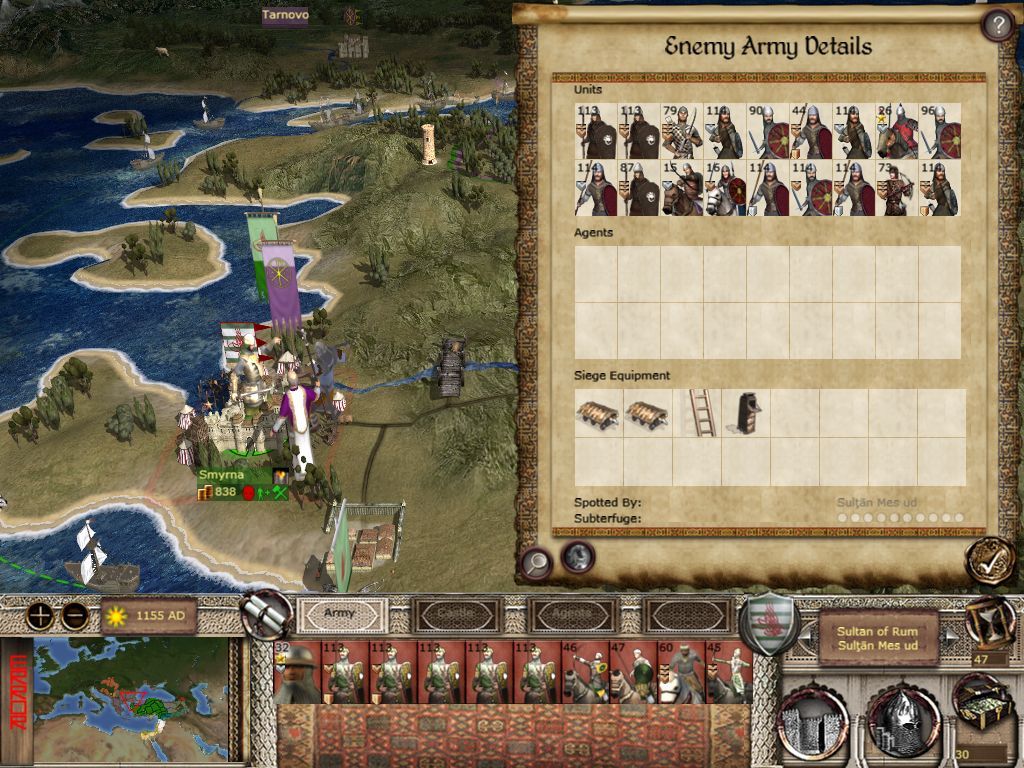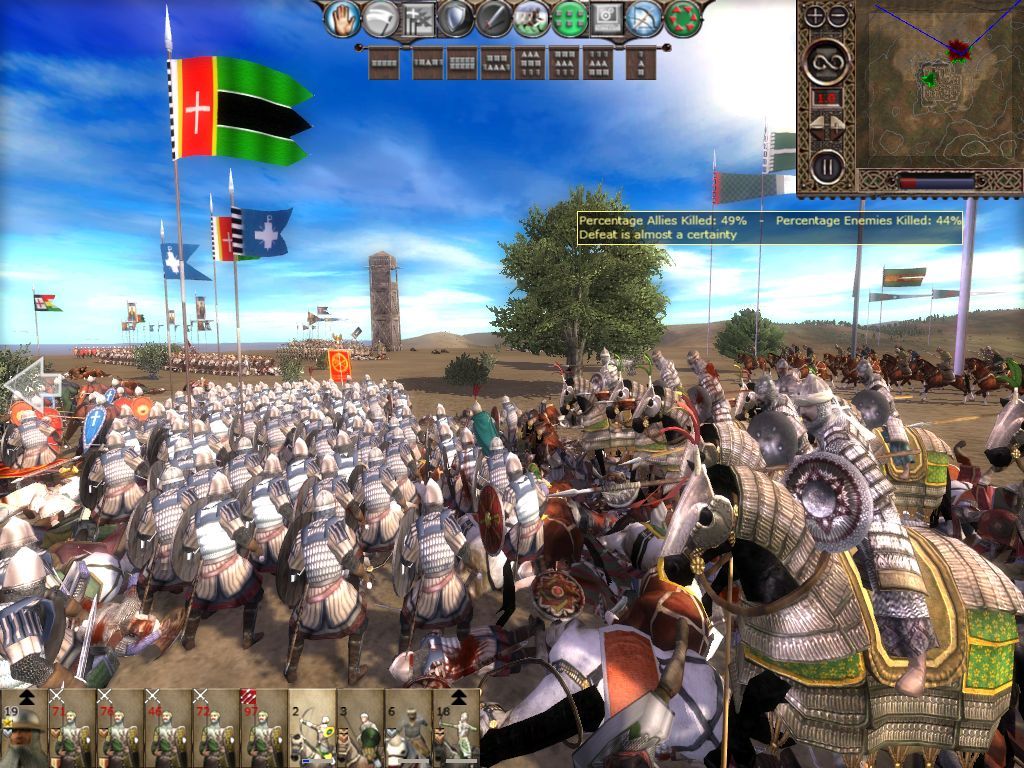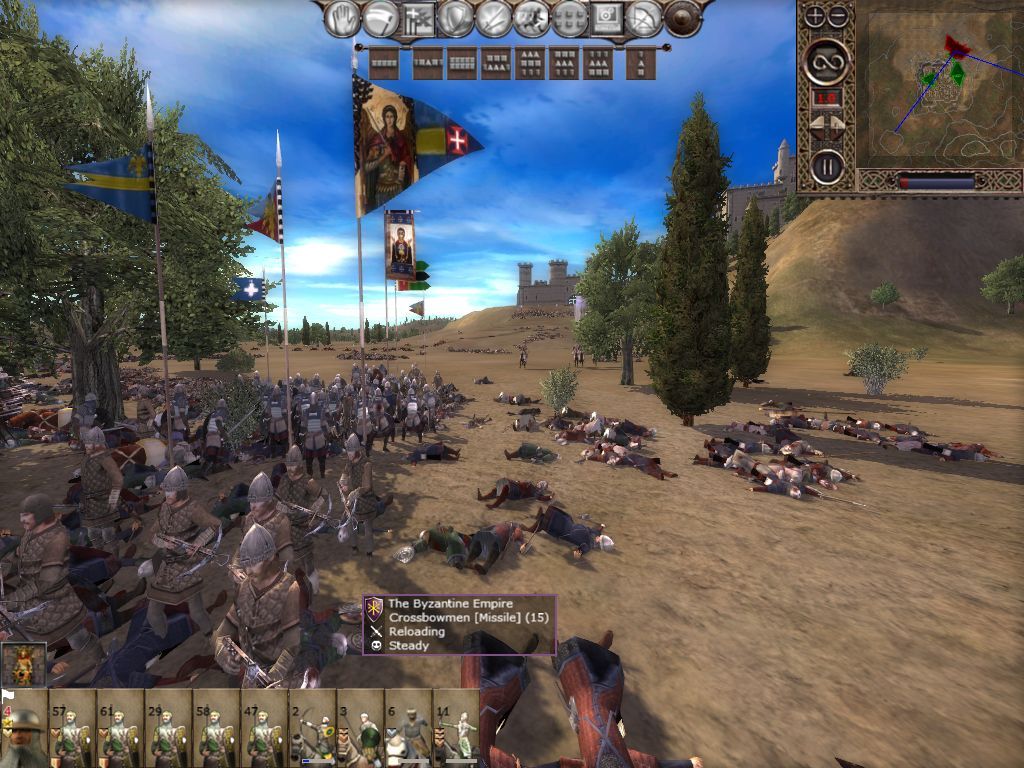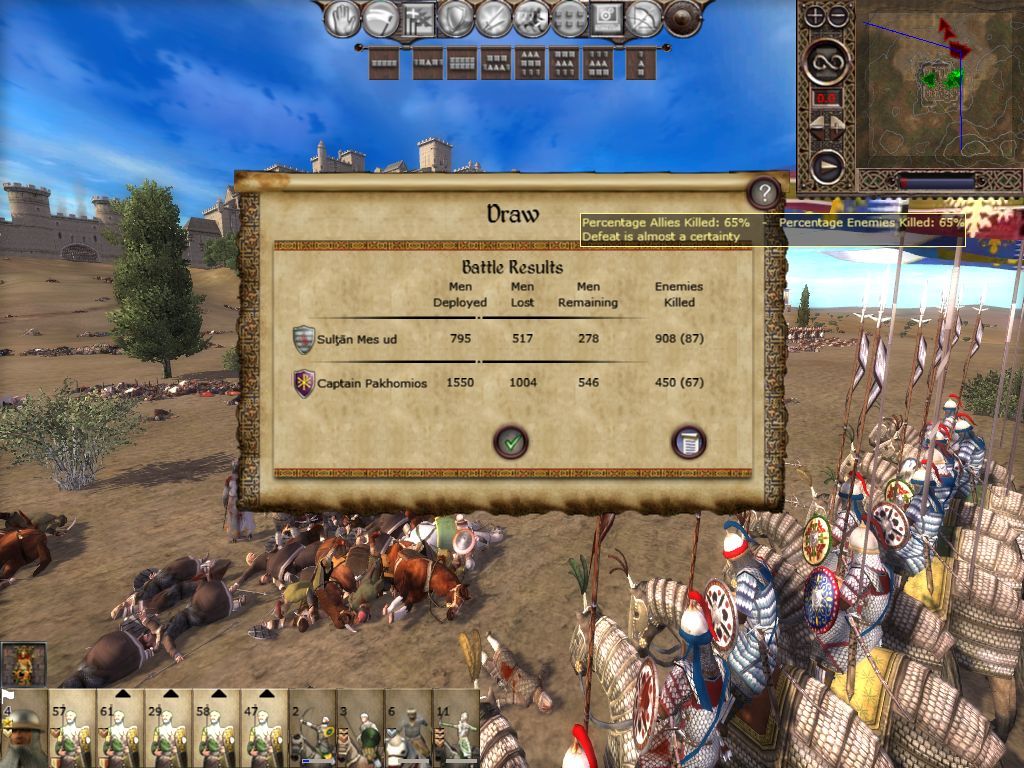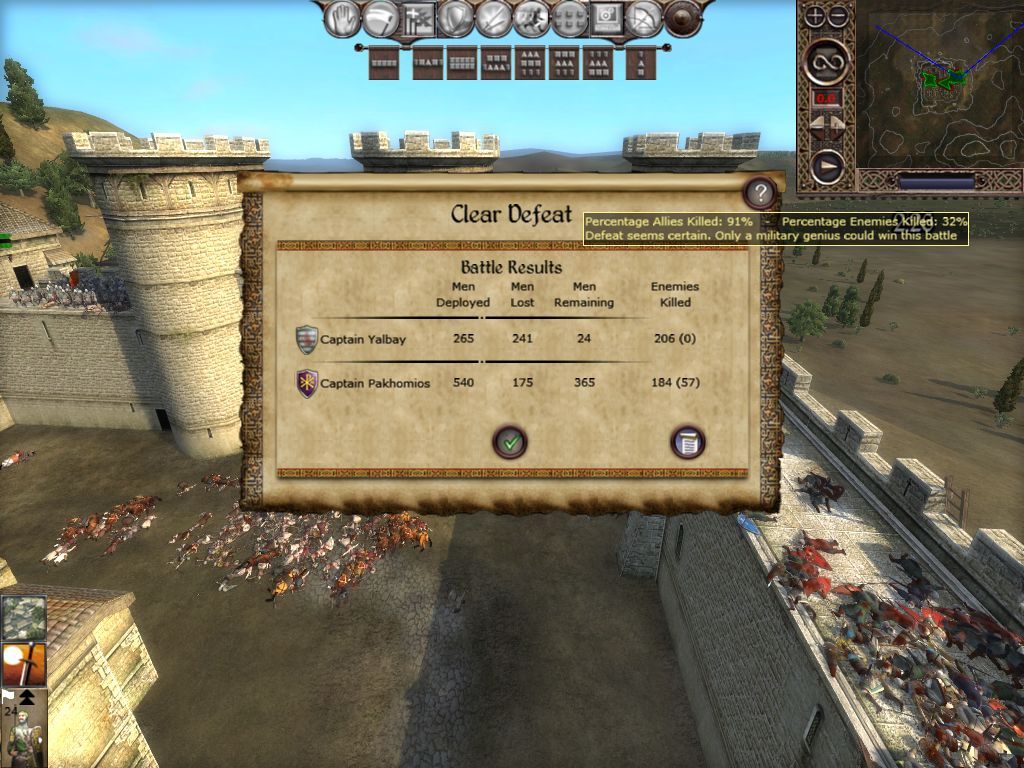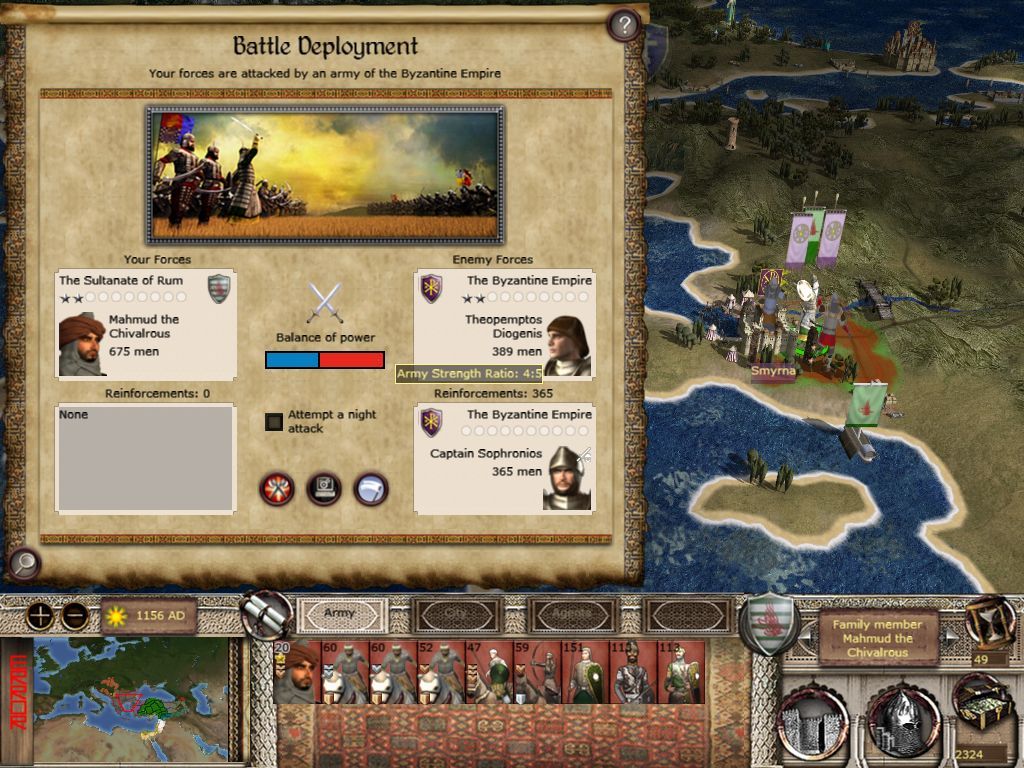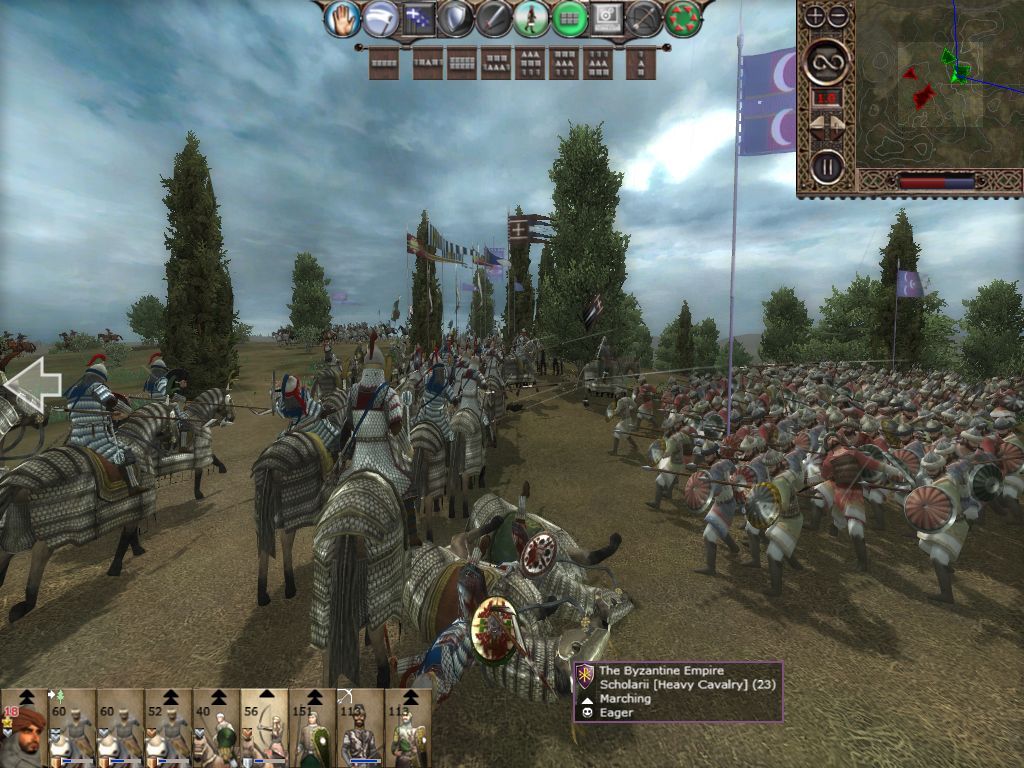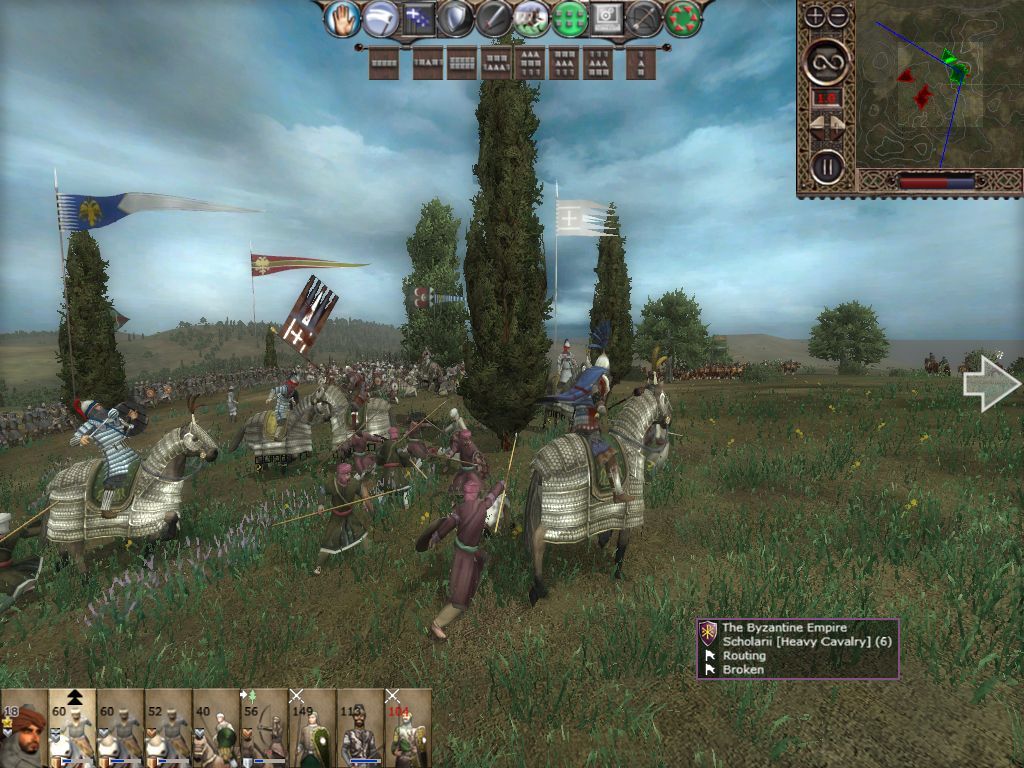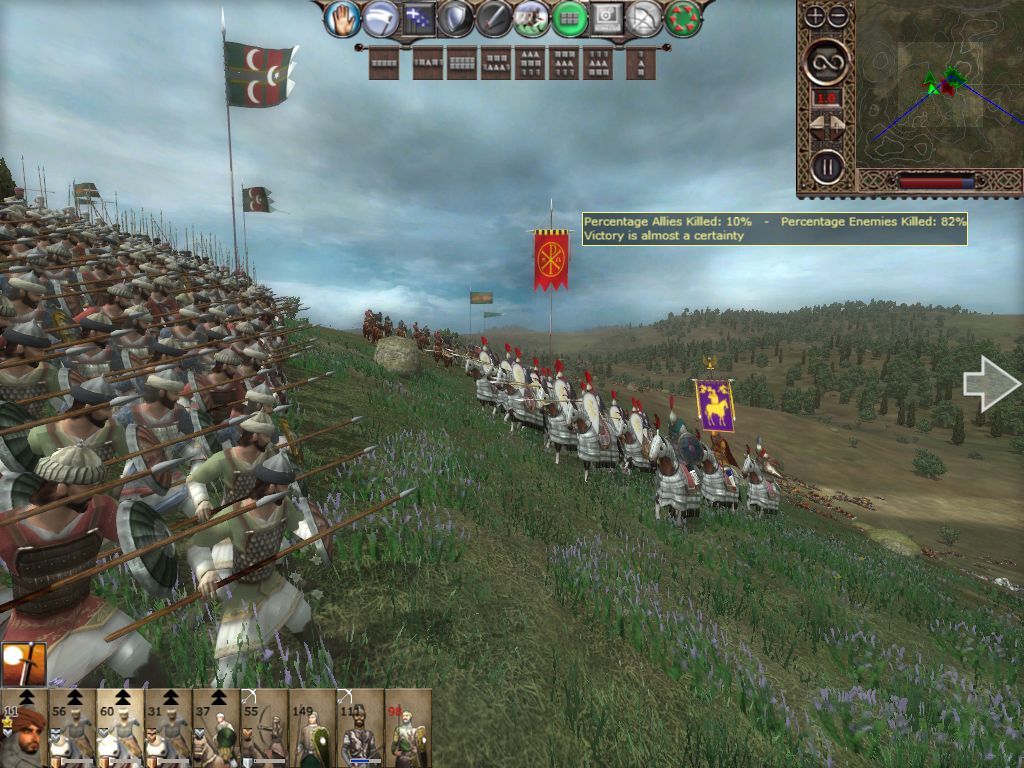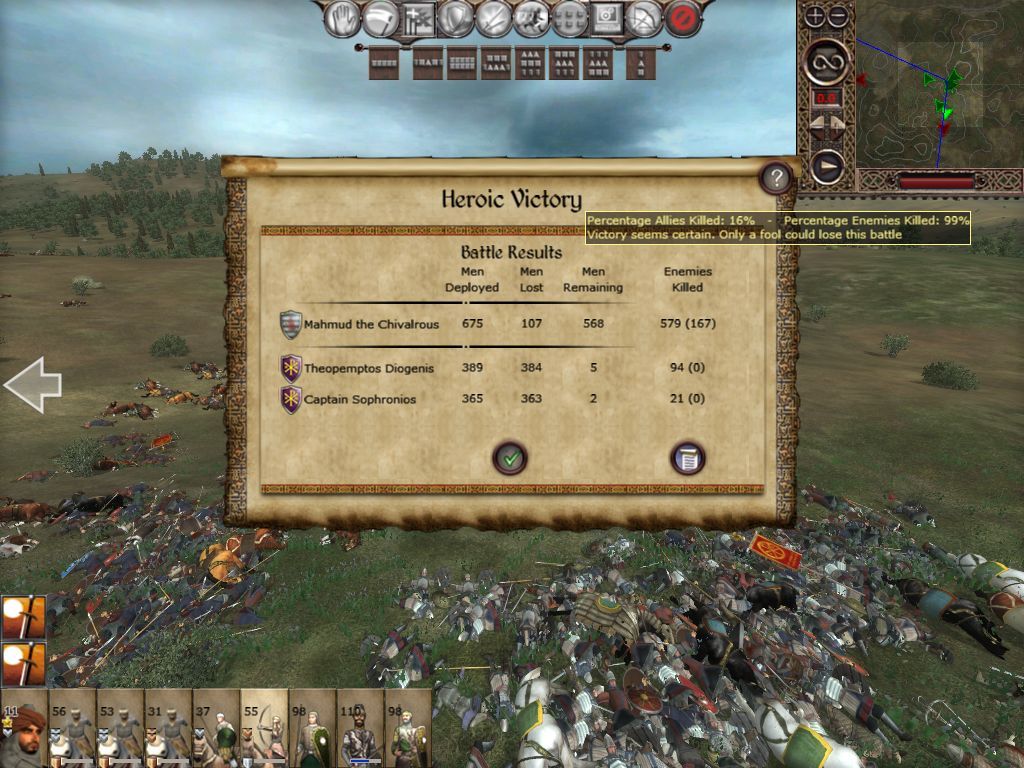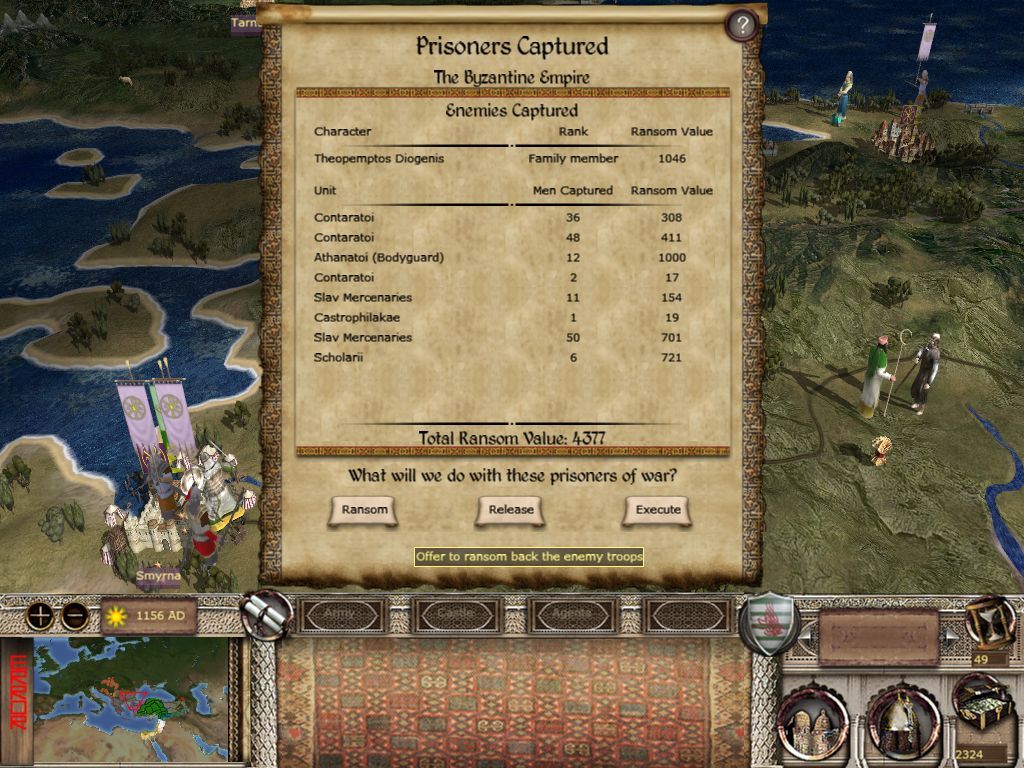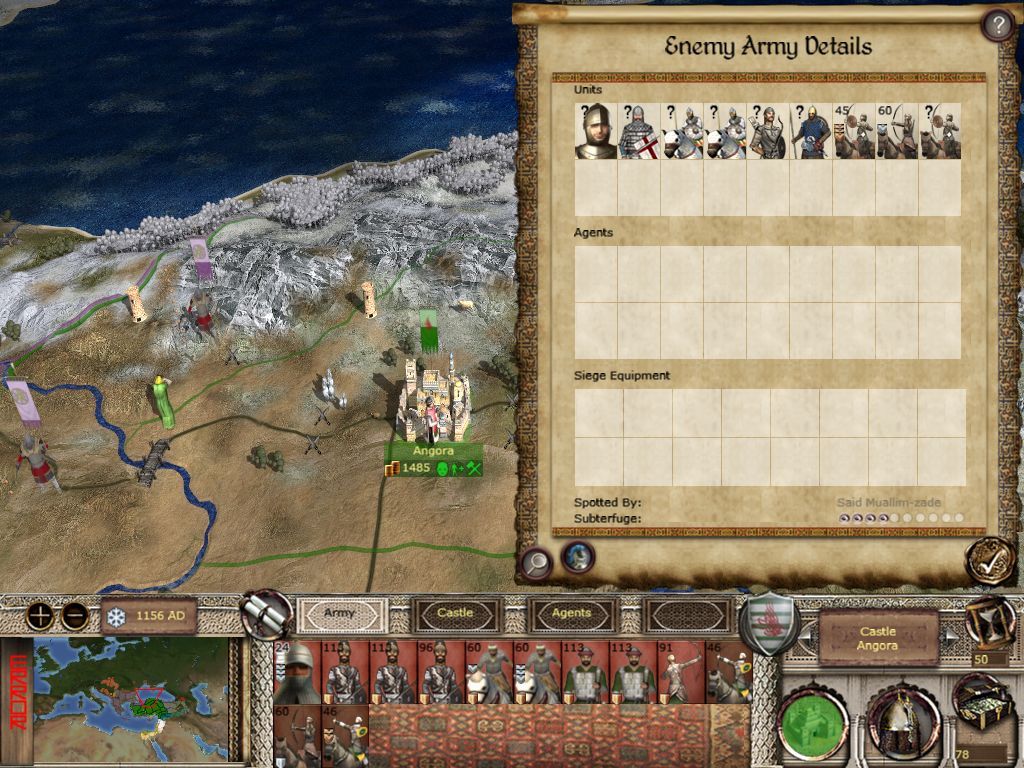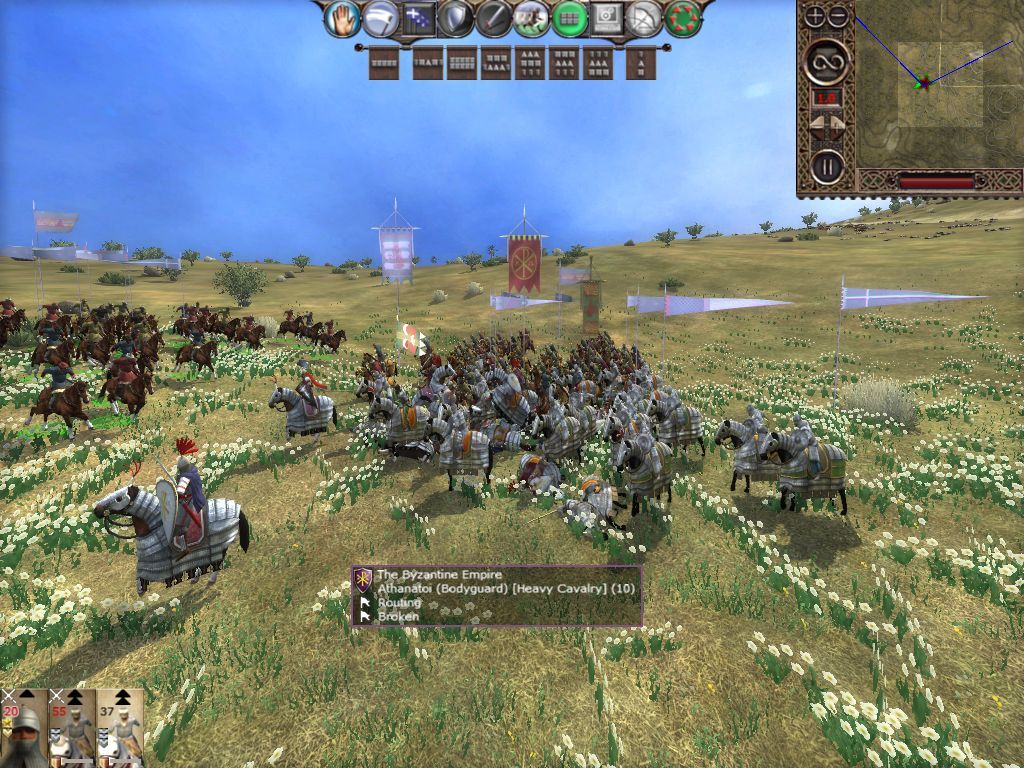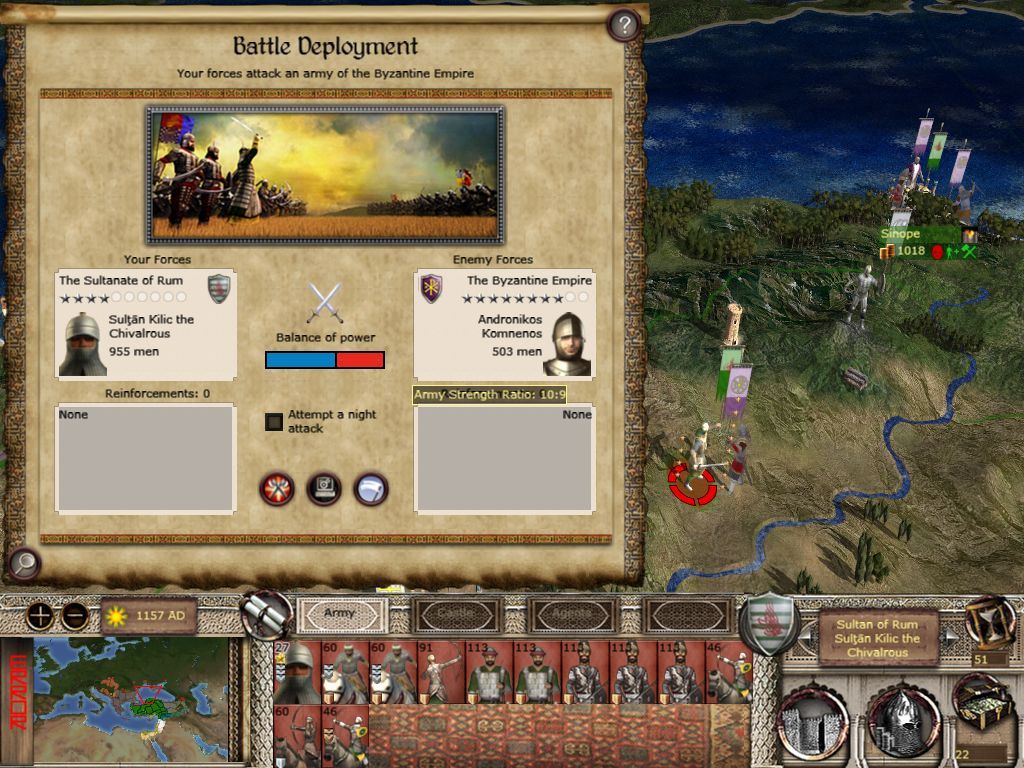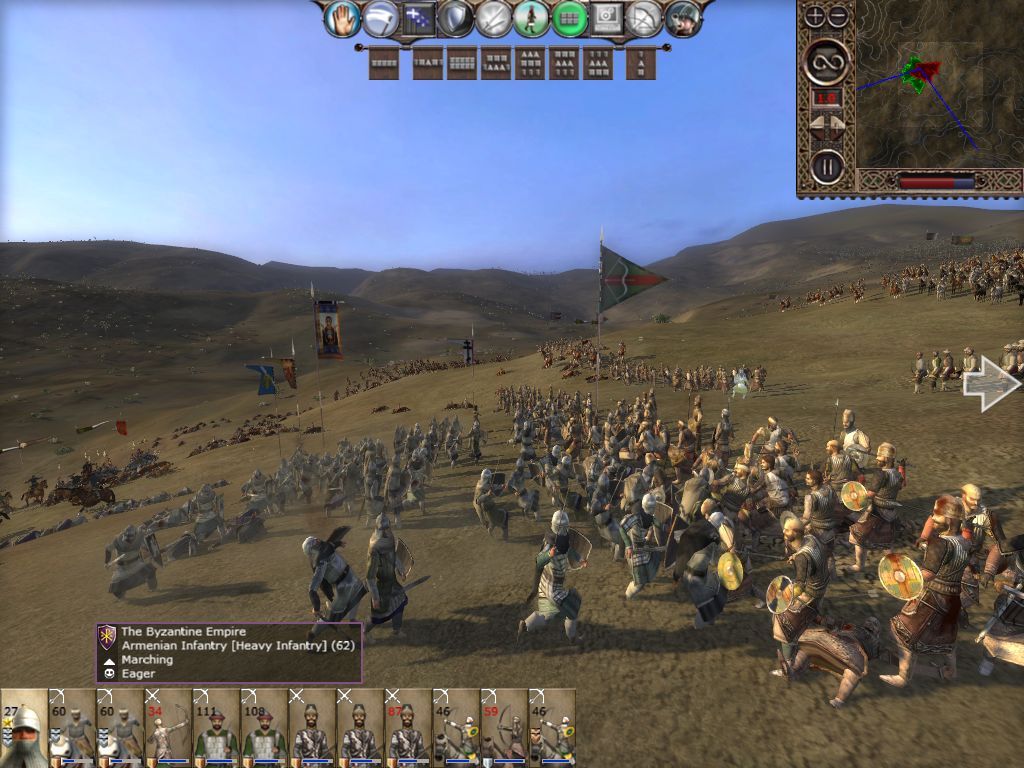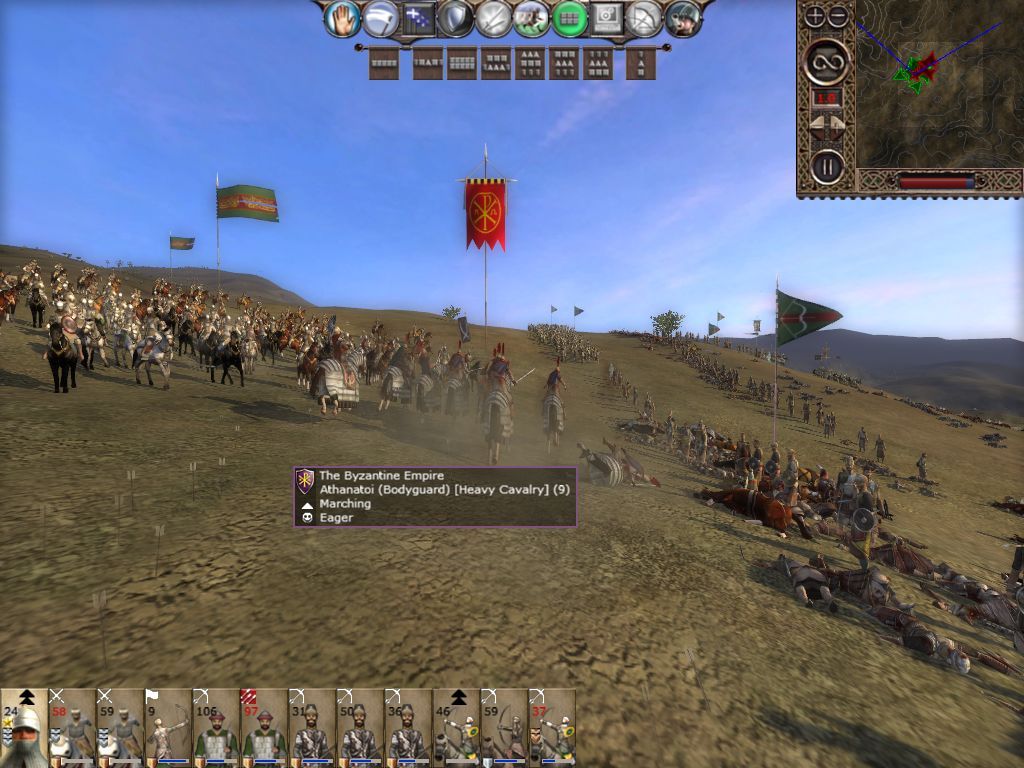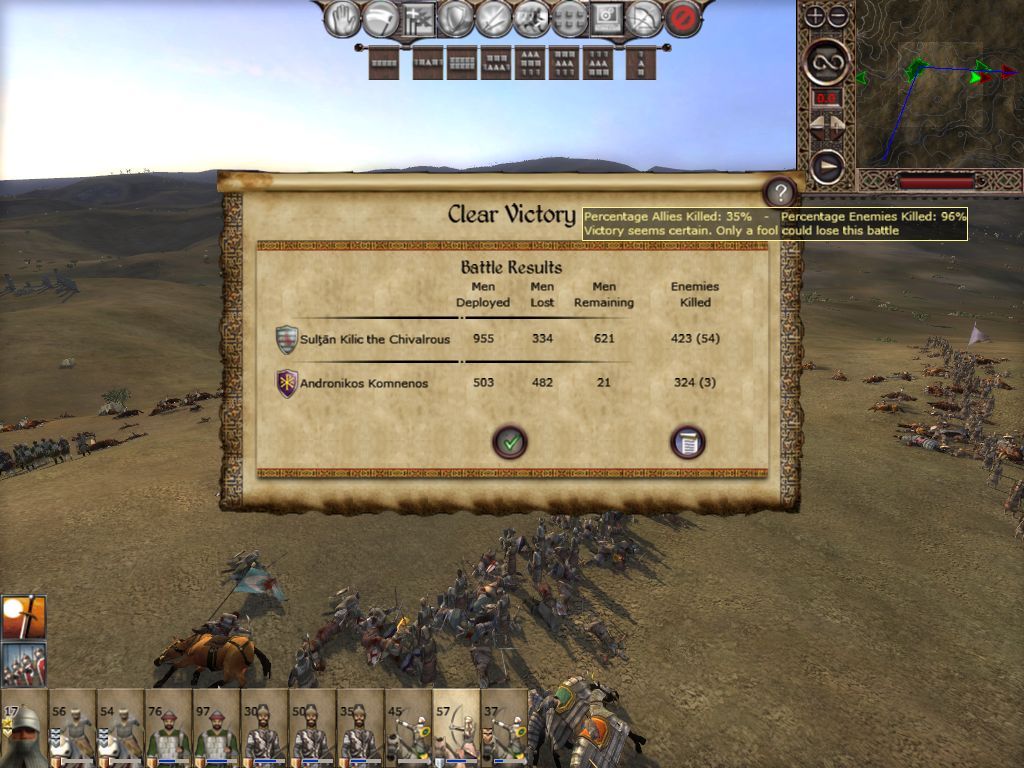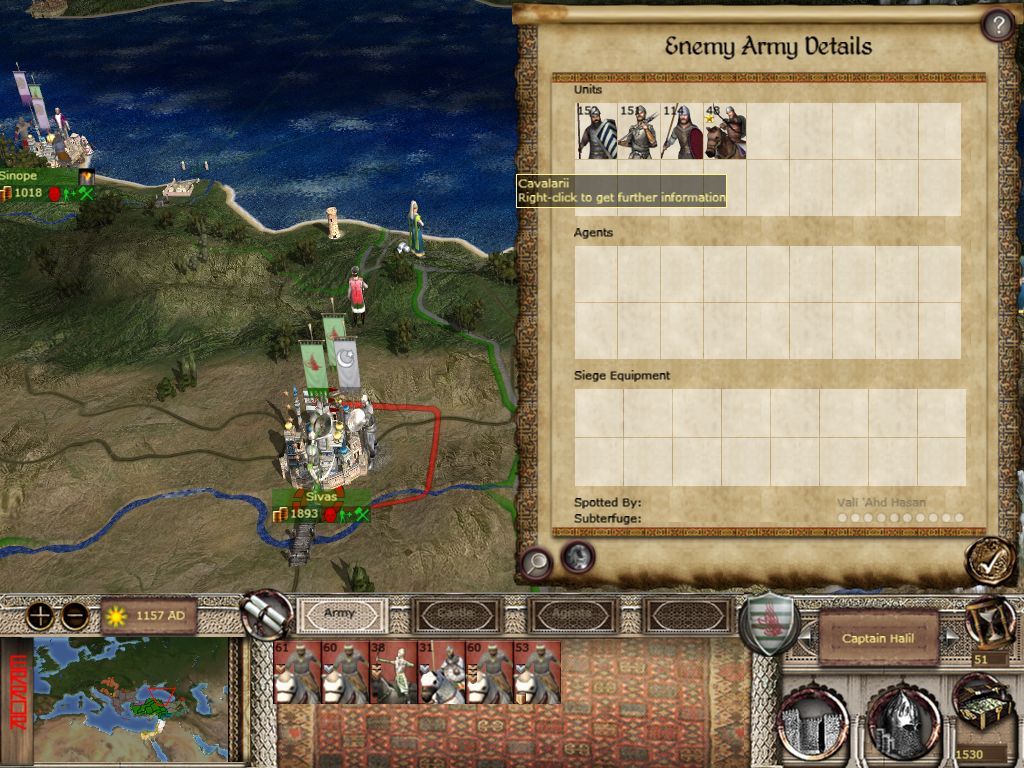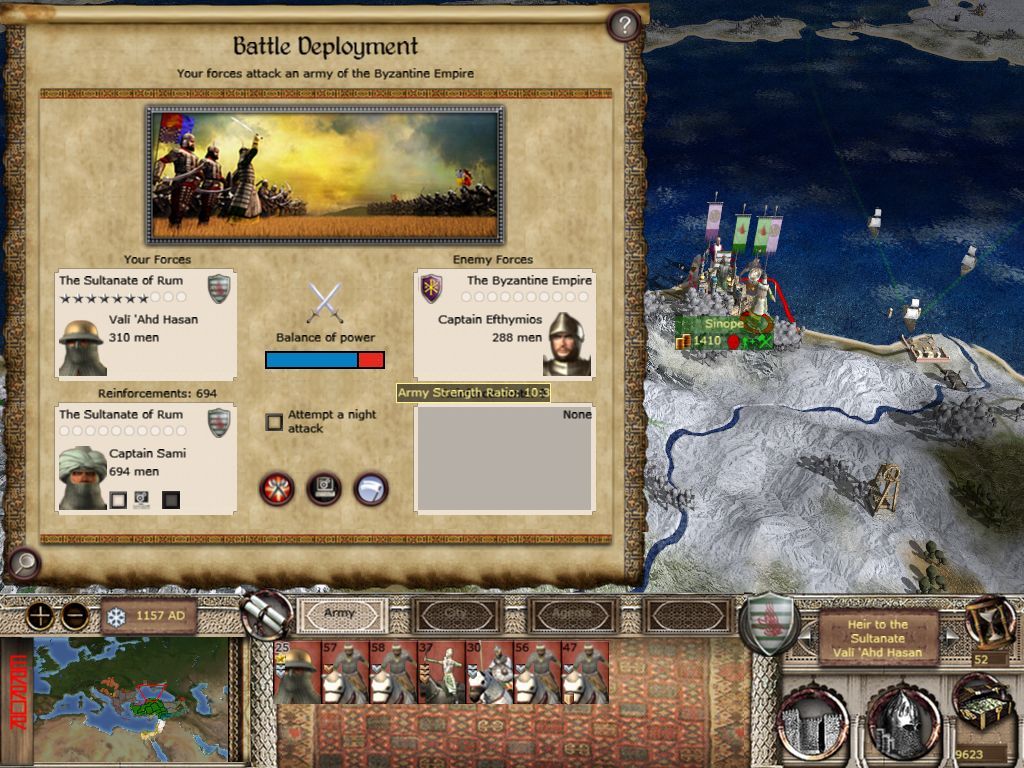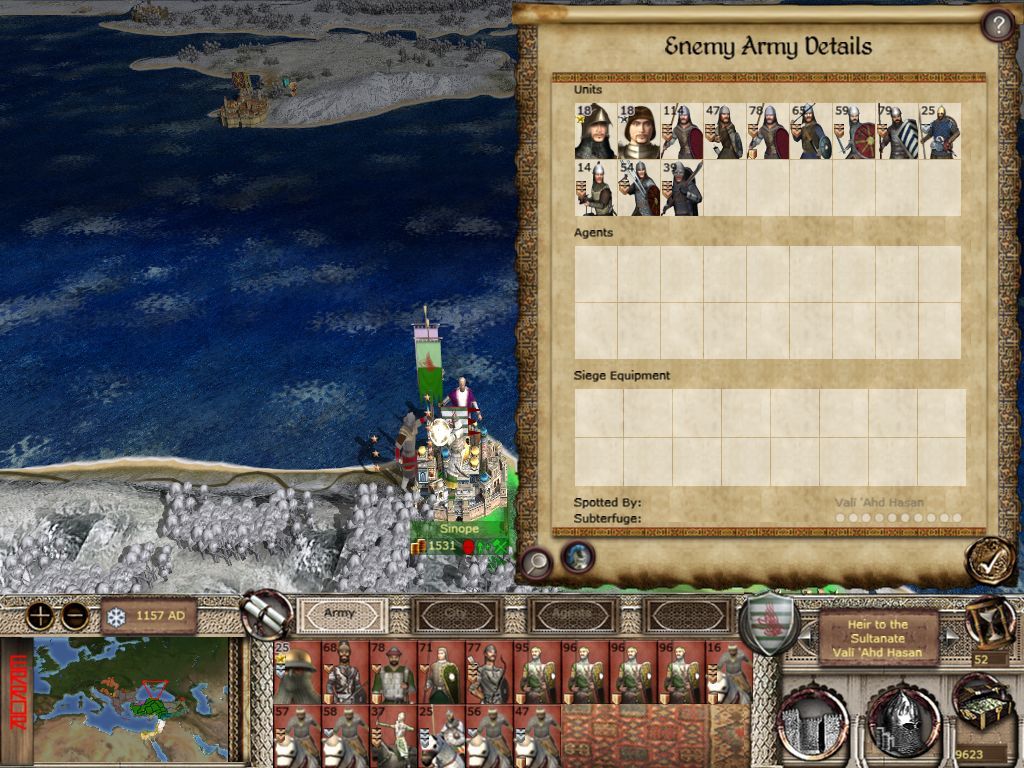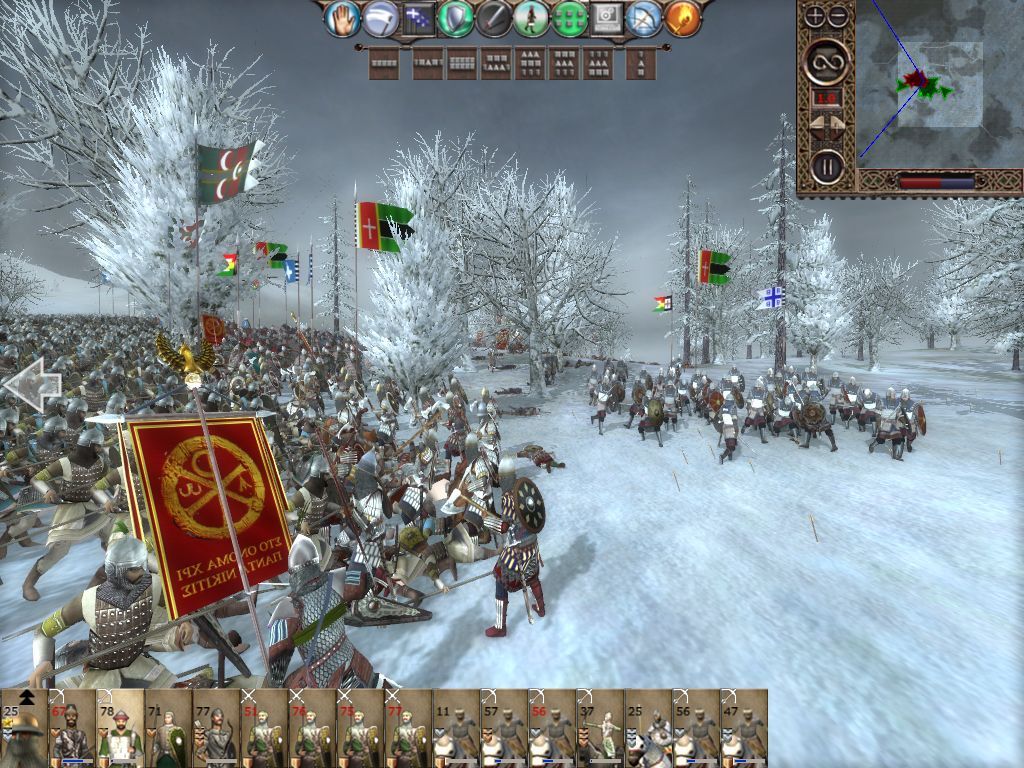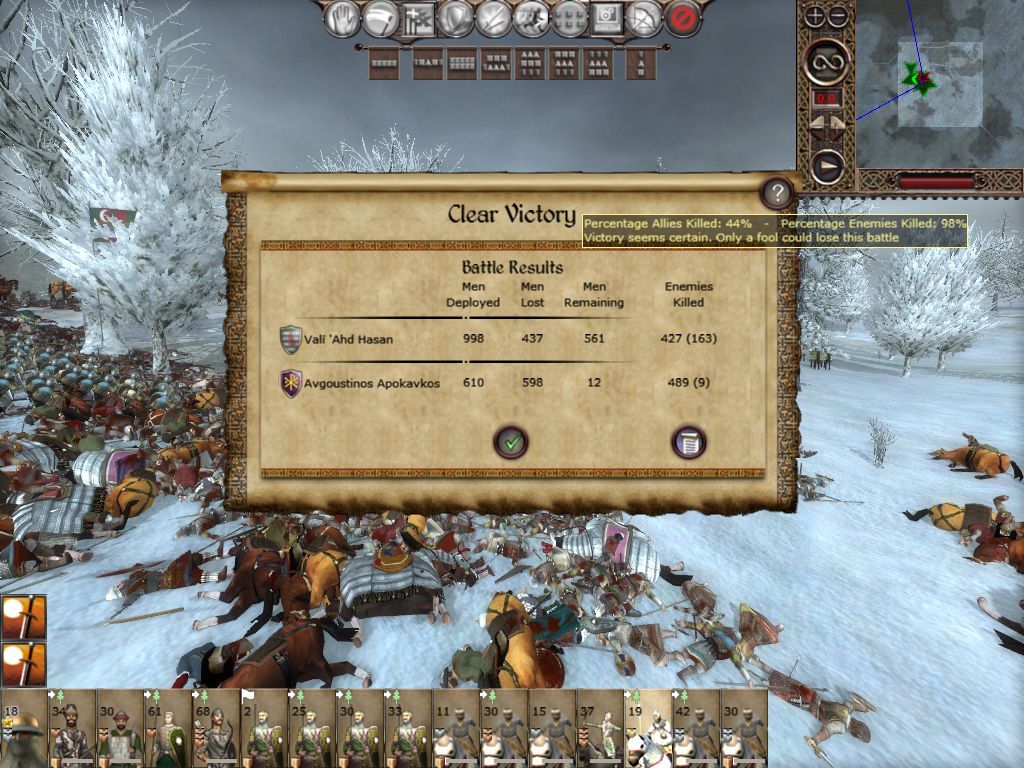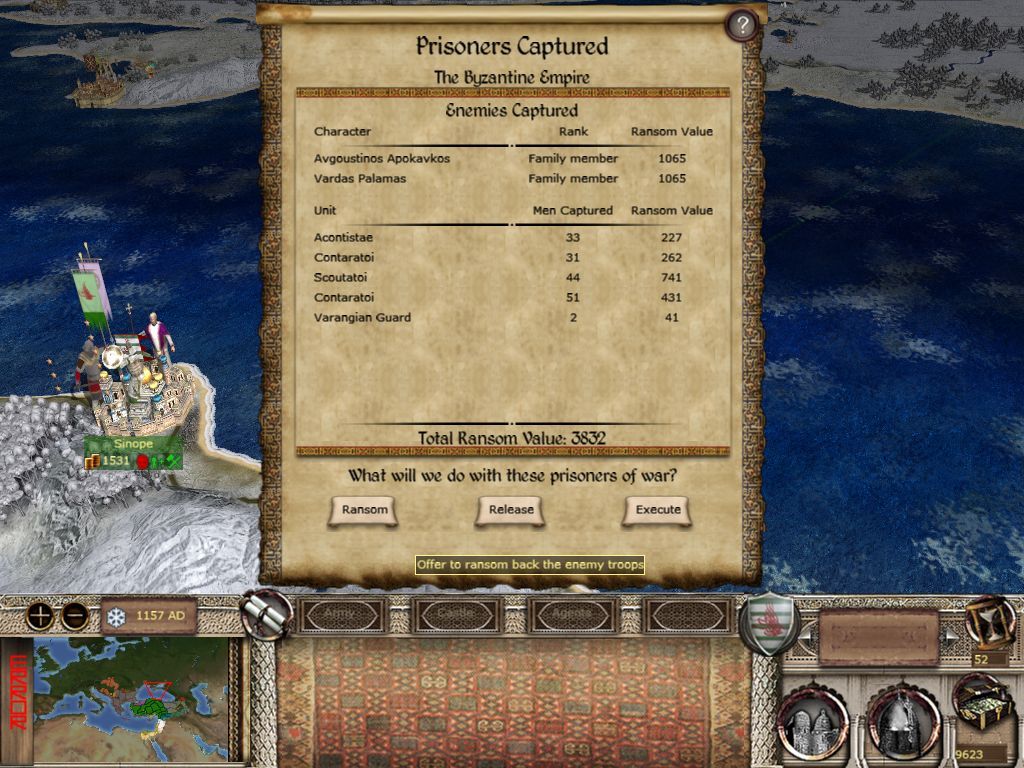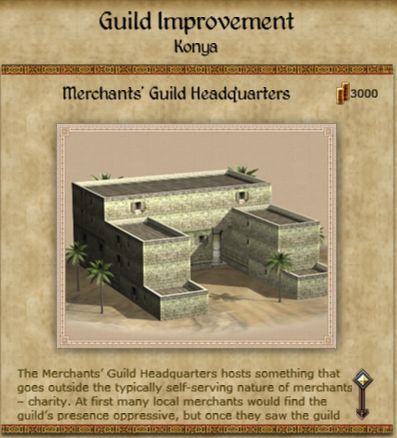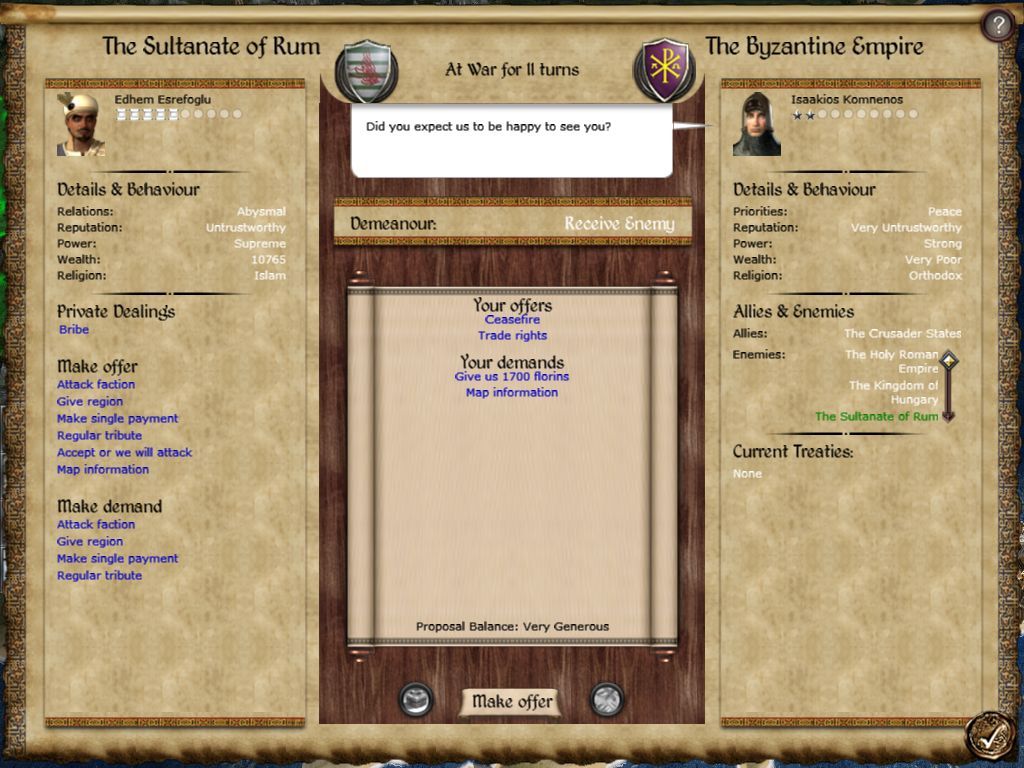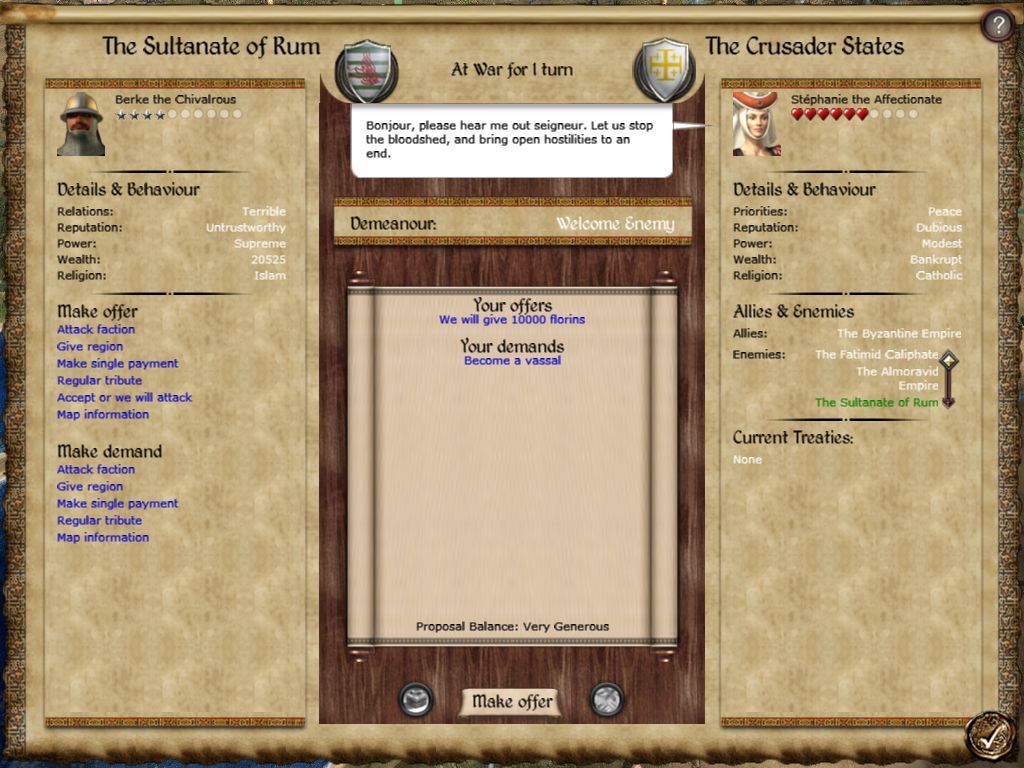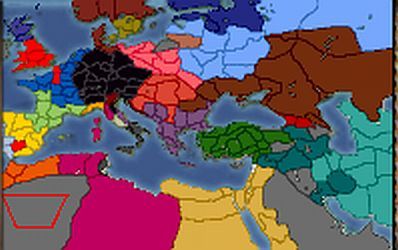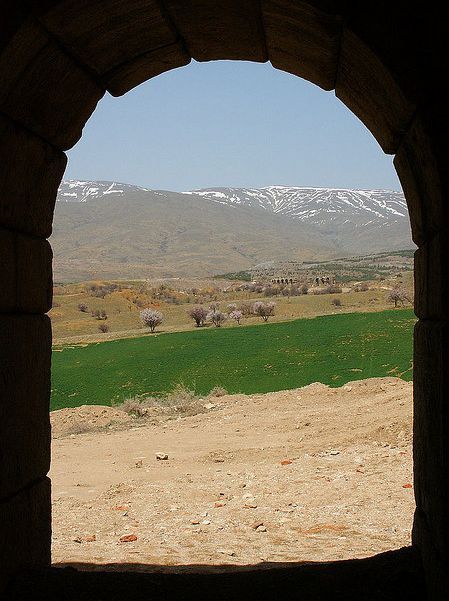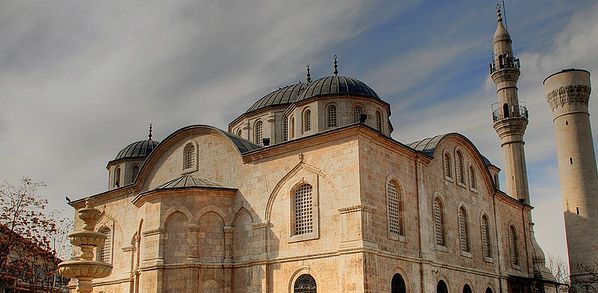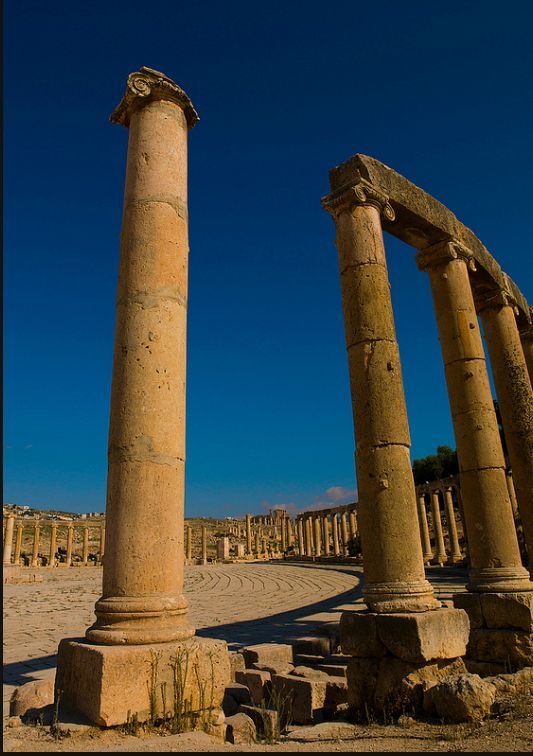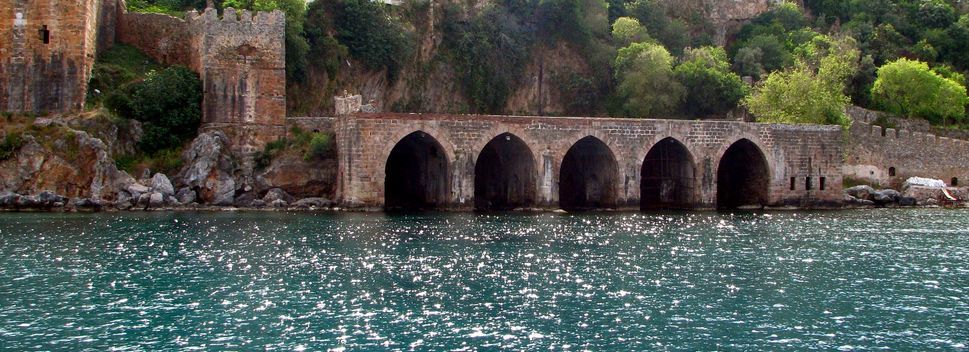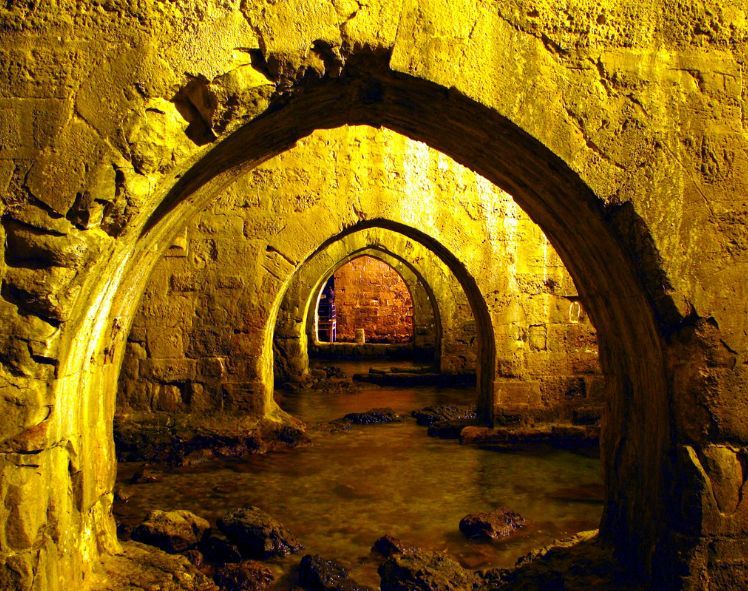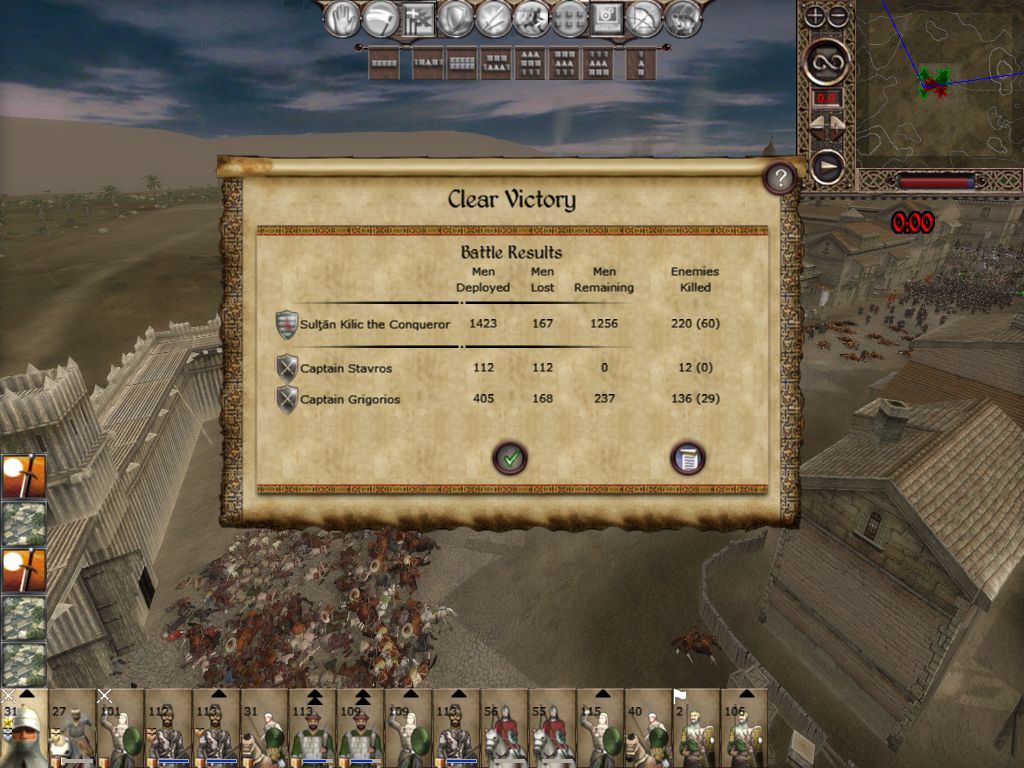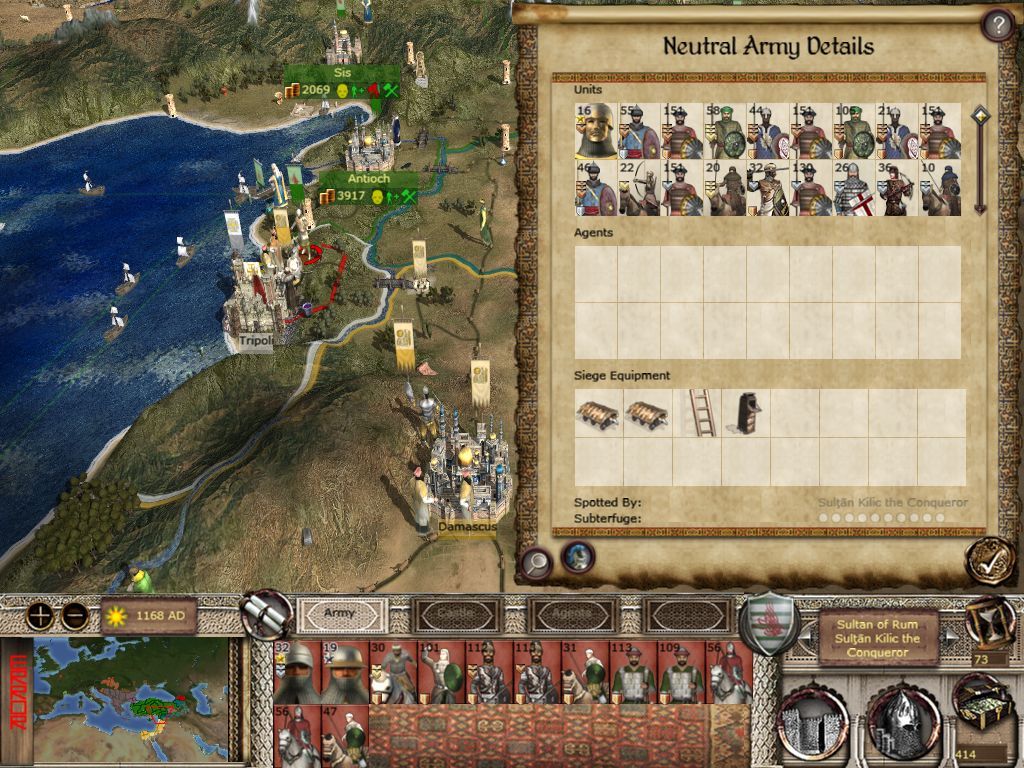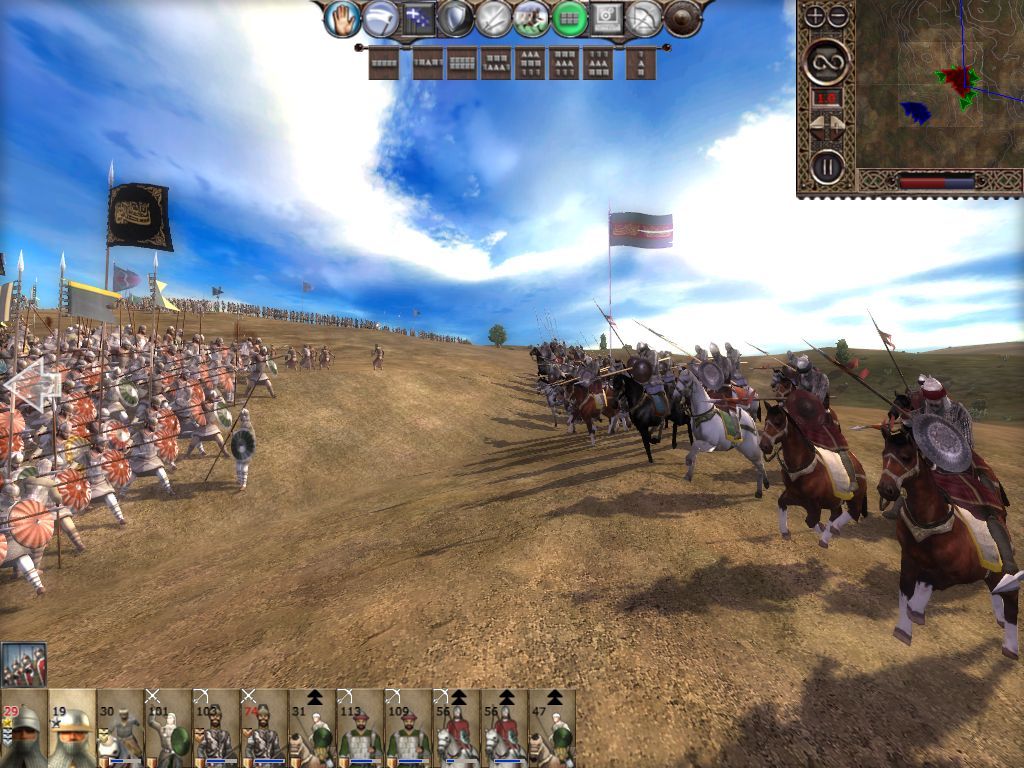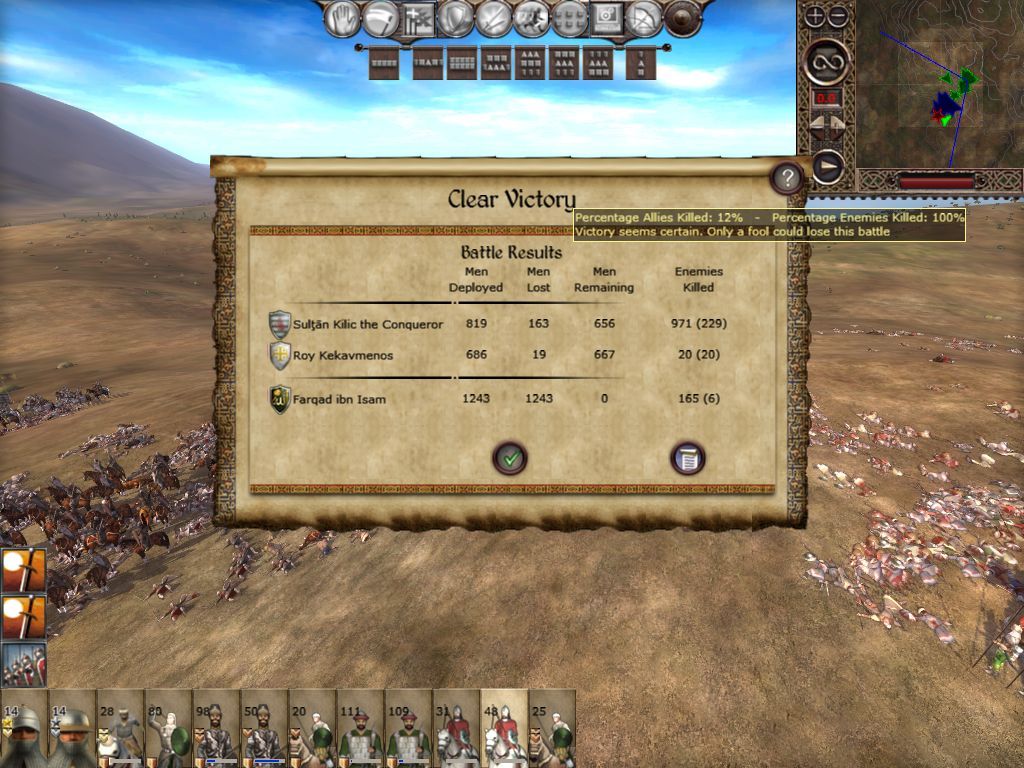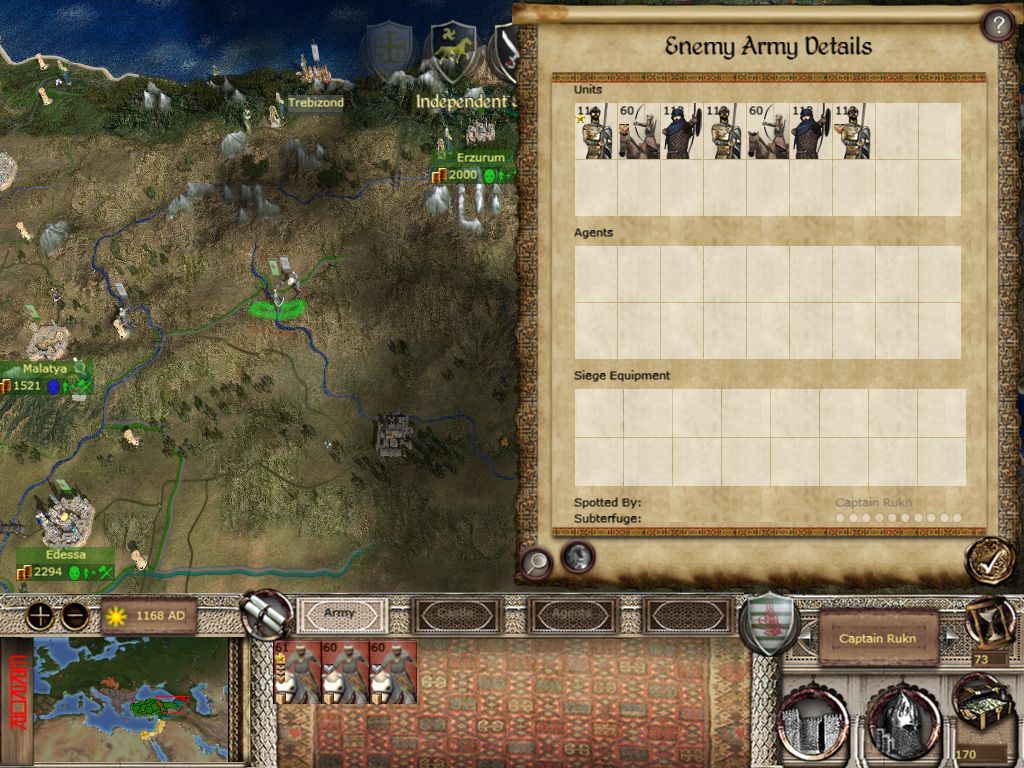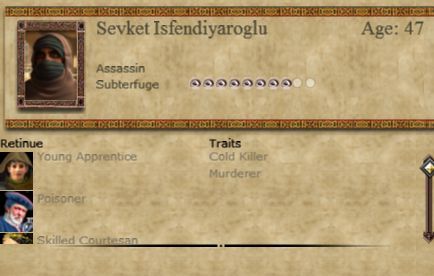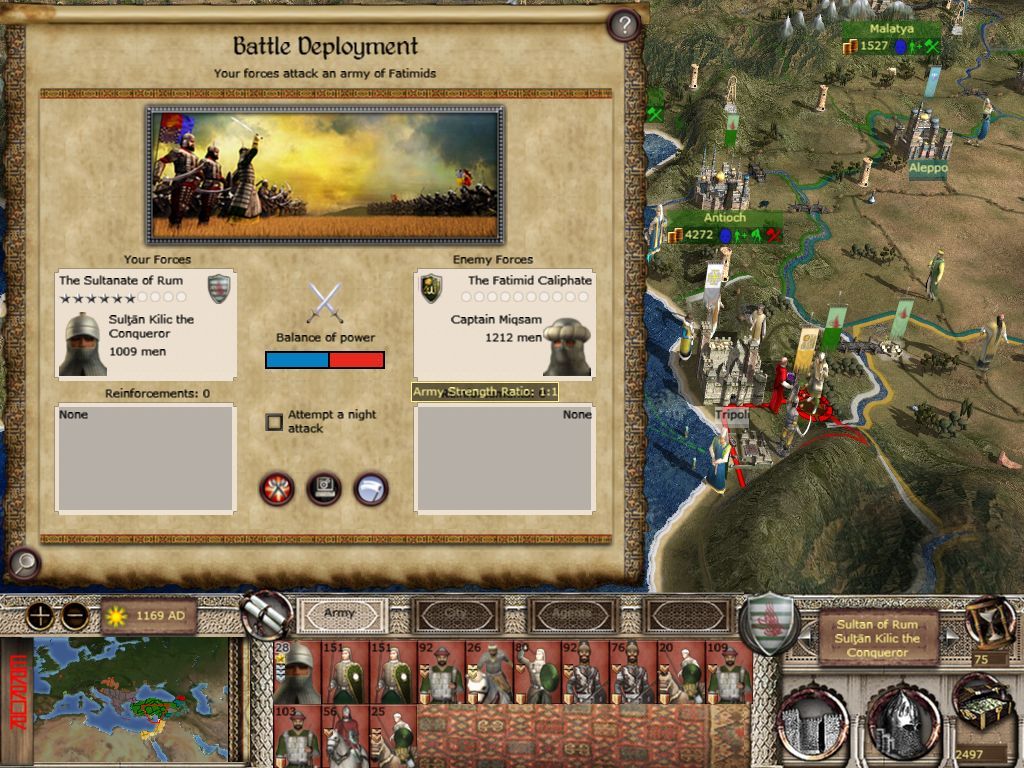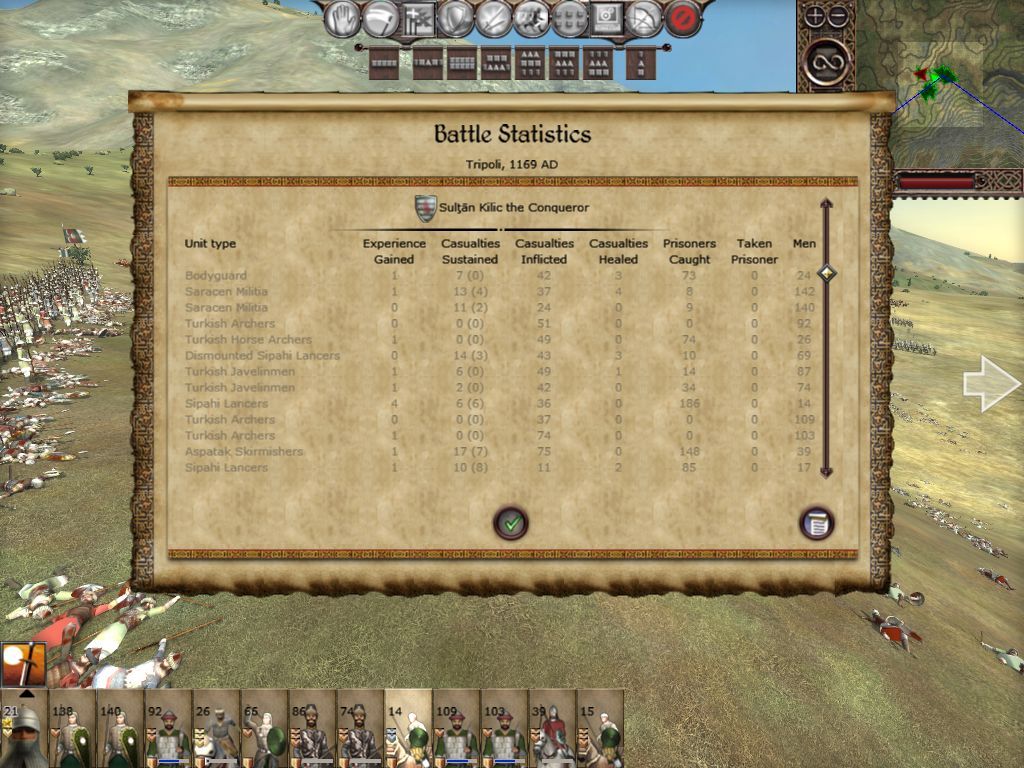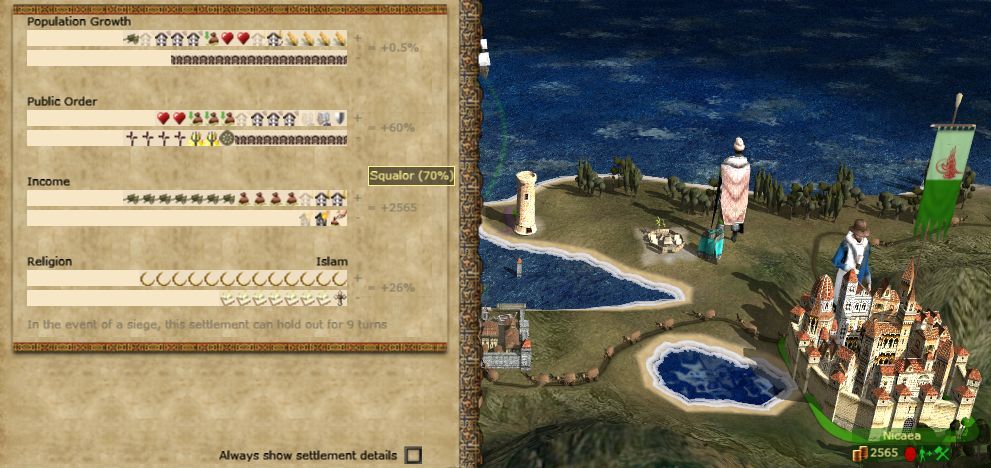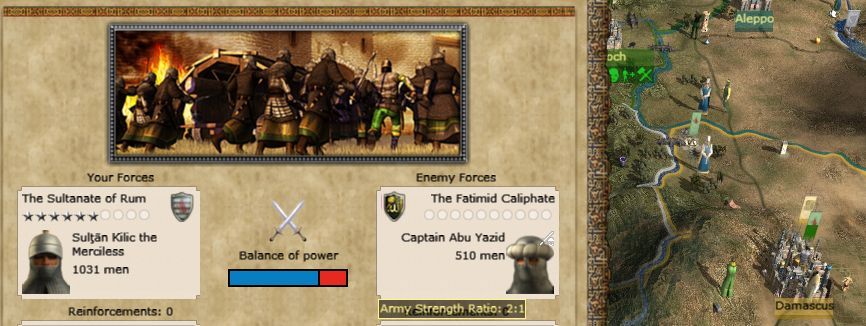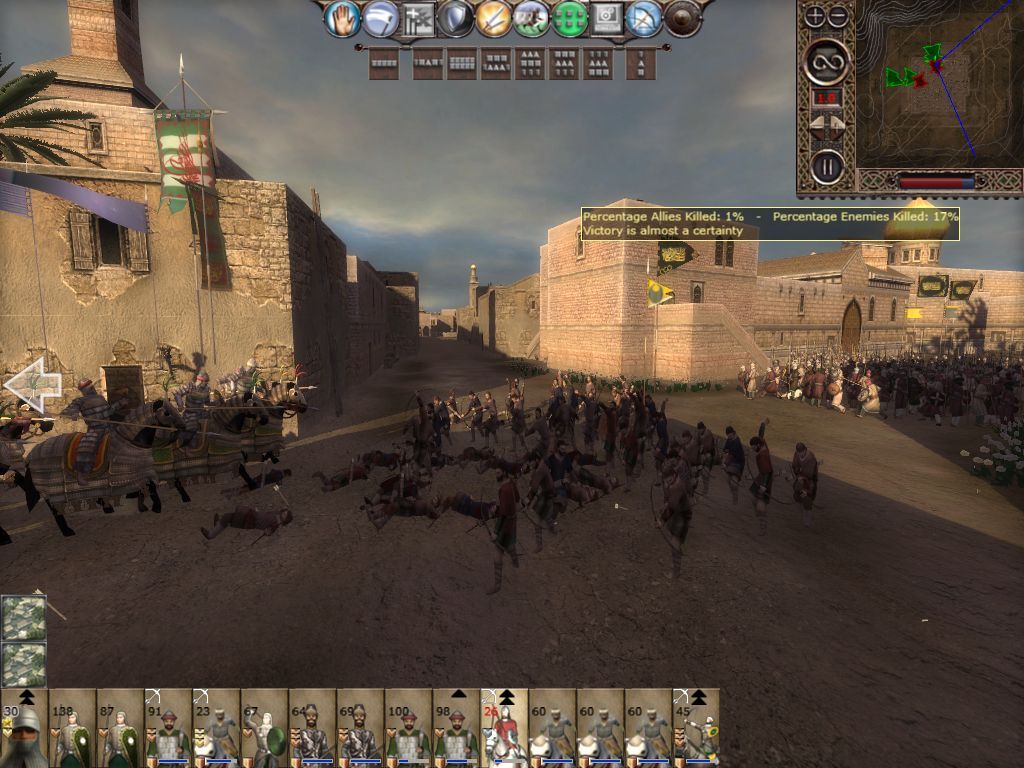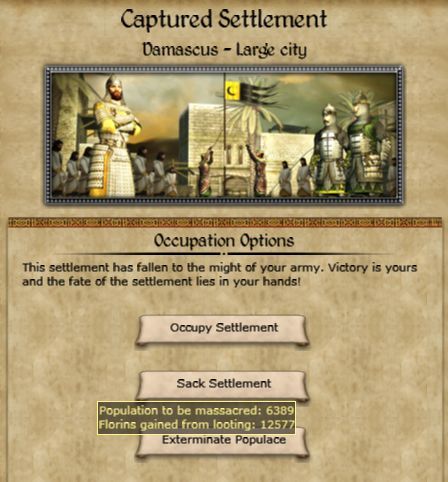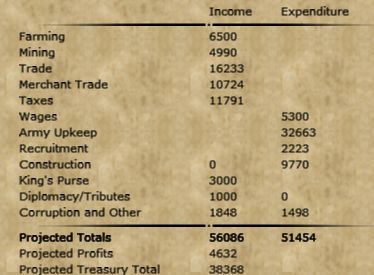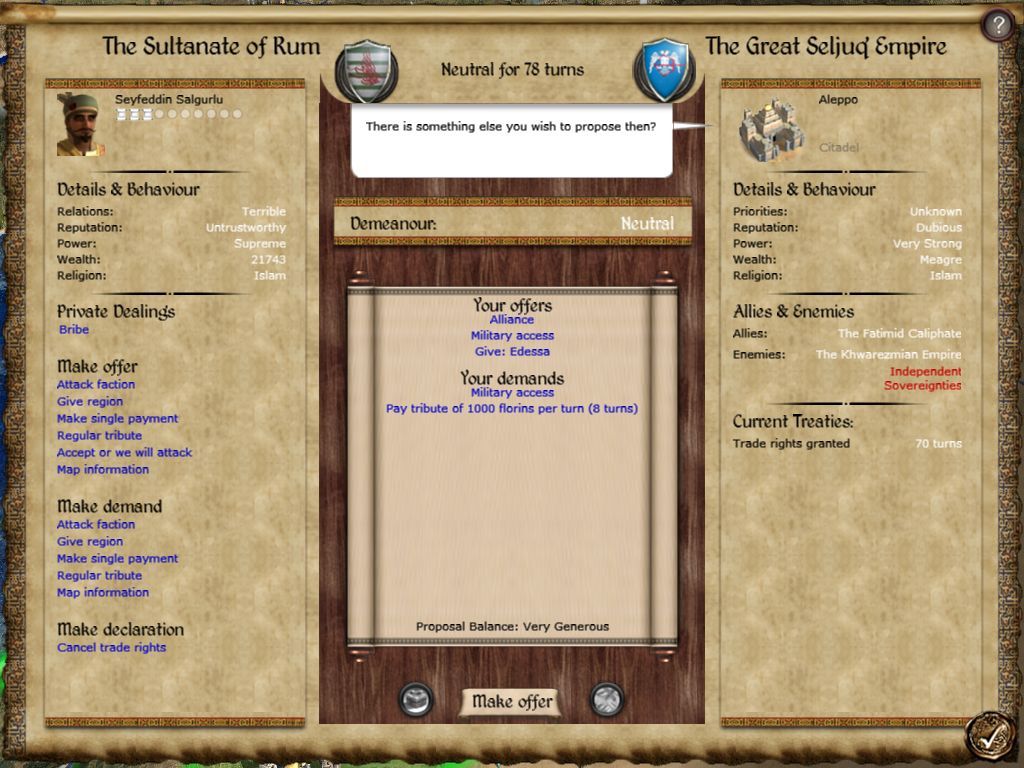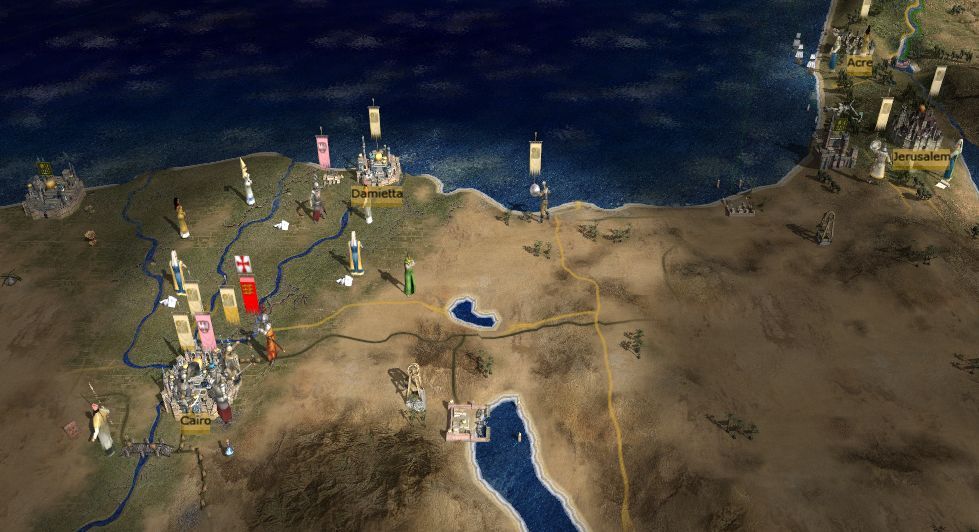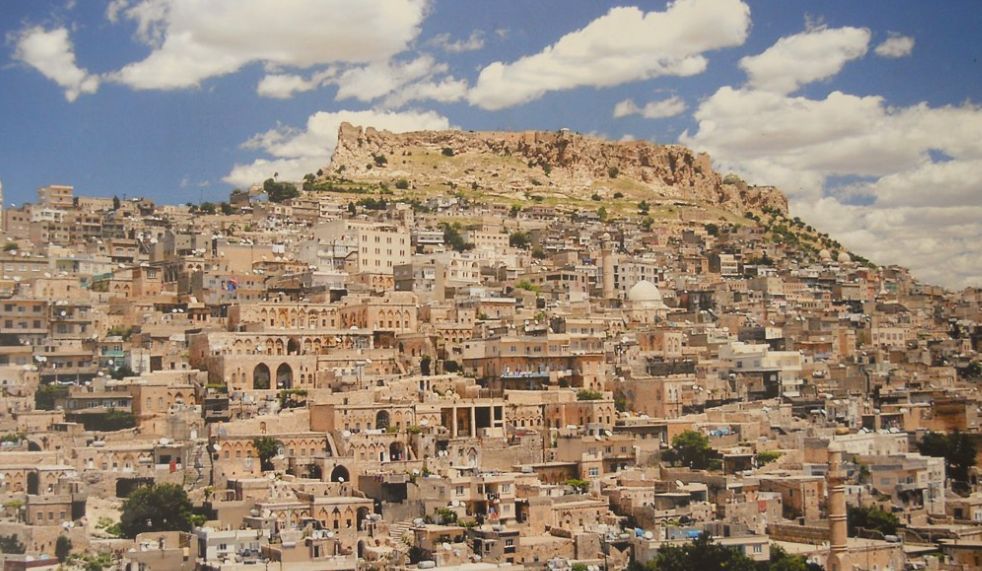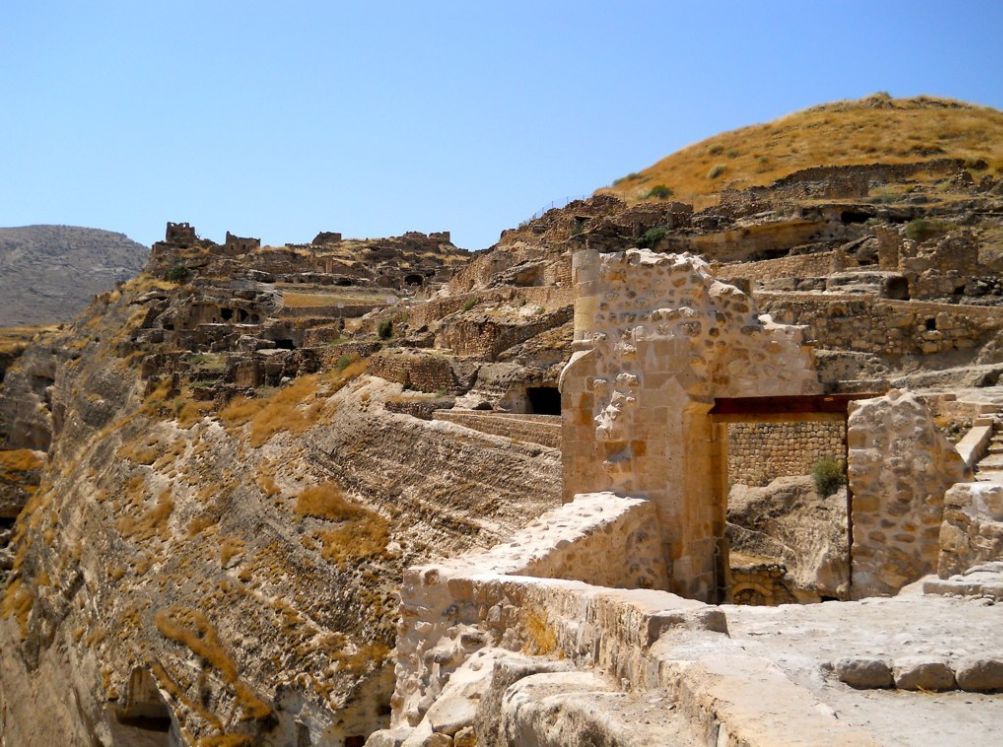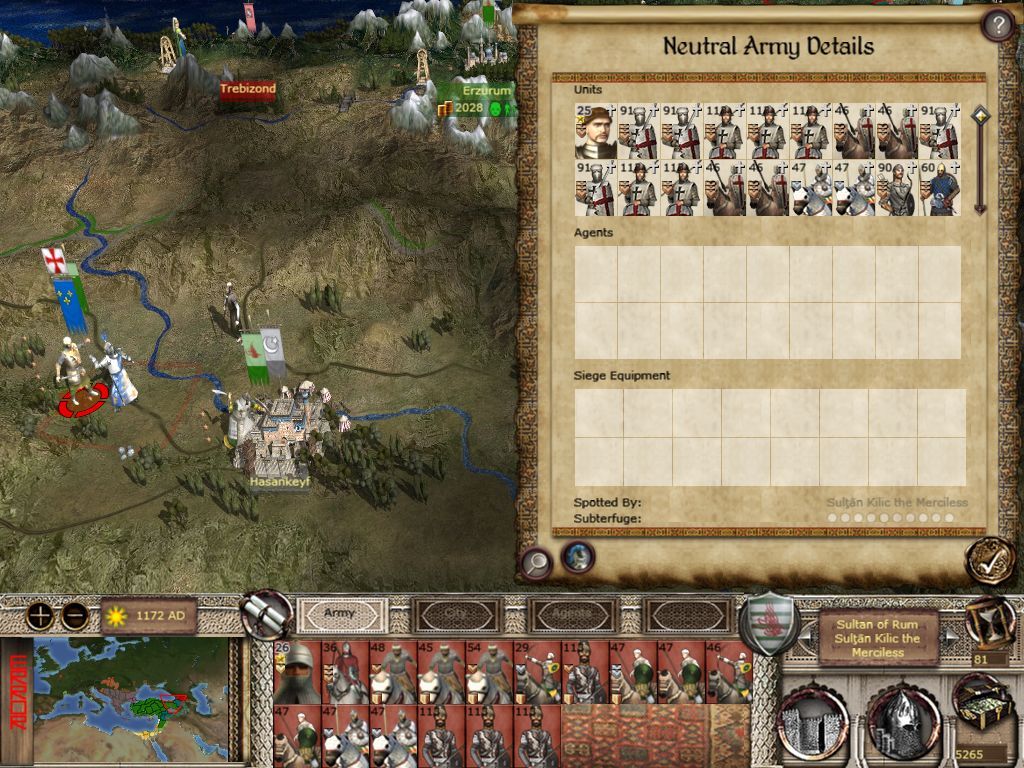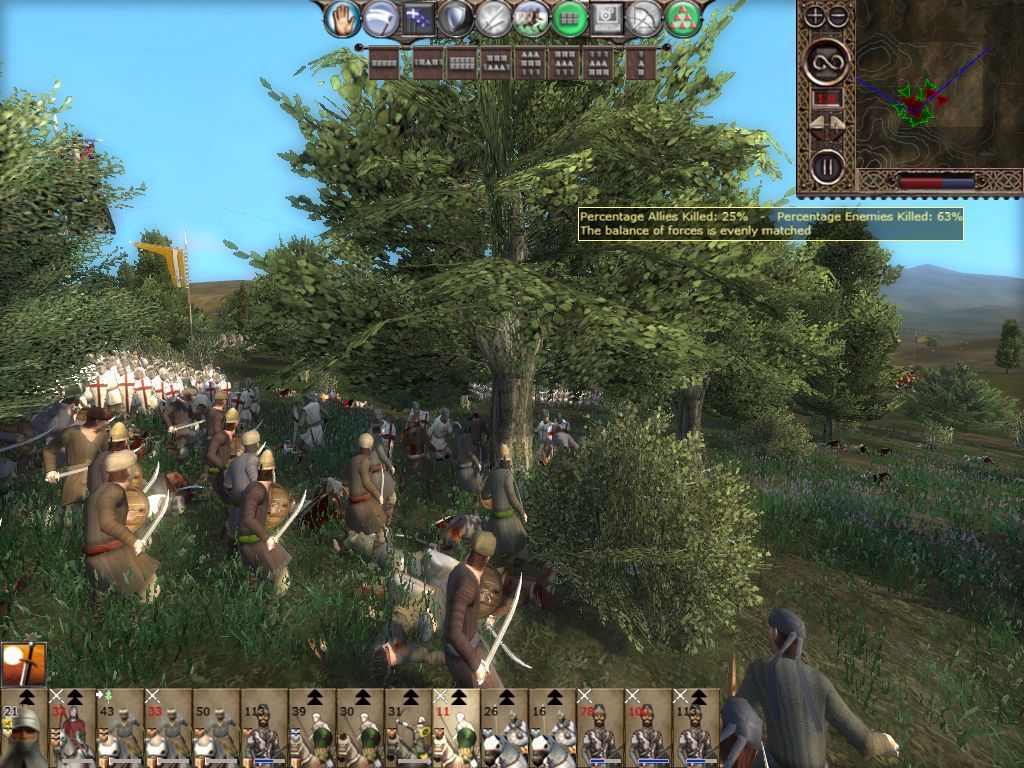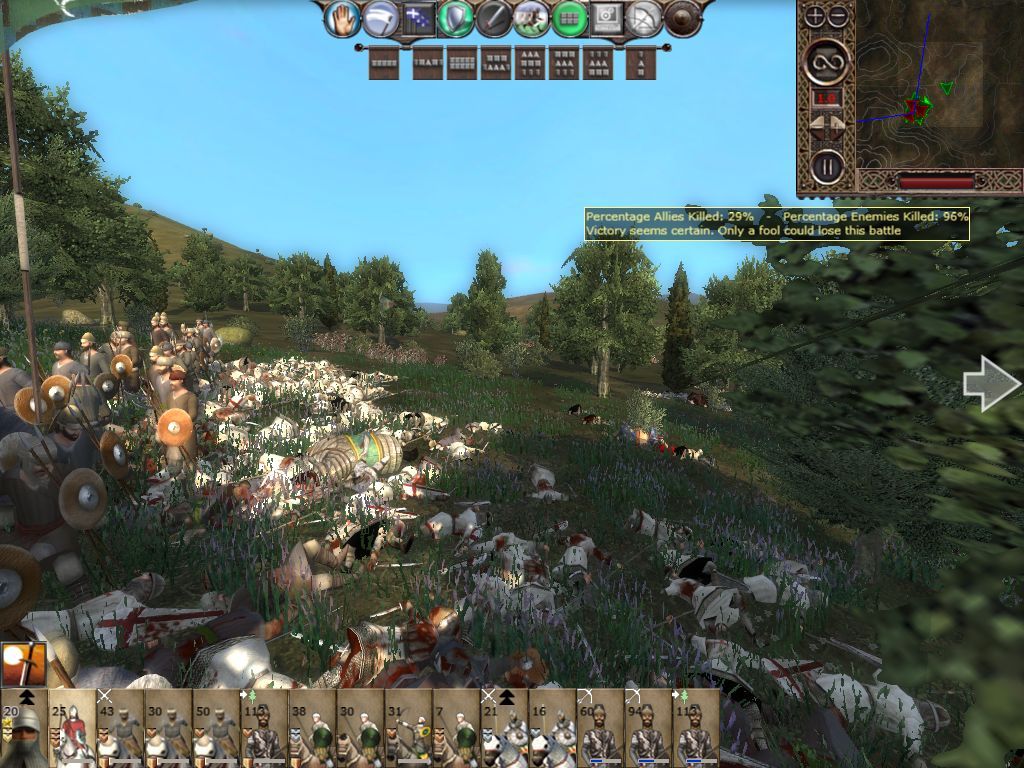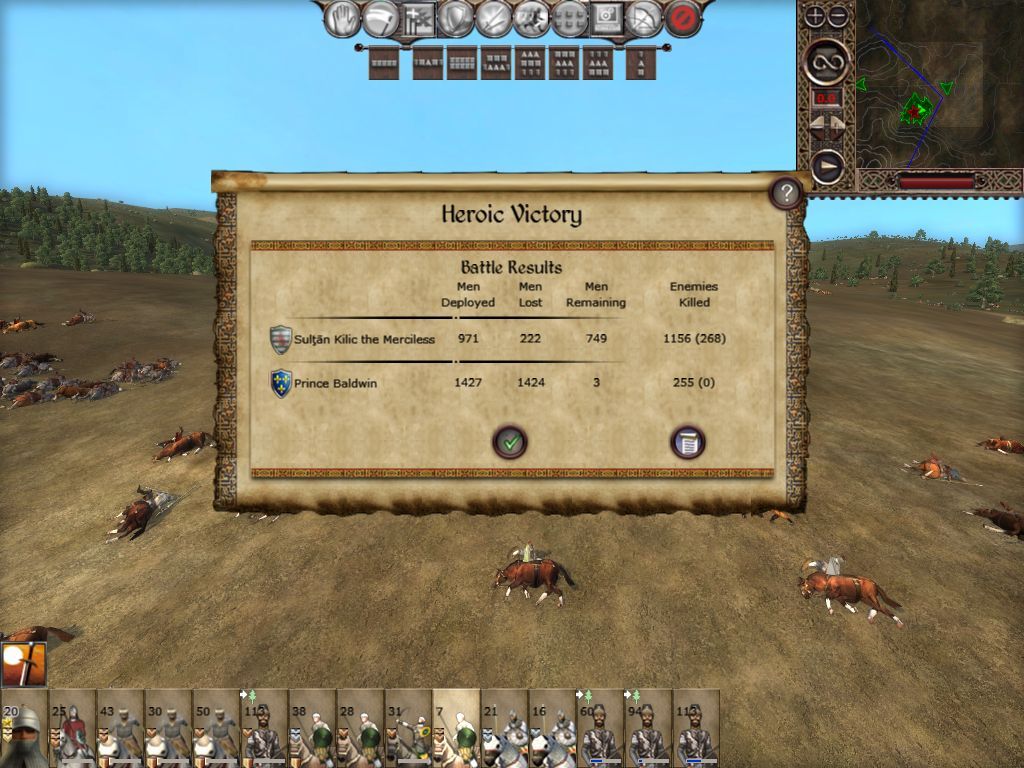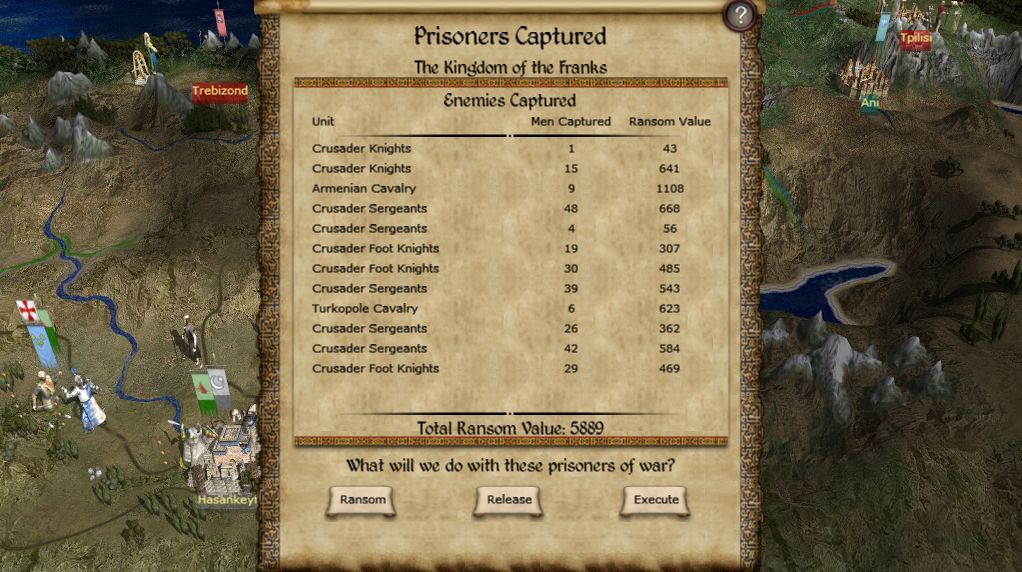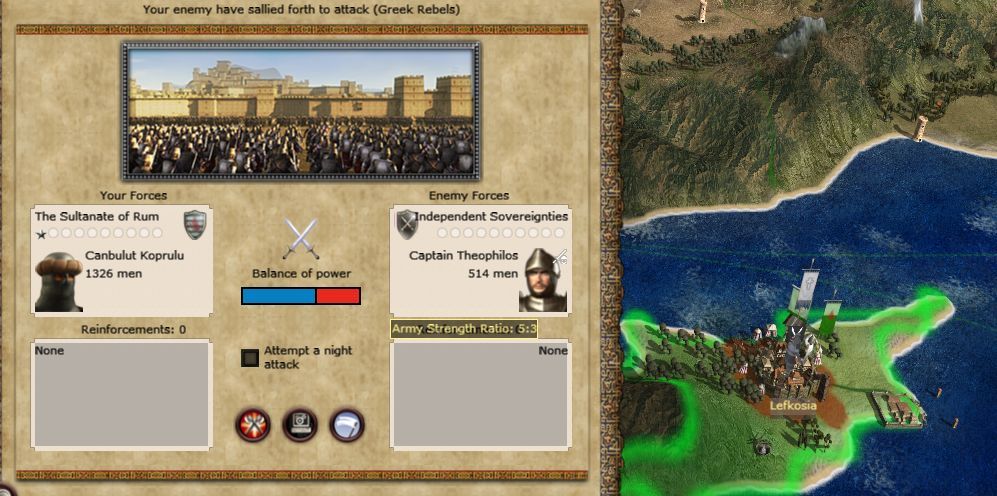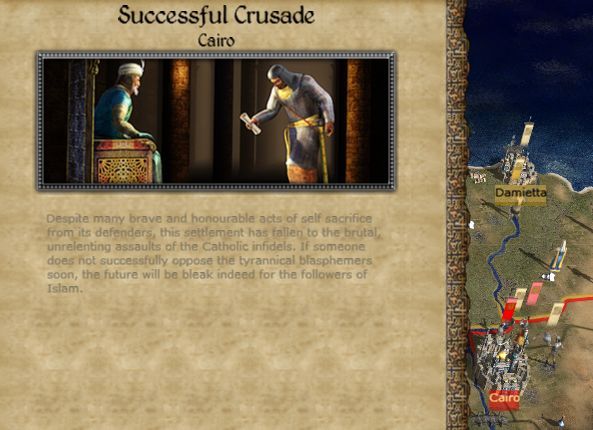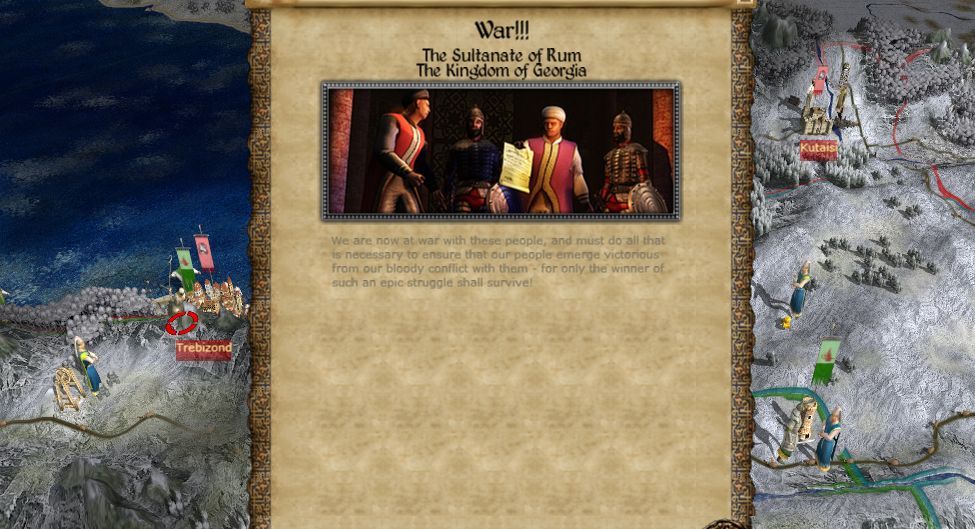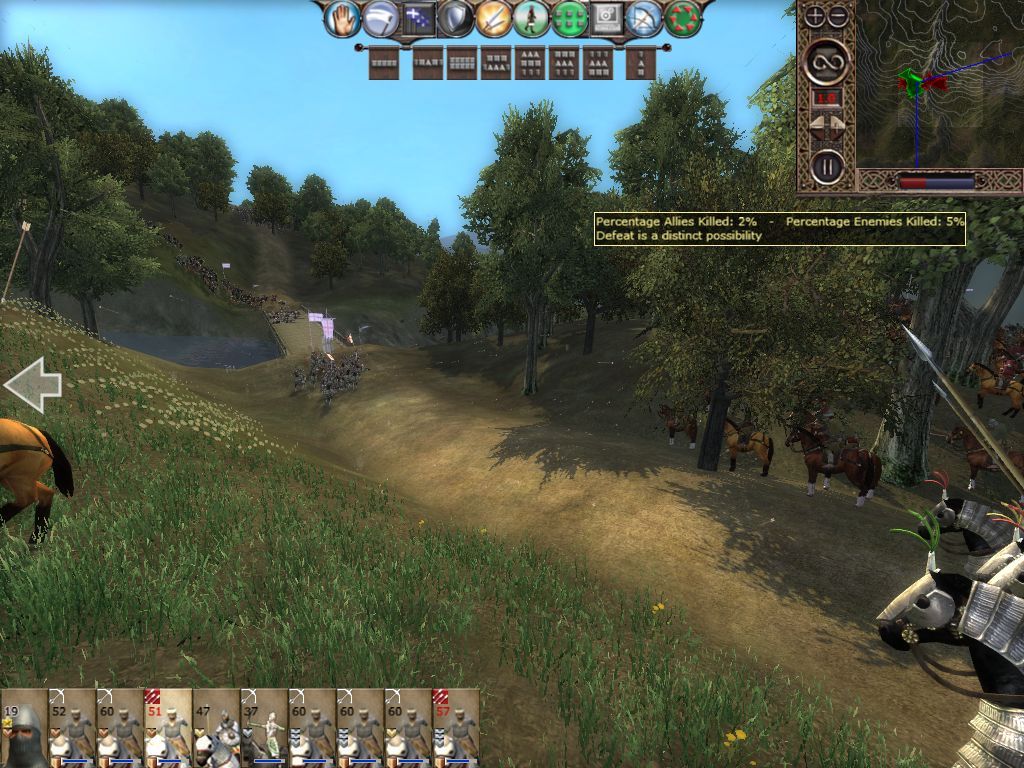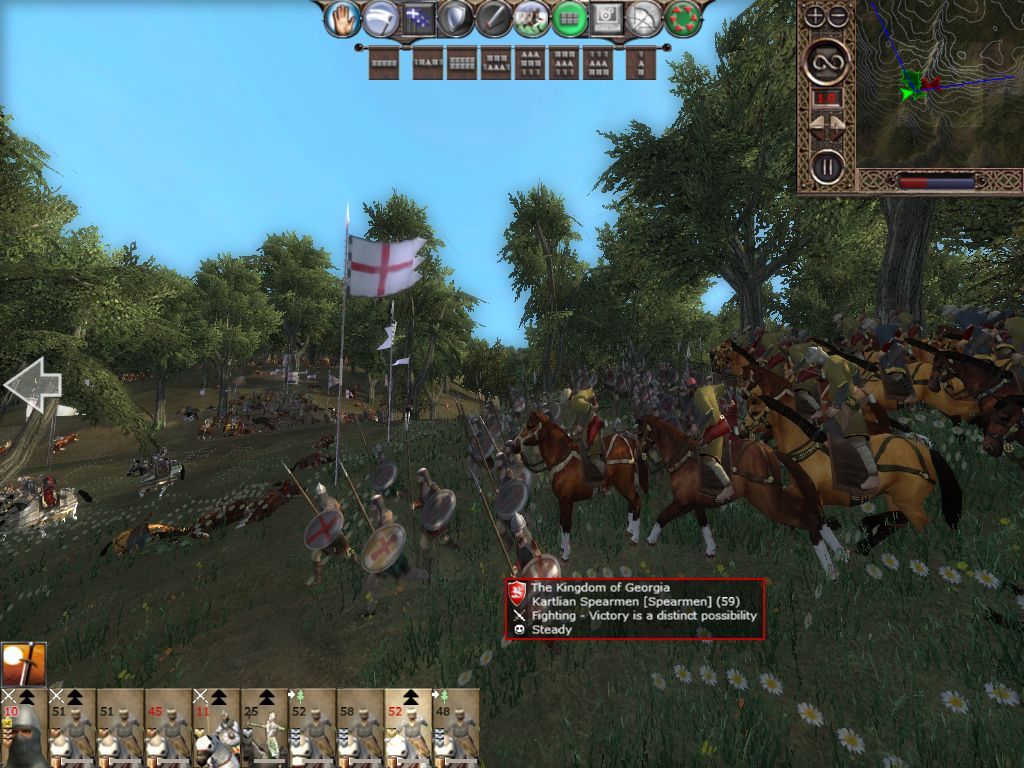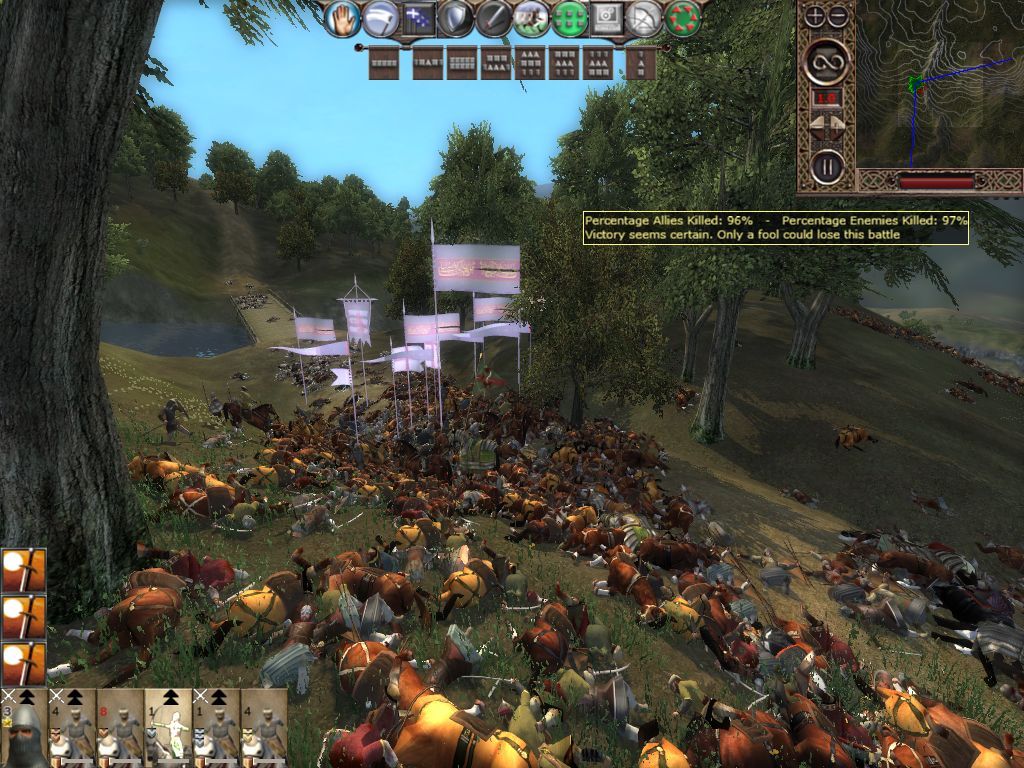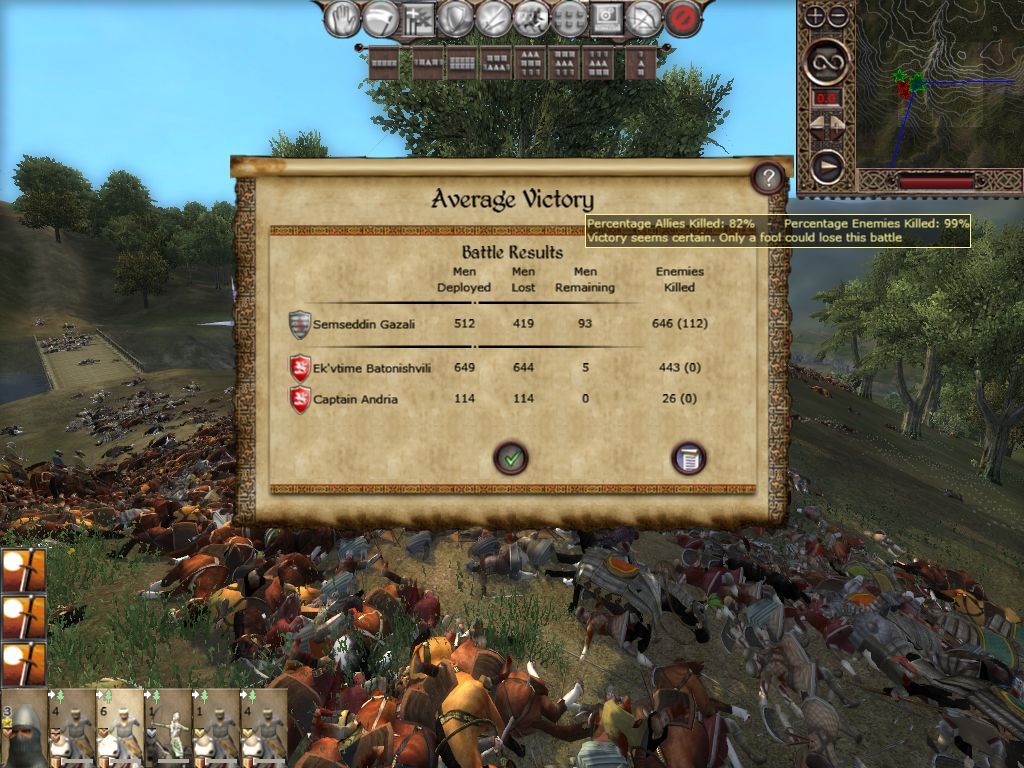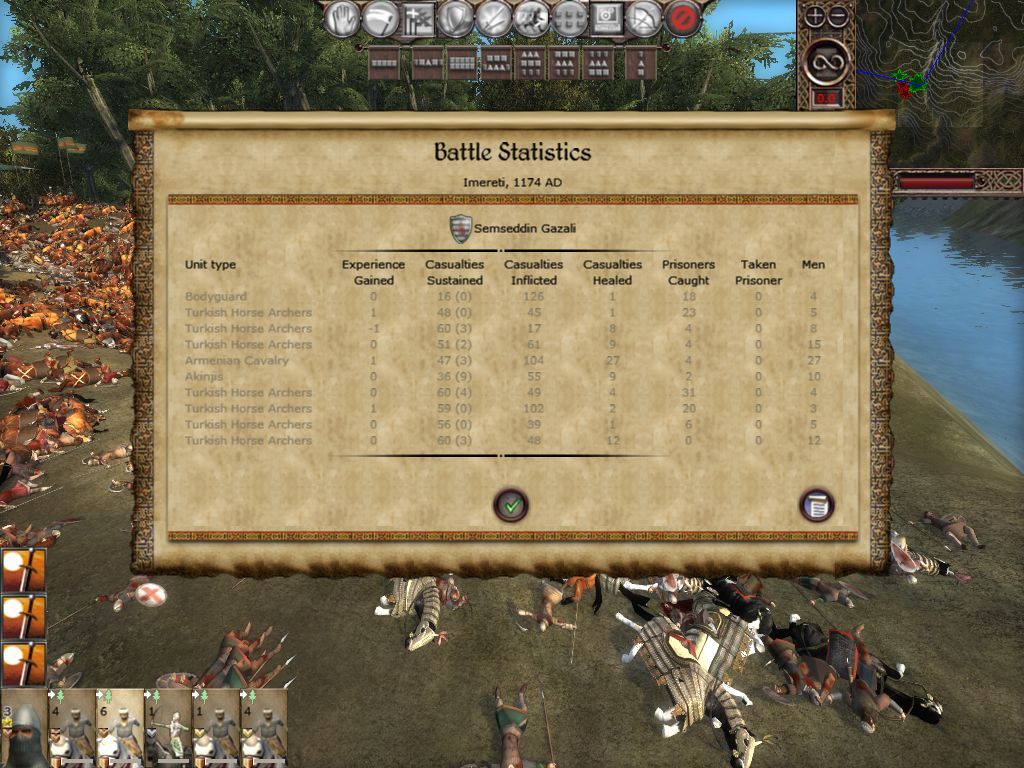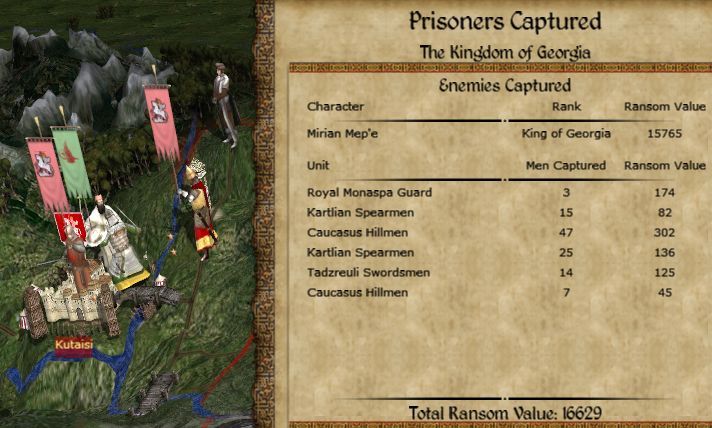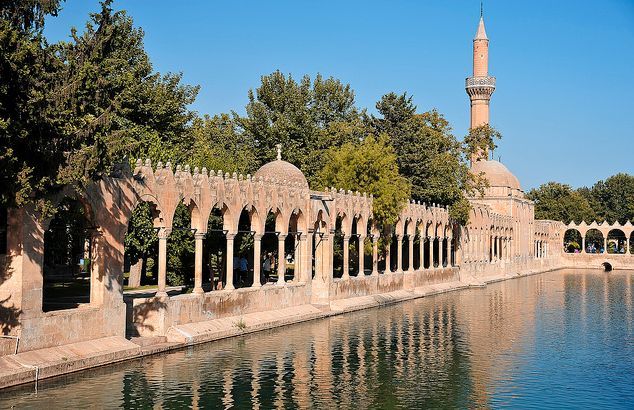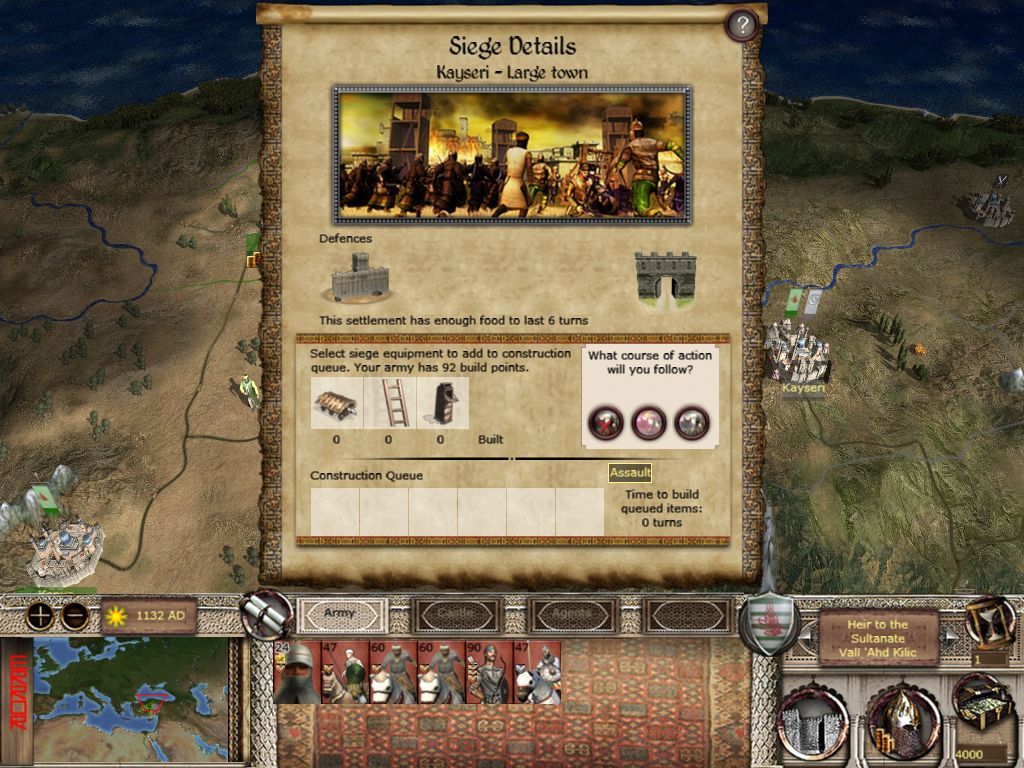
The following battle is bloody and Armenian mercenaries recruited before the battle prove decisive though the few survivors may be rich men, replacing those hard fighting men from Armenia will be expensive.

The Danishmends despite internal dissension manage to send a response quickly, striking for Angora- the heart of Seljuk military power in Anatolia.
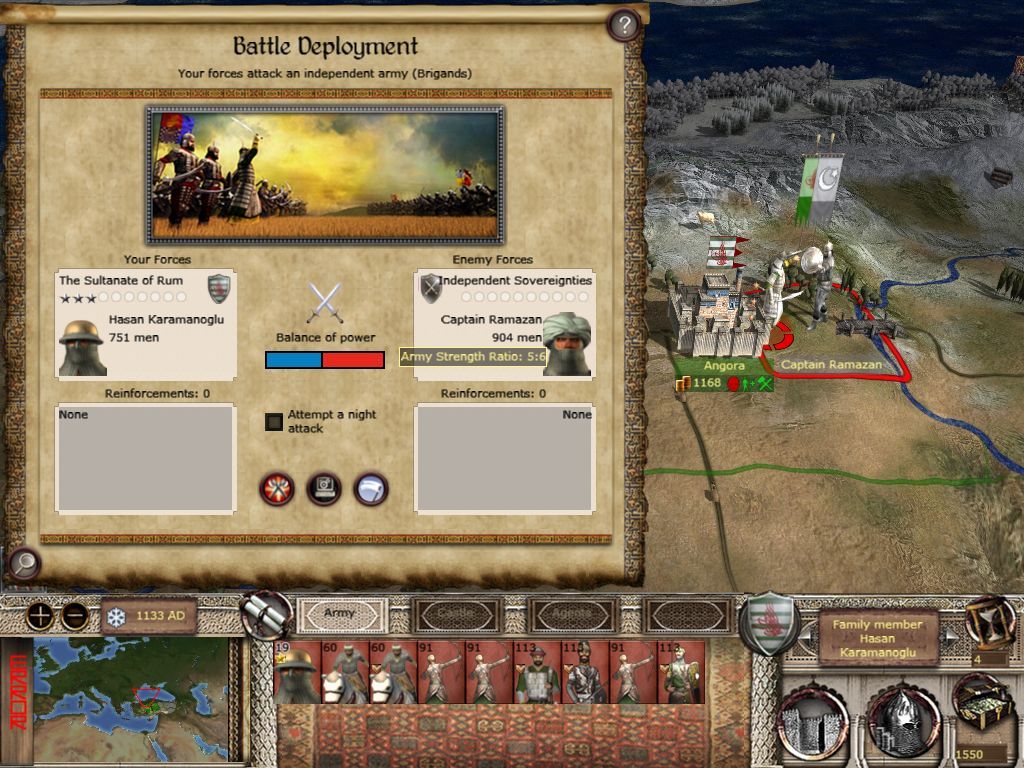
The battle is tough as the Danishmends armies are usually composed of Turkic archers and cavalry similarly to the Seljuks. The Danishmends often have the cooperation of Greek and Armenian vassals who send groups of powerful infantry to war. Despite the losses the young general Hasan Karmanoglu prevails.
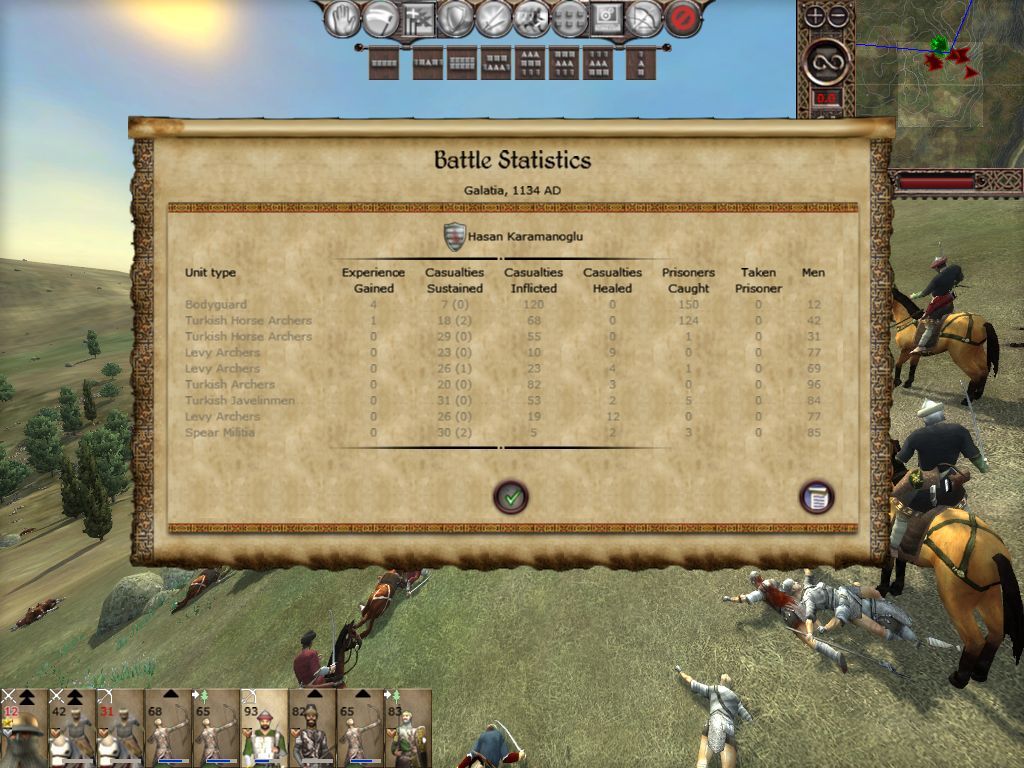
Having defeated the Danishmends twice a Seljuk army approaches Sivas and finds the town already occupied by the forces of the Roman Empire. Masud does not want to enter into war with the Romans and orders the army to turn away.
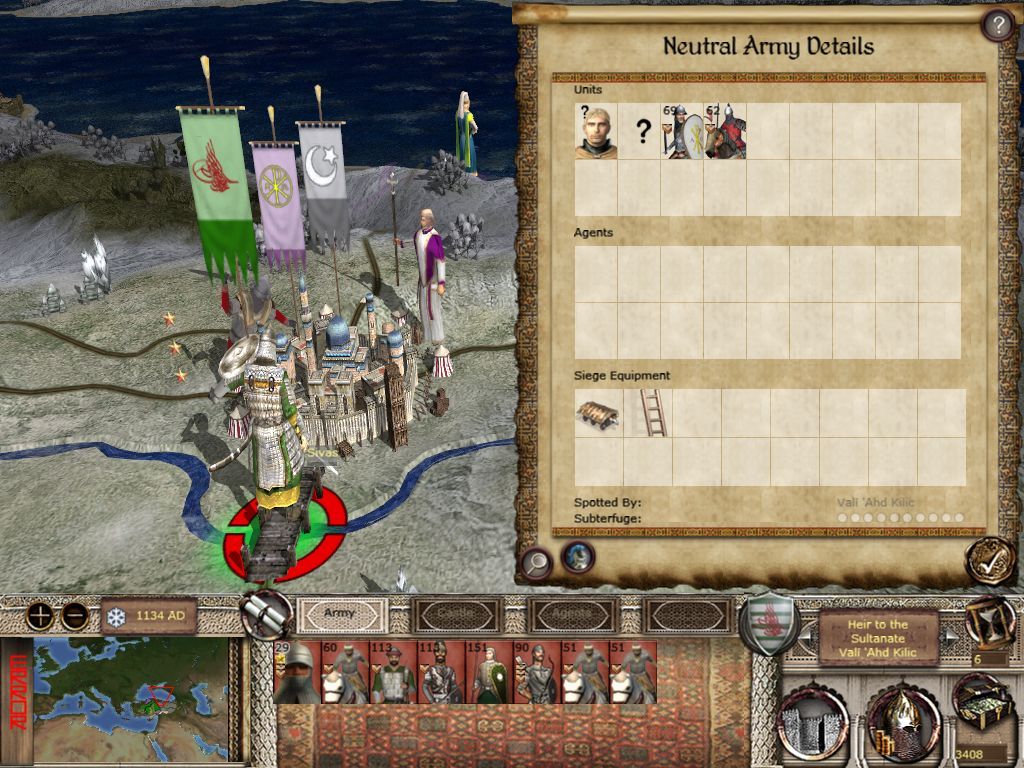
After several years consolidating and preparing his army Masud approaches Malatya the seat of Danishmend power in Anatolia. The garrison is extremely strong and Masud decides a long siege is the best policy with Roman armies marching in Anatolia risking large losses is not a wise policy.
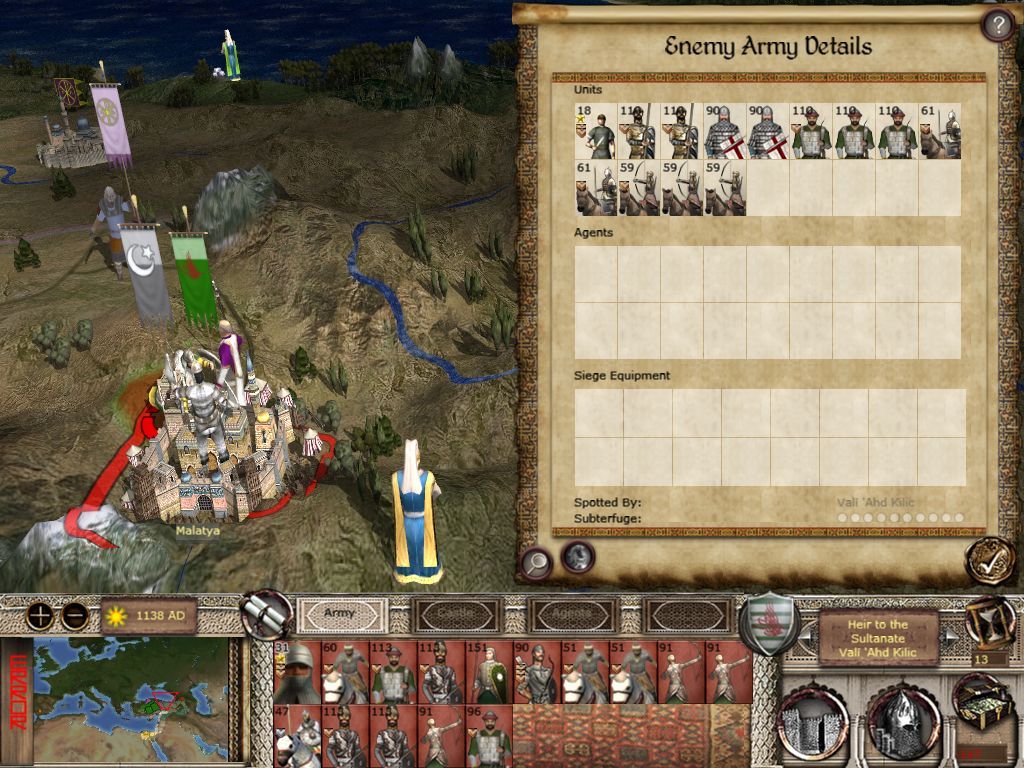
Grim news arrives, the Roman Emperor has decided that while the main Seljuk army is away laying siege to distant Malatya, securing the Roman borders and pushing the Turks deeper into Anatolia following the success of the first Crusade 2 generations past is the best policy. Masud vows to demonstrate to the arrogant Roman Emperor John II Komnenos that the Seljuk Turks might someday seize the power Constantinople now possesses and call themselves Romans!
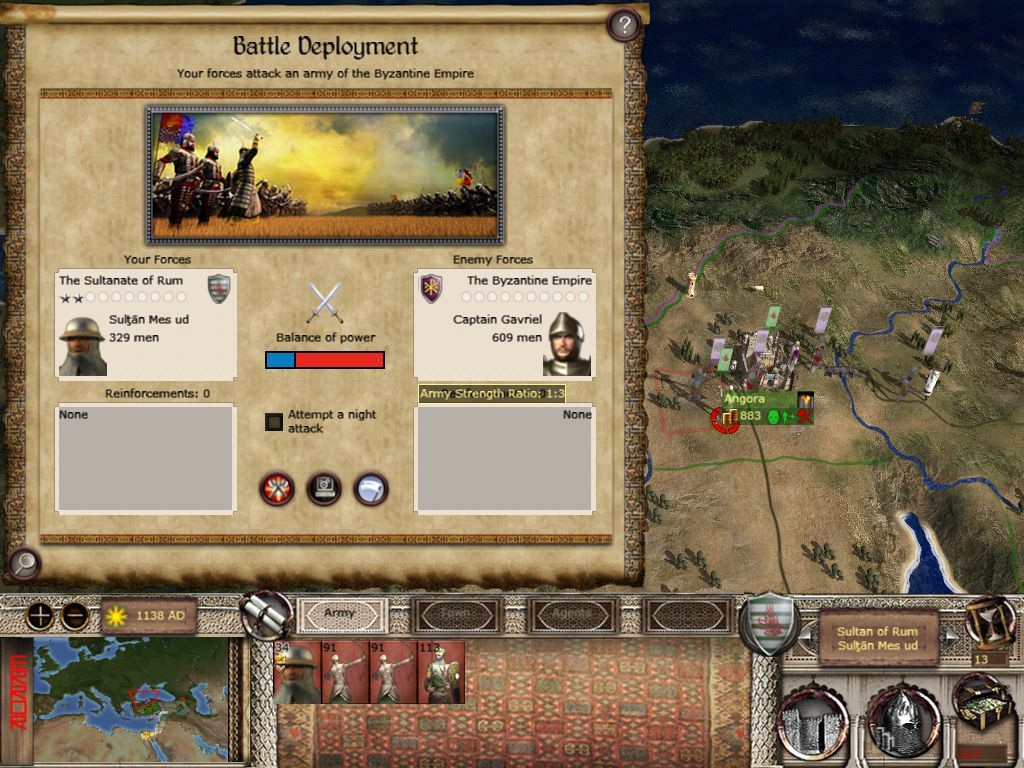
The Roman armies have staggered their approach to Angora slightly and Masud leads the attack on the Roman infantry column approaching most slowly.
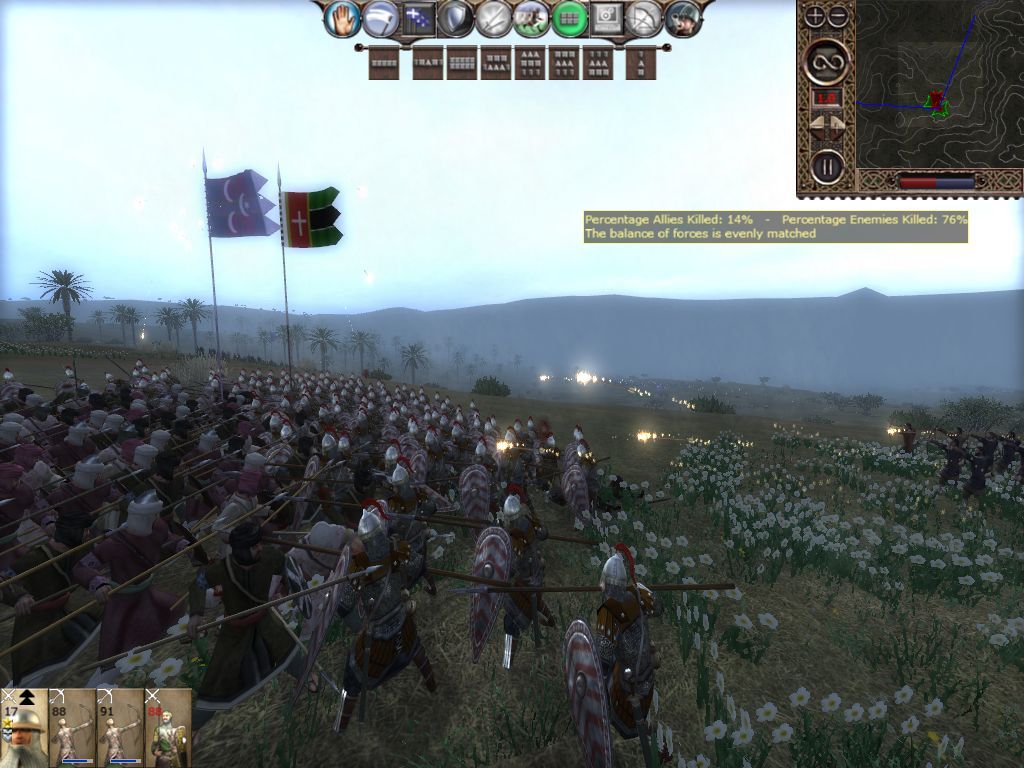
Despite the presence of some professionals the majority of the Roman force is composed of poorly trained if well equipped militia Kontaratoi and there is a considerable lack of leadership and no cavalry. Masud bodyguard is able to take full advantage and despite only a small accompanying force of infantry Masud wins a total victory.
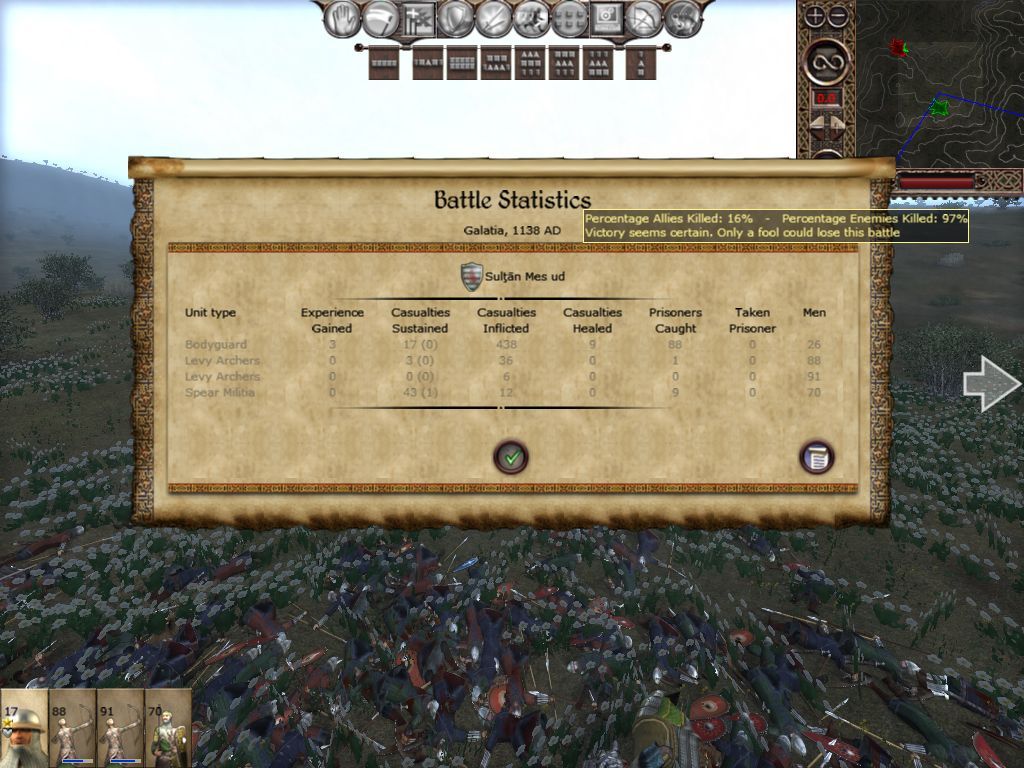
The main force of the Roman army is composed of heavy cavalry with Turkomen tribes allied to the Romans and sits before the walls of Angora waiting in vain for the infantry to arrive.

A message arrow shot over the walls from a Seljuk messenger about the loss of the Roman infantry encourages a sally by Hasan who commands the garrison.

The Seljuk archers under steady Seljuk command by Hasan and holding the high ground decimate the Turkoman cavalry opposing them with relatively light losses.
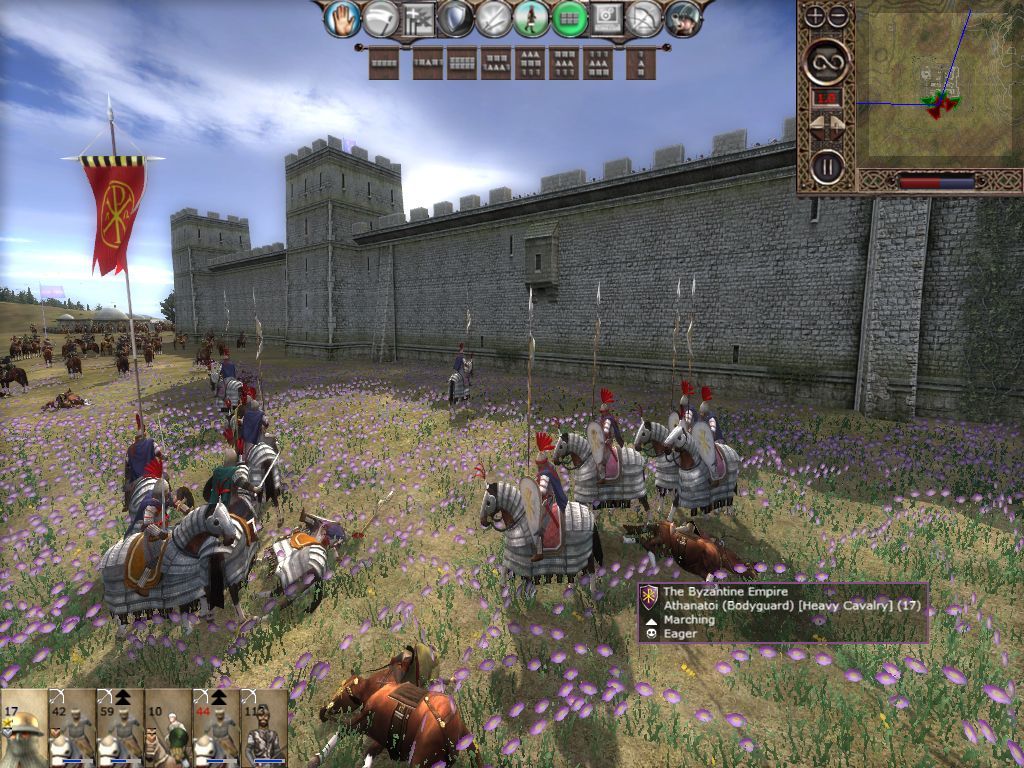
The heavy Roman cavalry purse the lightly armored Seljuks who retreat under the walls of Angora where Turkic tribesmen armed with javelins manage to kill some of the Roman cavalry below before the cavalry pass out of range.
Hasan is forced to withdraw to restock his arrows and the battle ends in a tactical draw but a strategic Seljuk victory as the Romans are now without infantry or light cavalry support and will be forced to break off the siege.
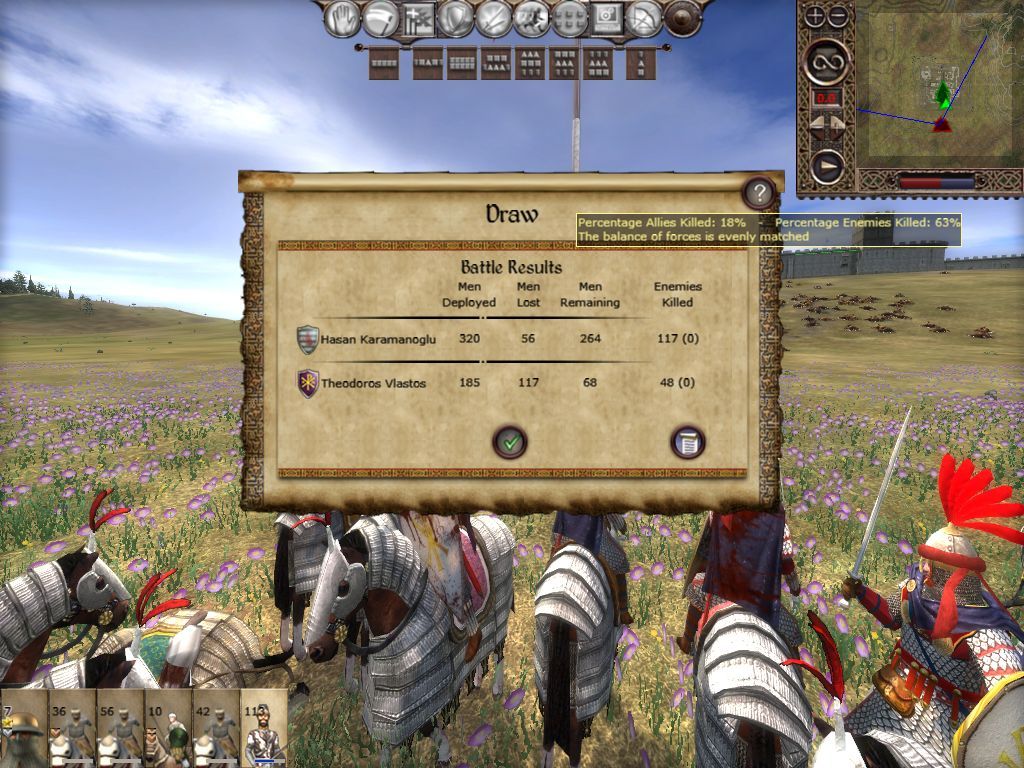
Just to remove any doubt, Mahmud a recently promoted commander from Kayseri garrison arrives from the east and easily defeats another group of Roman infantry on their way to Angora from Sivas.
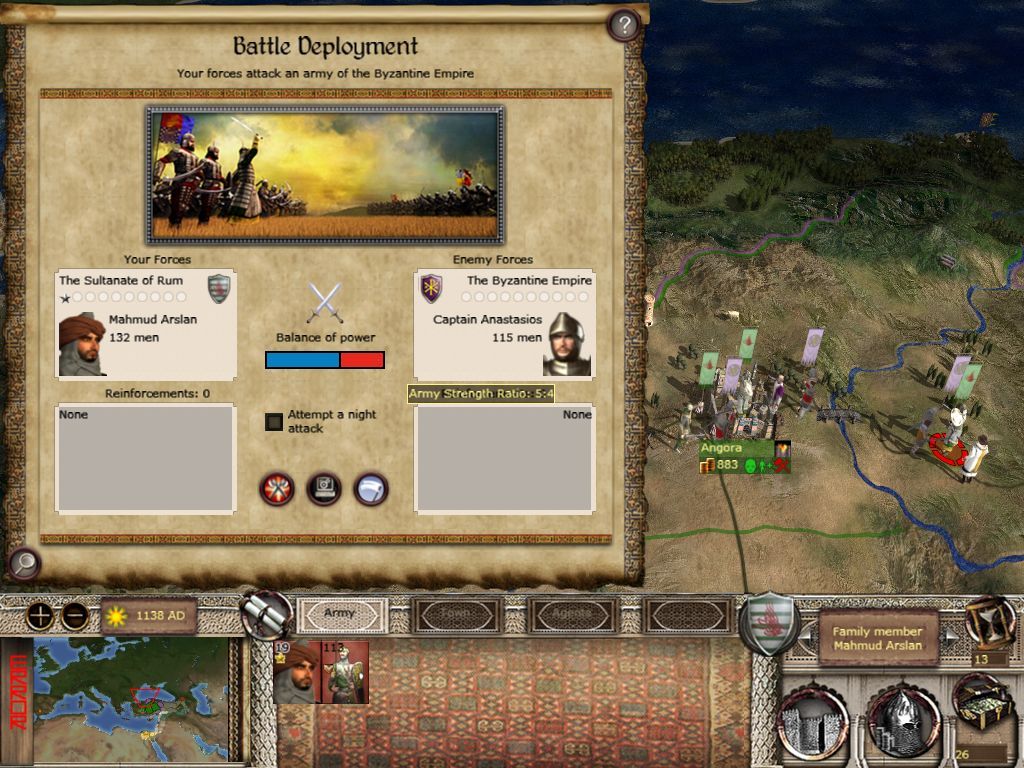
Kilic has lifted the siege of Malatya and hurried north and finds a nearly deserted Sivas as the Romans had rushed the garrison out after the recent defeats near Angora. With the war having drained the state treasury and to boost the morale of his army, Kilic orders the sack of Sivas with Masud's full support.
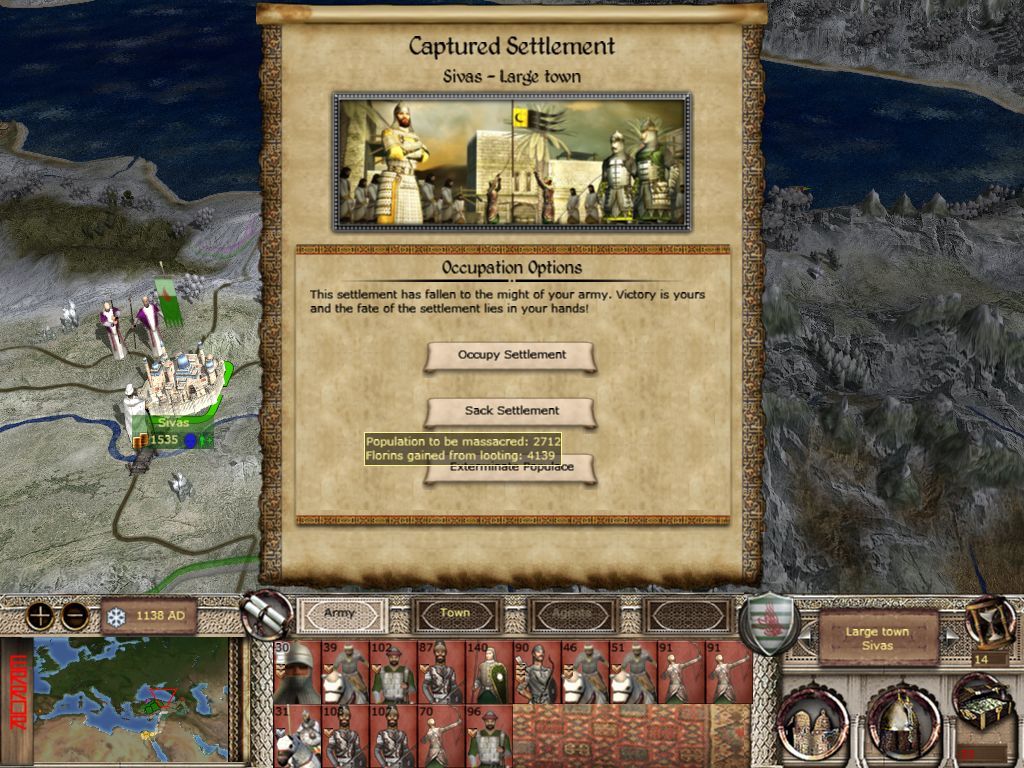
Leaving a garrison strong enough to keep order in Sivas Kilic advances as quickly as possible to Sinope- a small fortified town on a peninsula of the Black Sea which has withstood many past Turk attacks.

Storming the walls Turkish archers capture the gate as a feint attack on another gate had occupied the small Roman garrison.
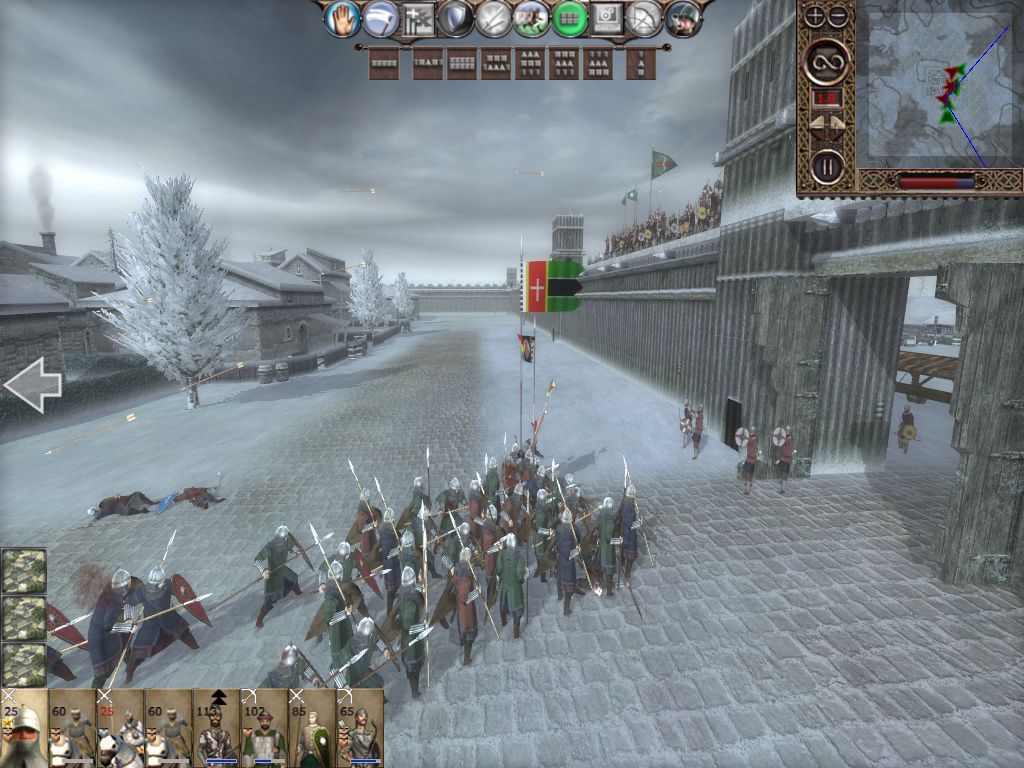
With an open gate Kilic's army is able to fight the Romans through the streets of the town killing every last one in a frenzy of battle rage.

The next month a Roman army appears outside the walls of the still unsettled town... Kilic decides to meet the Romans in the field.

The Romans have brought limited cavalry support which is quickly dealt with and then the infantry are quickly overwhelmed.

This battle demonstrates to Kilic that with a strong cavalry advantage the infantry are best left in garrison though perhaps Kilic is too quick to make such assumptions...

To keep the local Greek inhabitants calm Kilic offers the Roman survivors up for ransom. Governing a region so far from Konya with limited Seljuk support is a test for Masud's expanding realm.
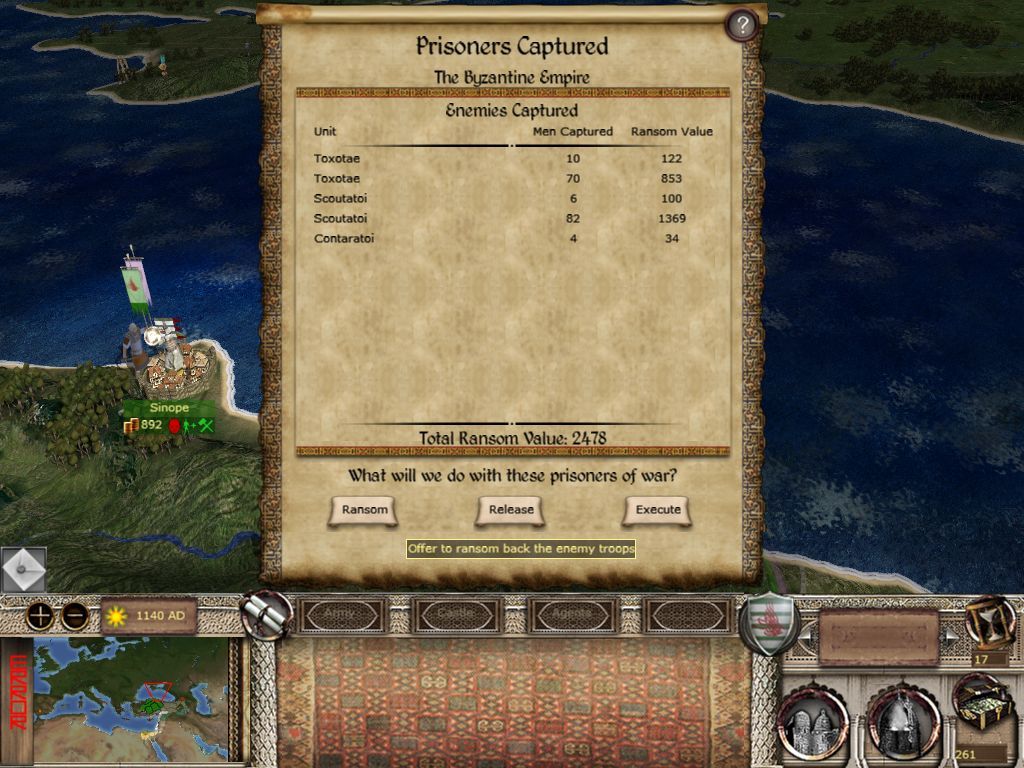
Immediately following the Roman defeat outside Angora, Masud had gathered as many men as he could to advance upon the large Roman city of Attaleia while the Romans were still reeling. Storming the walls against a small garrison the city is put to the sack as punishment to those Greeks who had supported the recent Roman aggression.
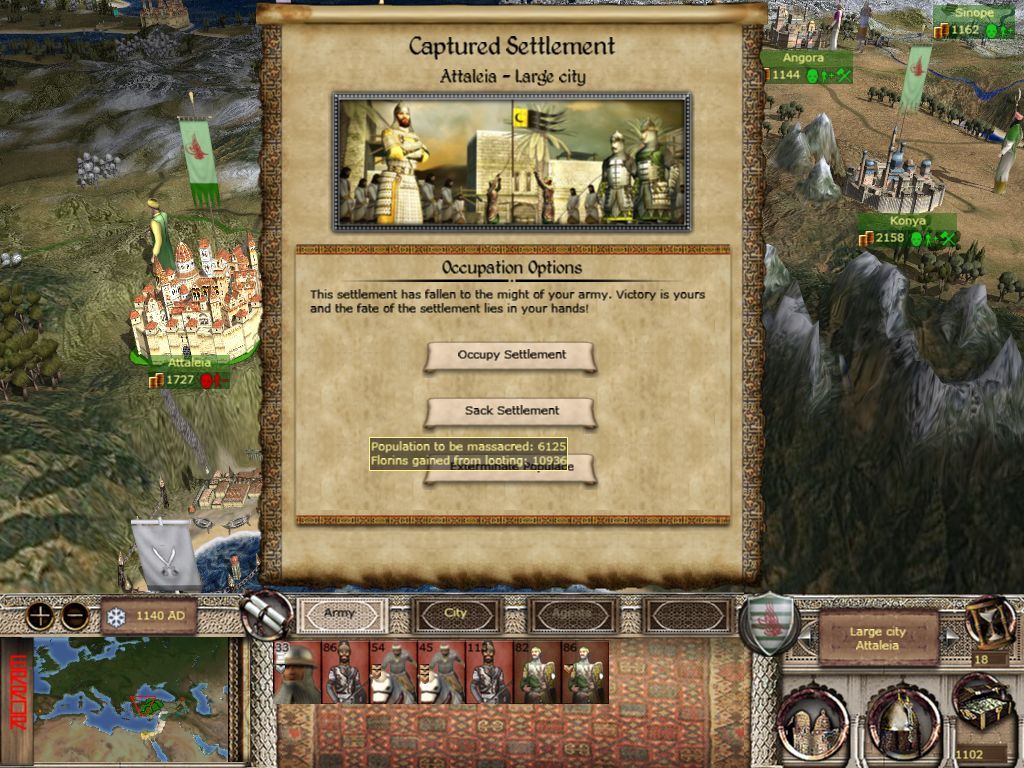
While Hasan is following Masud's orders to establish a network of watch posts and lookout towers along the border with the Romans, the survivors of last year's Battle of Angora are spotted on the Roman side of the border, seeking to make a name for himself by defeating the Roman heavy cavalry- Hasan crosses the border with a picked force of Turkic cavalry.
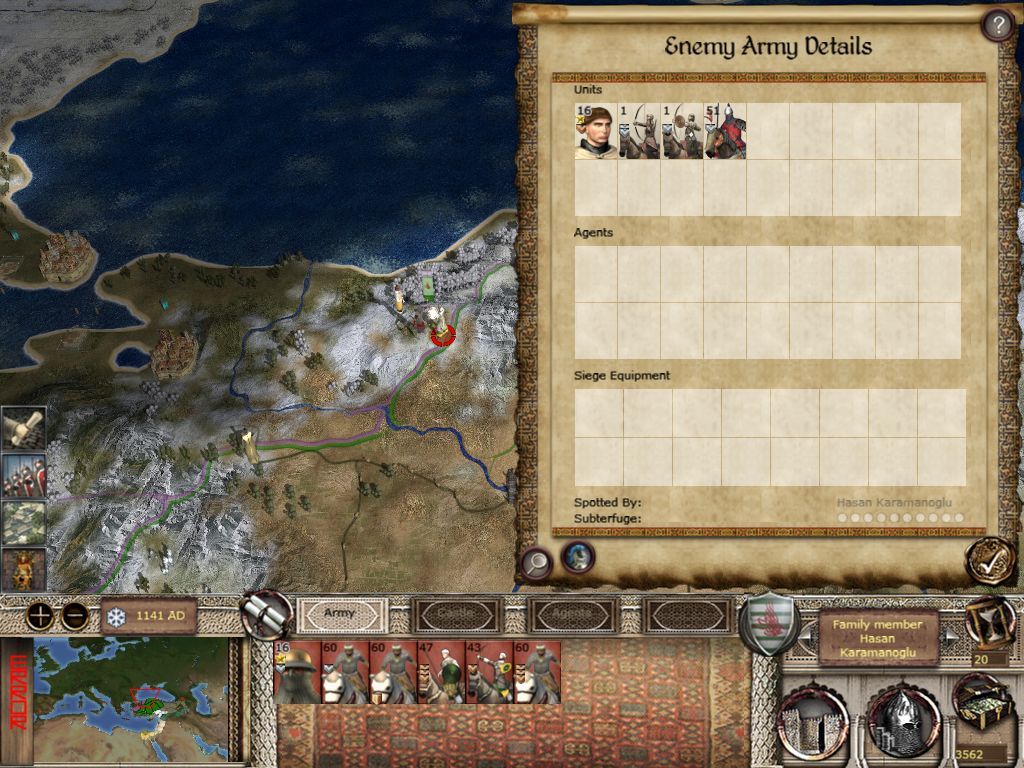
The Roman heavy cavalry is nearly impossible to defeat in melee but its slow speed under all that armor allows Hasan to use his lighter cavalry archers to harass and expend all of their arrows against a helpless foe.

Few of the heavy cavalry fall to the arrows and Hasan orders his medium lancers to run down the Roman cavalry despite the risks.
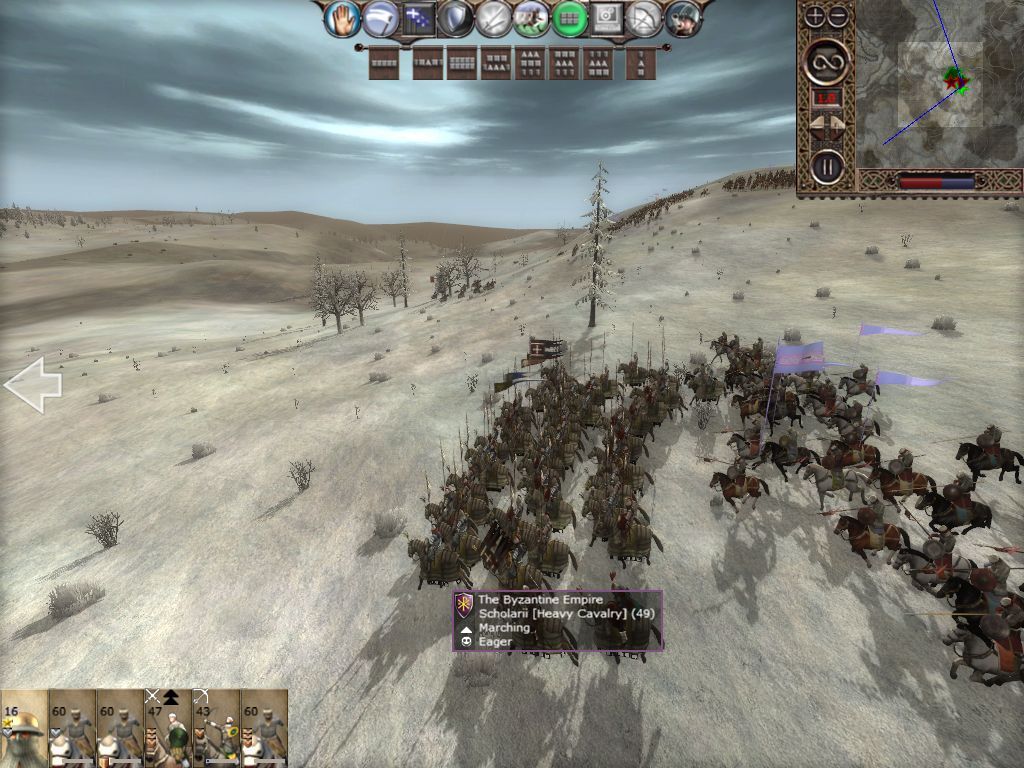
Meanwhile the Turk light cavalry has surrounded and charged the Roman commander from all sides, after a bloody fight the Roman general's bodyguard are slain and he is captured by the Turks!
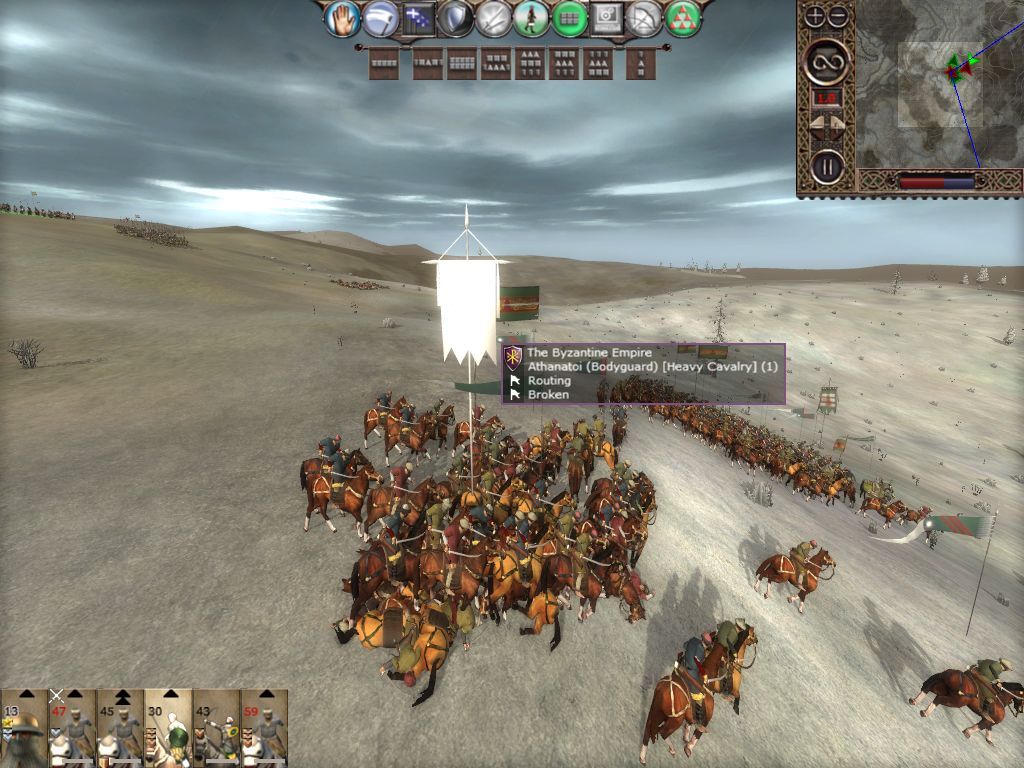
With the capture of their leader the remaining Roman cavalry attempt to leave the field- at first in good order but under constant pursuit and harassment by the Turks the Roman's eventually panic...
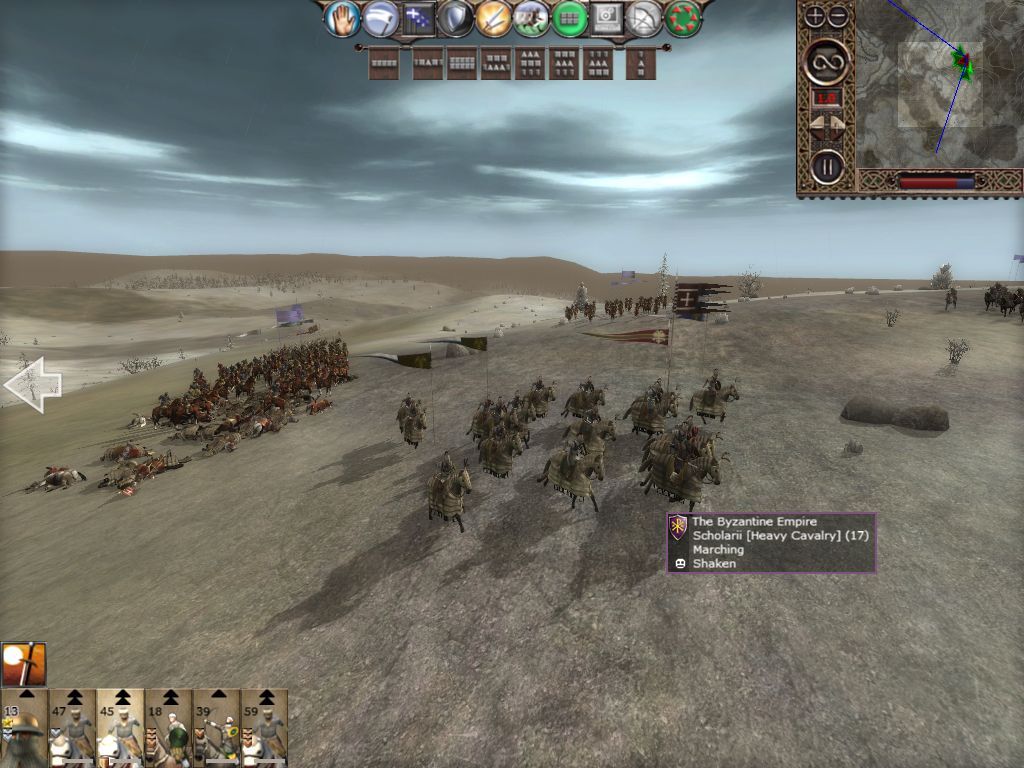
With heavy losses Hasan has managed to win an important morale victory- it is possible for the Turks to defeat the heavy Scholari kataphractoi of the Romans and the Turks need not remain afraid to engage the Romans merely with the presence of such armored cavalry.

The victory of Hasan brings him to the favorable attention of Masud who marries one of his own daughters to the young commander. Firstly as a reward and secondly to retain the man's loyalty where the numerous Turkic tribes and small beyliks and the Danishmends to the east might offer alternative paths of advancement for an ambitious general.
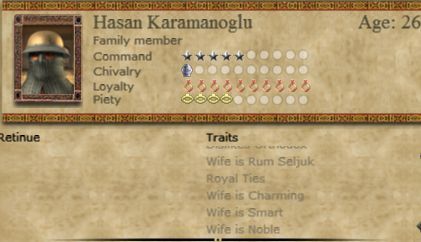
The Roman's are becoming agitated with the recent string of defeats and the Roman Strategos attempts a dangerous undertaking- crossing through Seljuk territory in an attempt to gain audience with the Crusader kingdoms in the Levant.

Copying the tactics of Hasan the Seljuks managed to capture the Roman Strategos in a surprise attack.
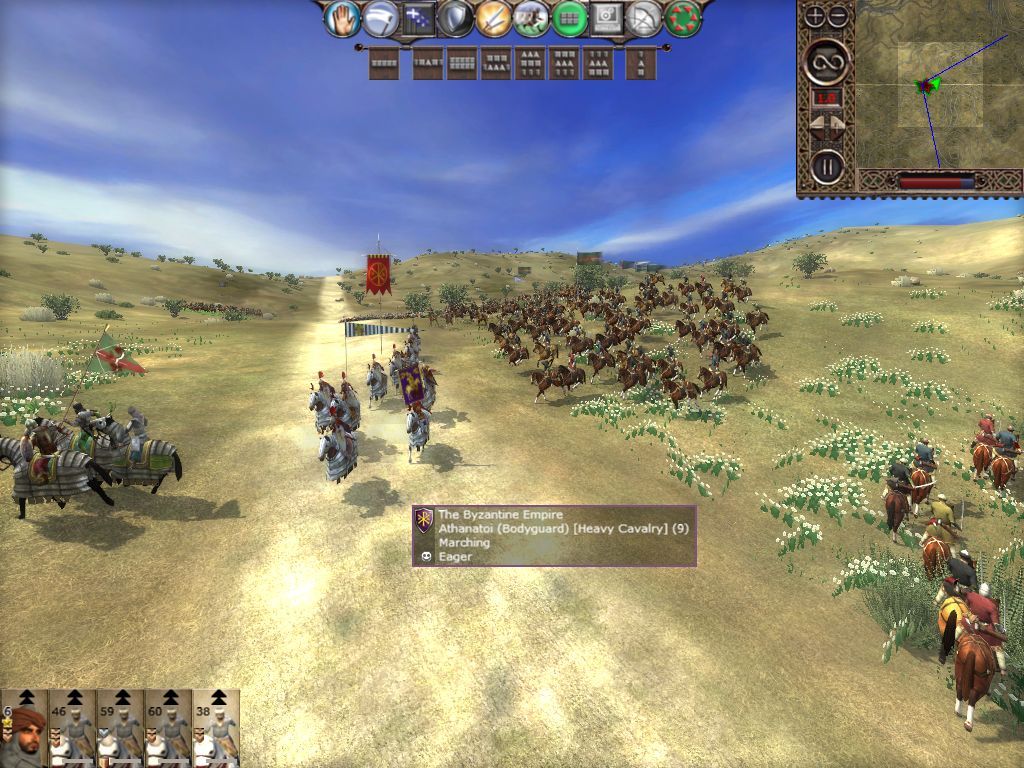
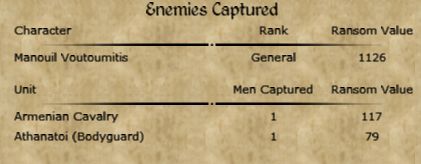
However other diplomatic missions from Constantinople have more luck and the Crusaders prepare for war with Rum. The Normans of Sicily care little for the successes of Rum and seek only to take advantage of the current turmoil of the Romans send their armies to Greece. Masud considers whether a 2 front war is wise, despite the recent successes on the battlefield, Constantinople retains vast resources and spies sent to Trebizond report a strong garrison there. A quick end to this war might be the best course given the distraction provided by the Norman attacks in Greece.
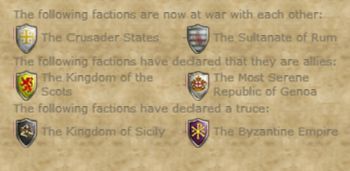
Masud gathers a strong force and marches for Smyrna, an important Roman settlement on the west coast of Anatolia, Masud only plans a raid in force to gain the attention of the Roman Emperor and hopefully a favorable peace. Masud's Seljuk beyliks and emirs also desire peace to consolidate the lands recently gained and raise a substantial payment toward this goal.
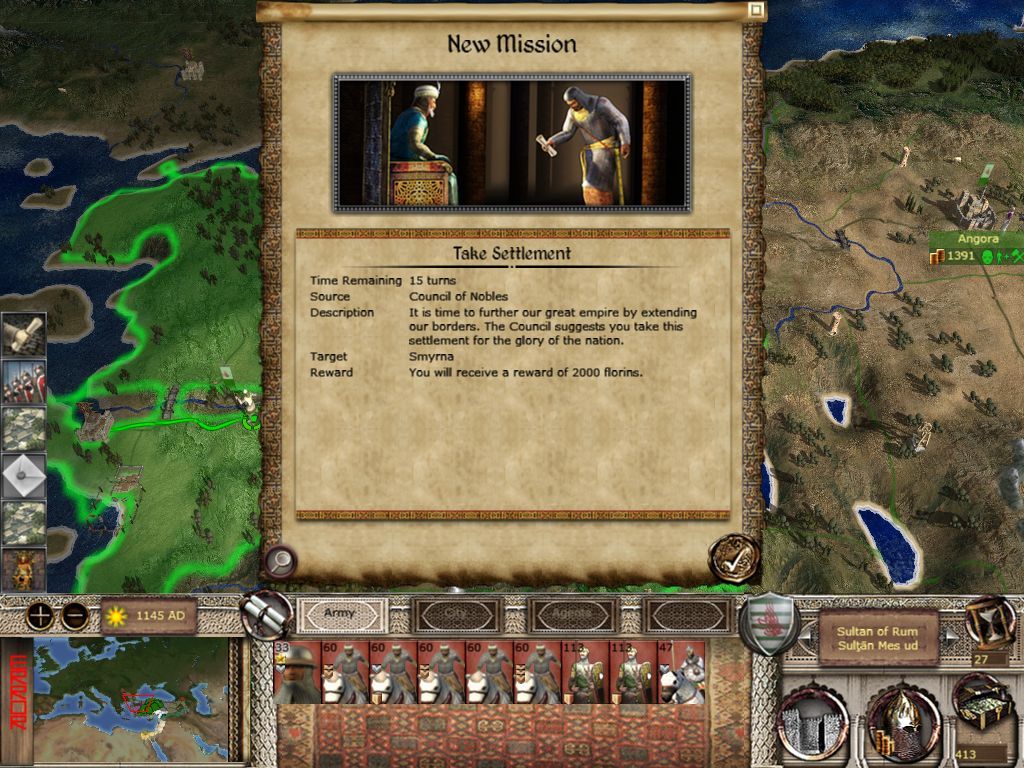
The Roman garrison of Smyrna is small but several Roman armies are on the move to reinforce their weak position- the speed of the Turk movements still catch them unprepared however.
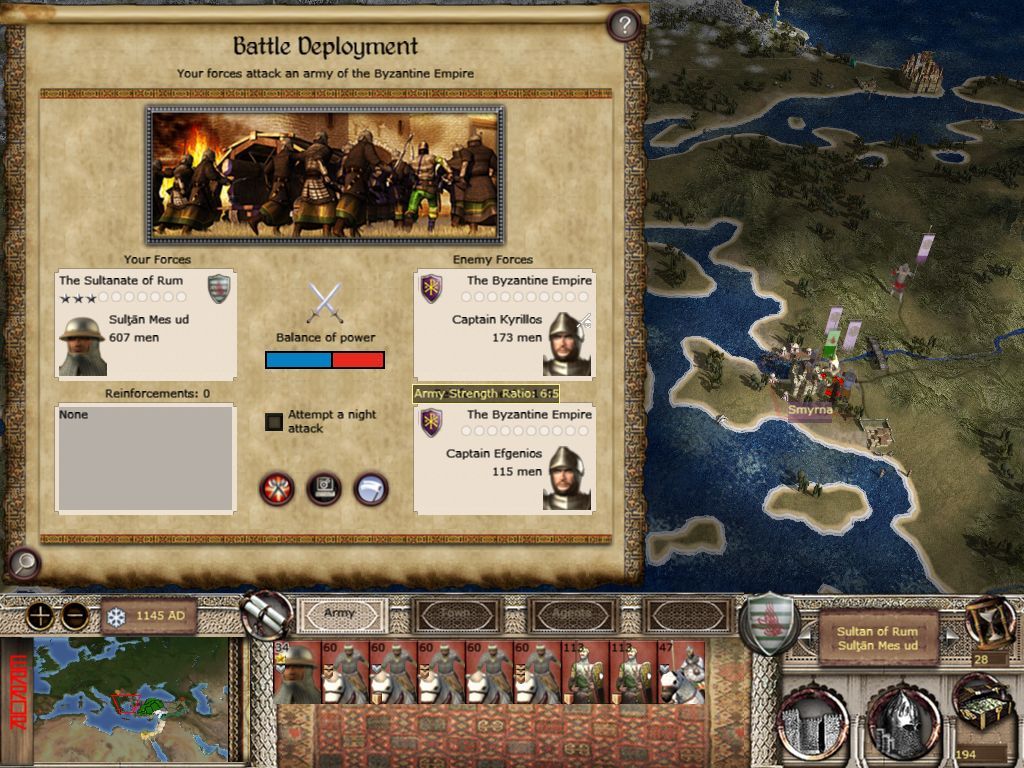
The capture of Smyrna is not difficult despite its strong fortifications due to the small garrison. The Roman reinforcements never arrive, routed in the fields outside the town.
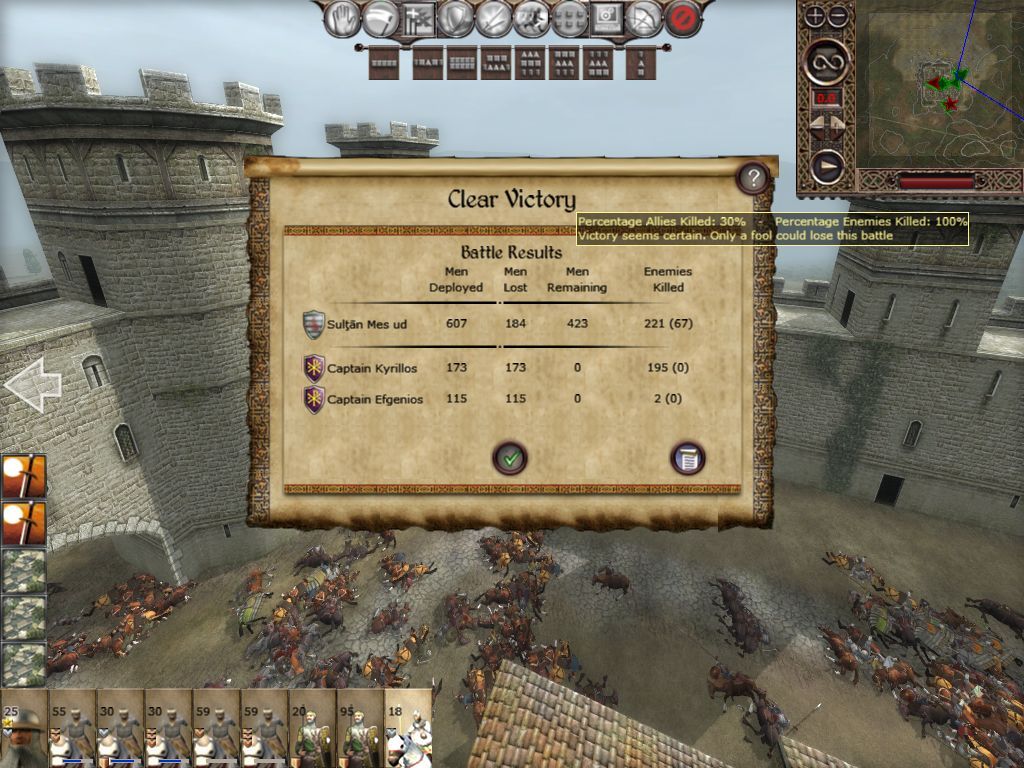
Masud offers peace to the Romans and is surprised to attain a treaty which allows him to keep Smyrna and exact a small payment from Constantinople.
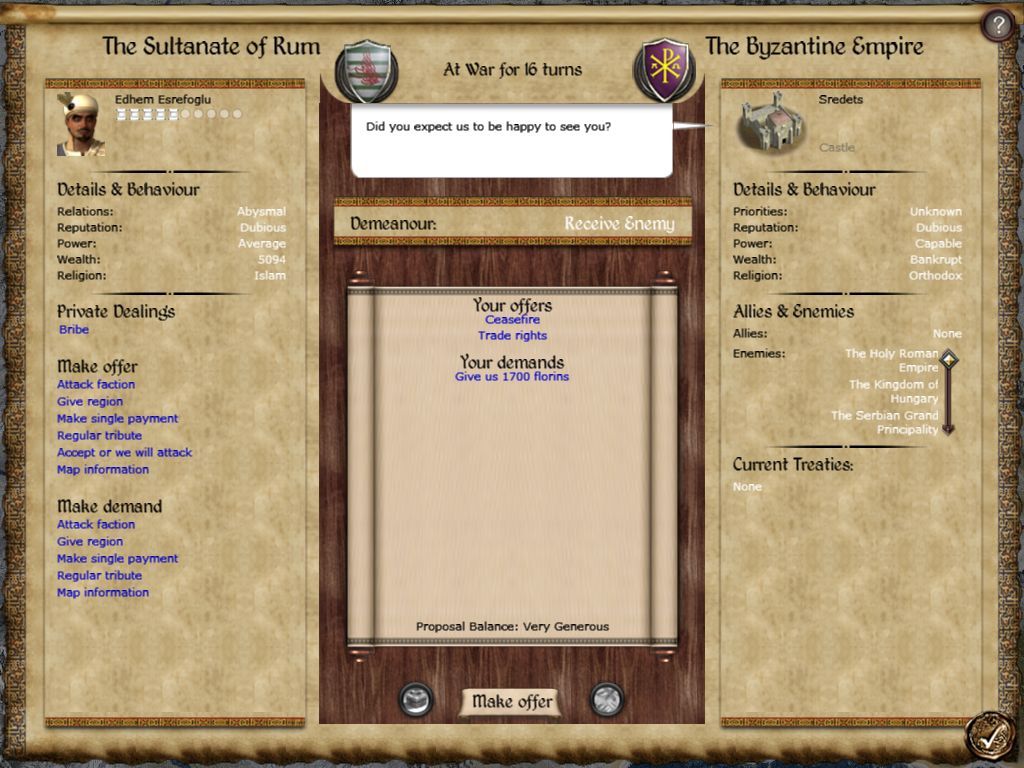
Meanwhile in Armenian Cilicia which the Crusaders have recently added to their dominions and ambitious Seljuk beylik named Berke Koprulu advances on Sis before the Crusaders can concentrate their armies to threaten the Seljuks as Kayseri.
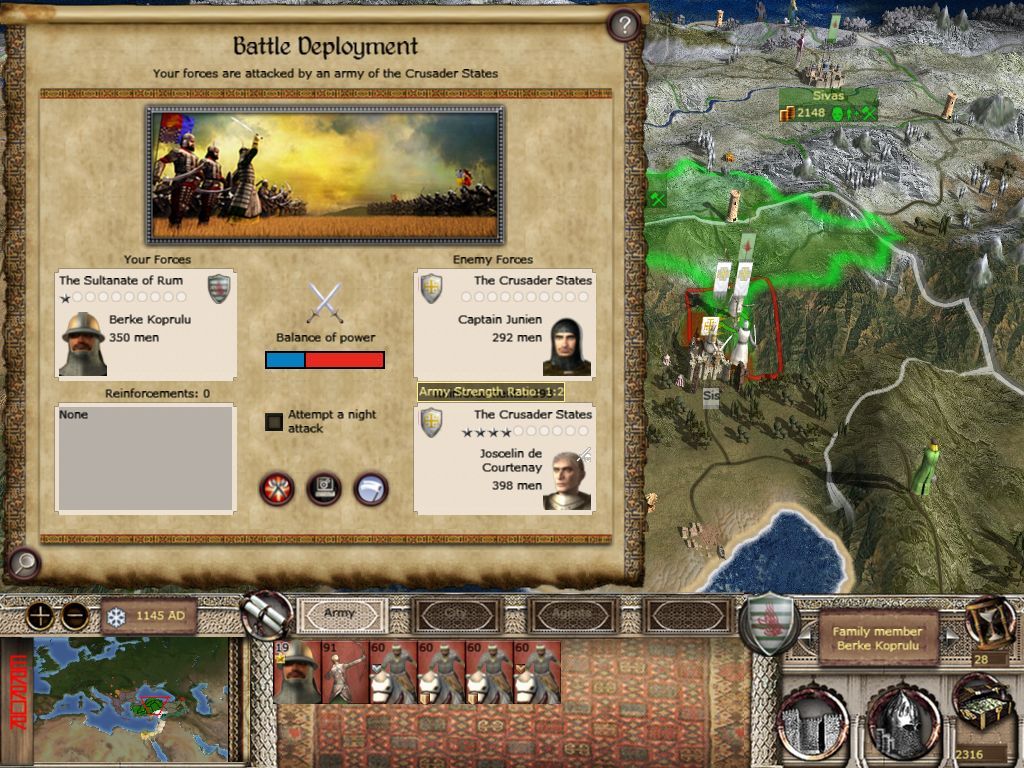
The Crusader army is surprised on the march toward Sis and is composed mostly of Syrian auxillaries with few heavy cavalry, the victory is surprisingly low cost.
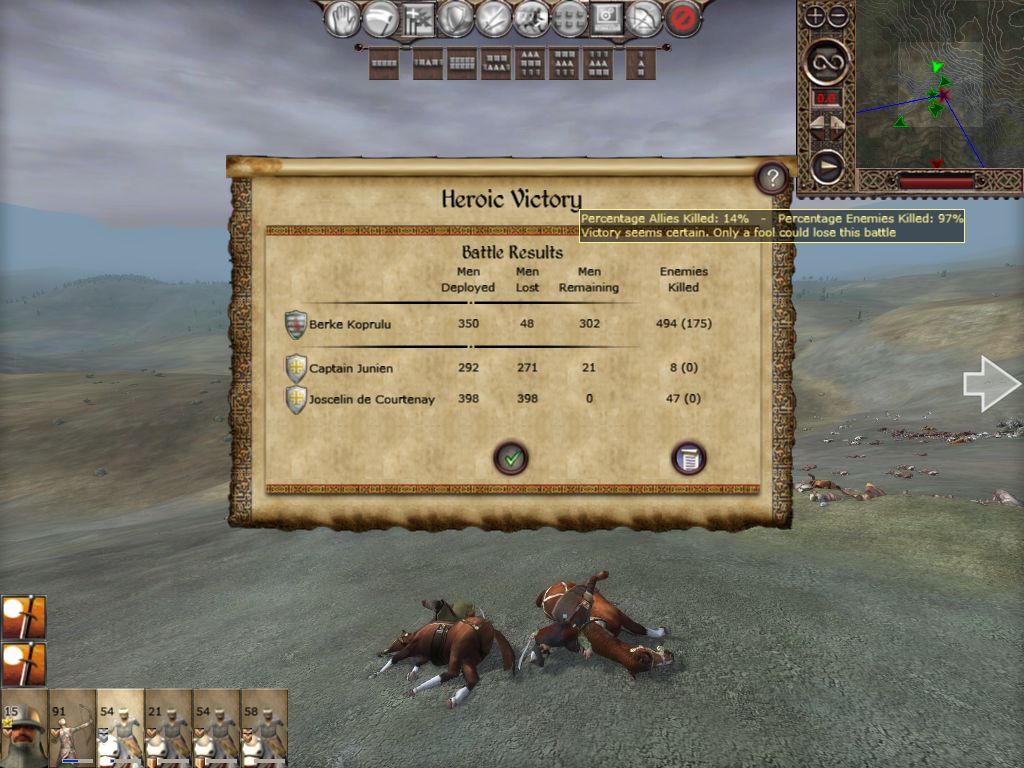
The border watch established by Masud's earlier orders spots the King of Antioch in eastern Anatolia- apparently the King had been unable to pay to ship his army to Spain for the recent Crusade called on Cordoba and now threatens Smyrna from the north- Masud quickly purchases the services of Turkoman tribes in the area and prepares for an expected Crusader attack.
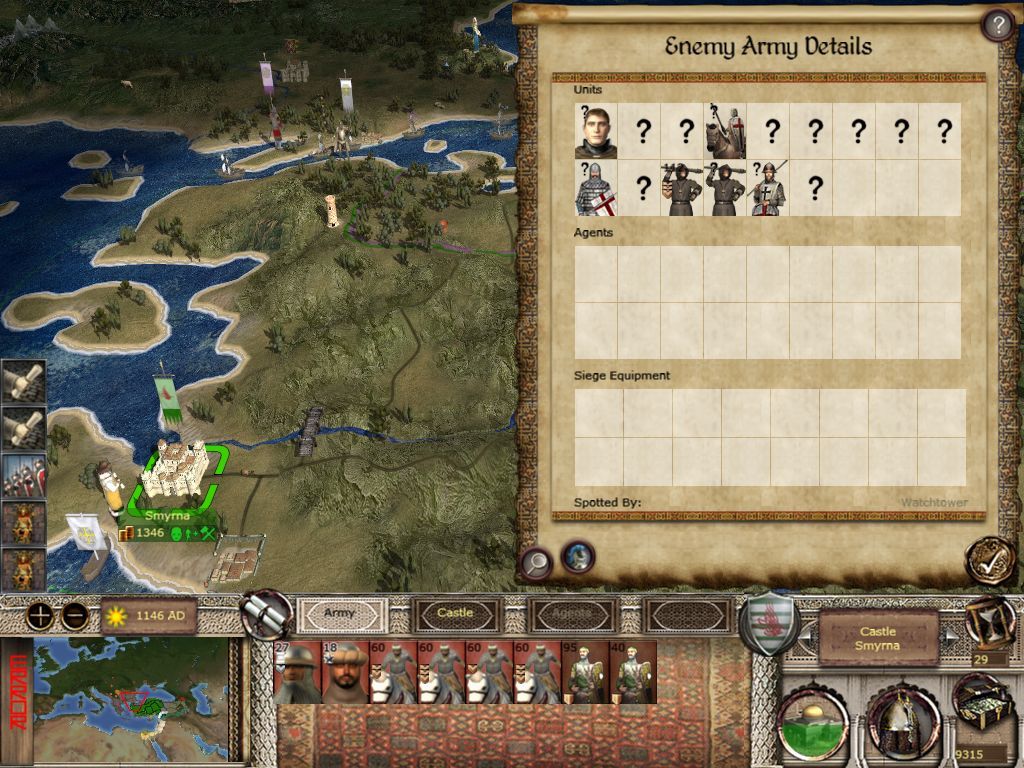
Berke has exposed Crusader weakness and moves to attack Antioch, the seat of Crusader wealth and power in the northern Levant.
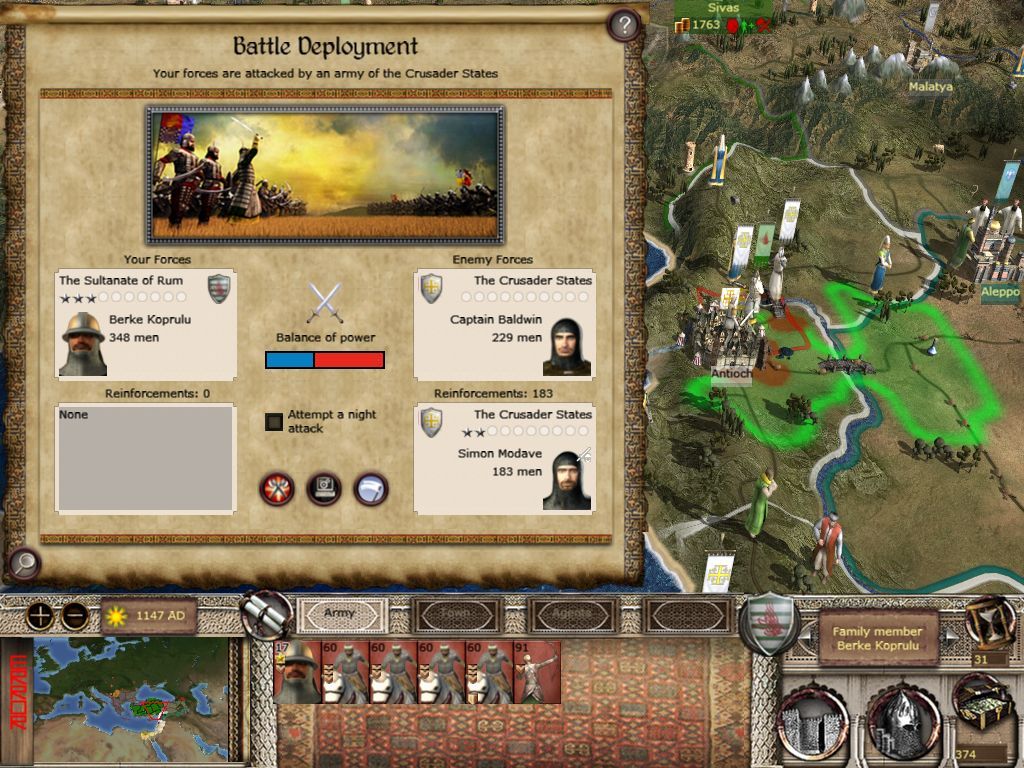
This time the Crusaders have managed to gather some heavy cavalry but as the battle progresses it becomes obvious that the Crusaders fall barely short of the necessary numbers to cause Berke significant problems.

The battle is closer fought than any previously with the Crusaders and Berke decides to only hold Antioch if spies report no further Crusader armies on the march.
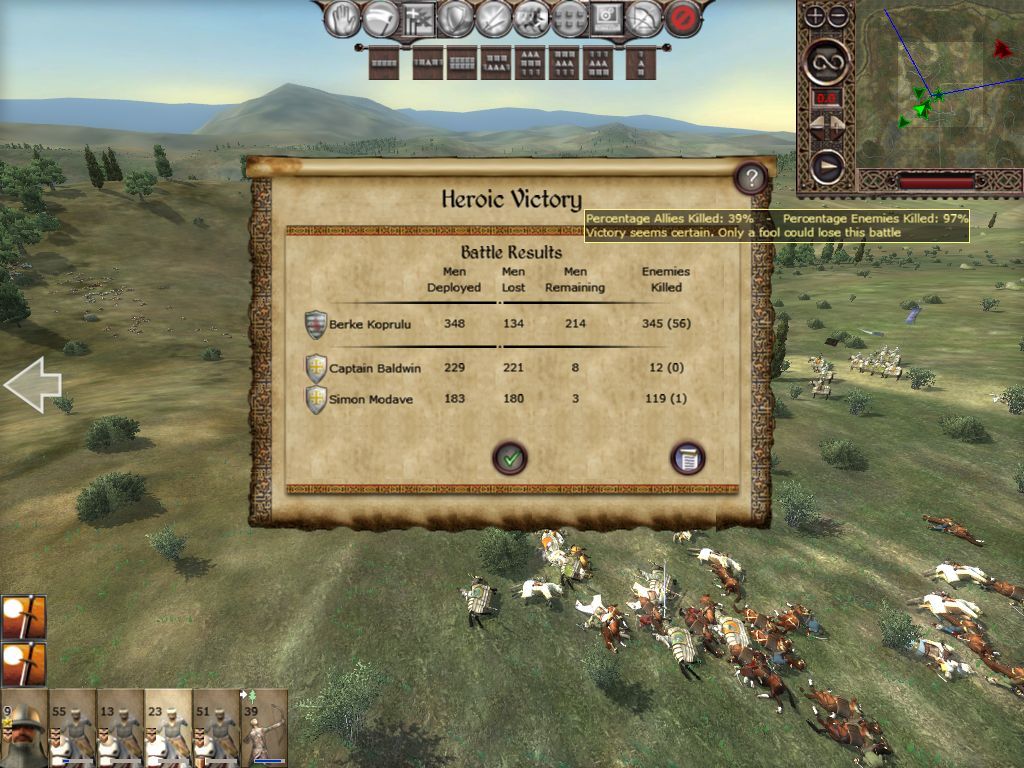
Sacking the city gains needed funds for the Seljuk treasury and if the city is not going to be able to remain in Turk hands it seems the best course.
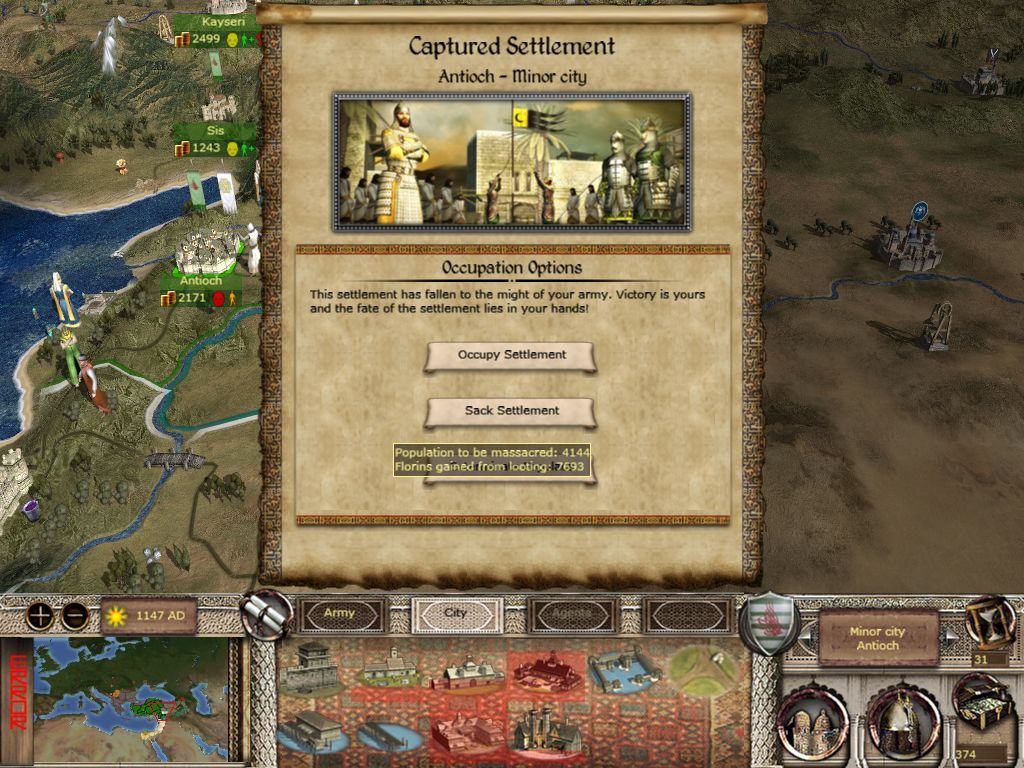
Apparently the King of Antioch finally purchased enough transports to arrive barely too late and lands just outside Tripoli. Berke send word for reinforcements from Sis to arrive as quickly as possible if Masud wishes to hold Antioch.
Meanwhile recent reports from merchants and diplomatic missions abroad give Masud a brief view of the wider world beyond Seljuk borders...
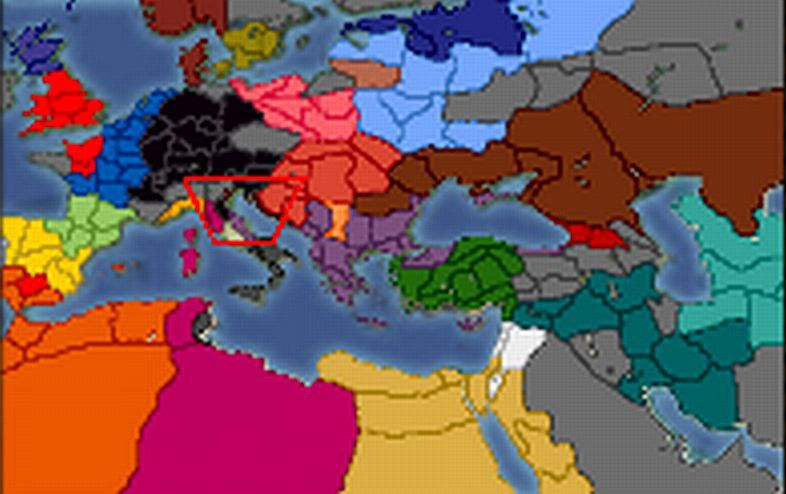
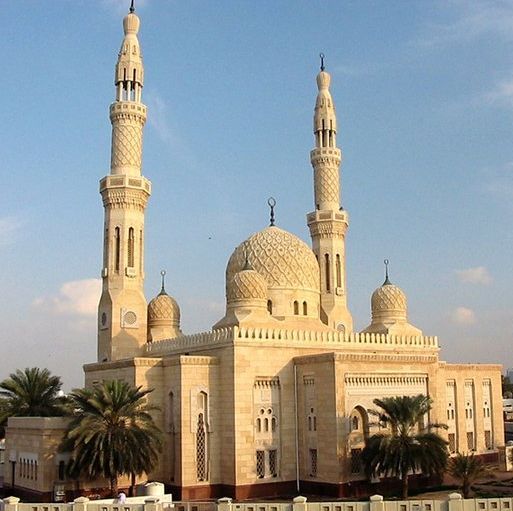





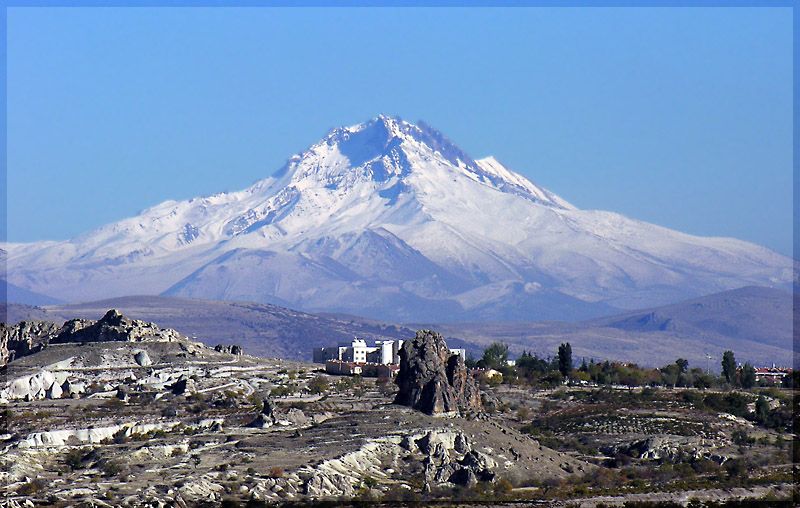



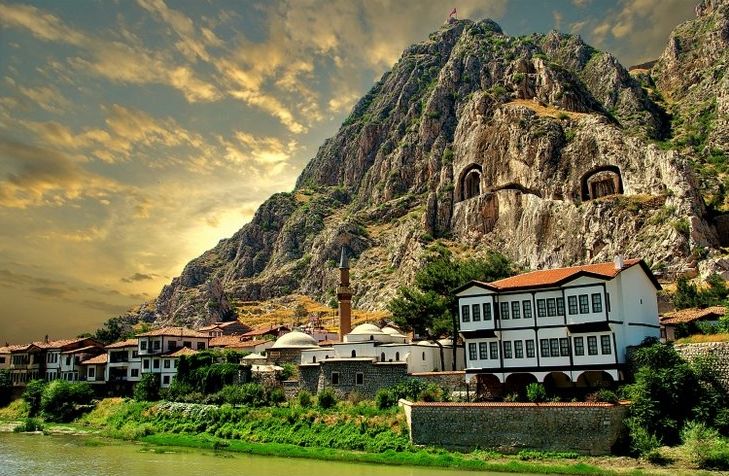

 Reply With Quote
Reply With Quote